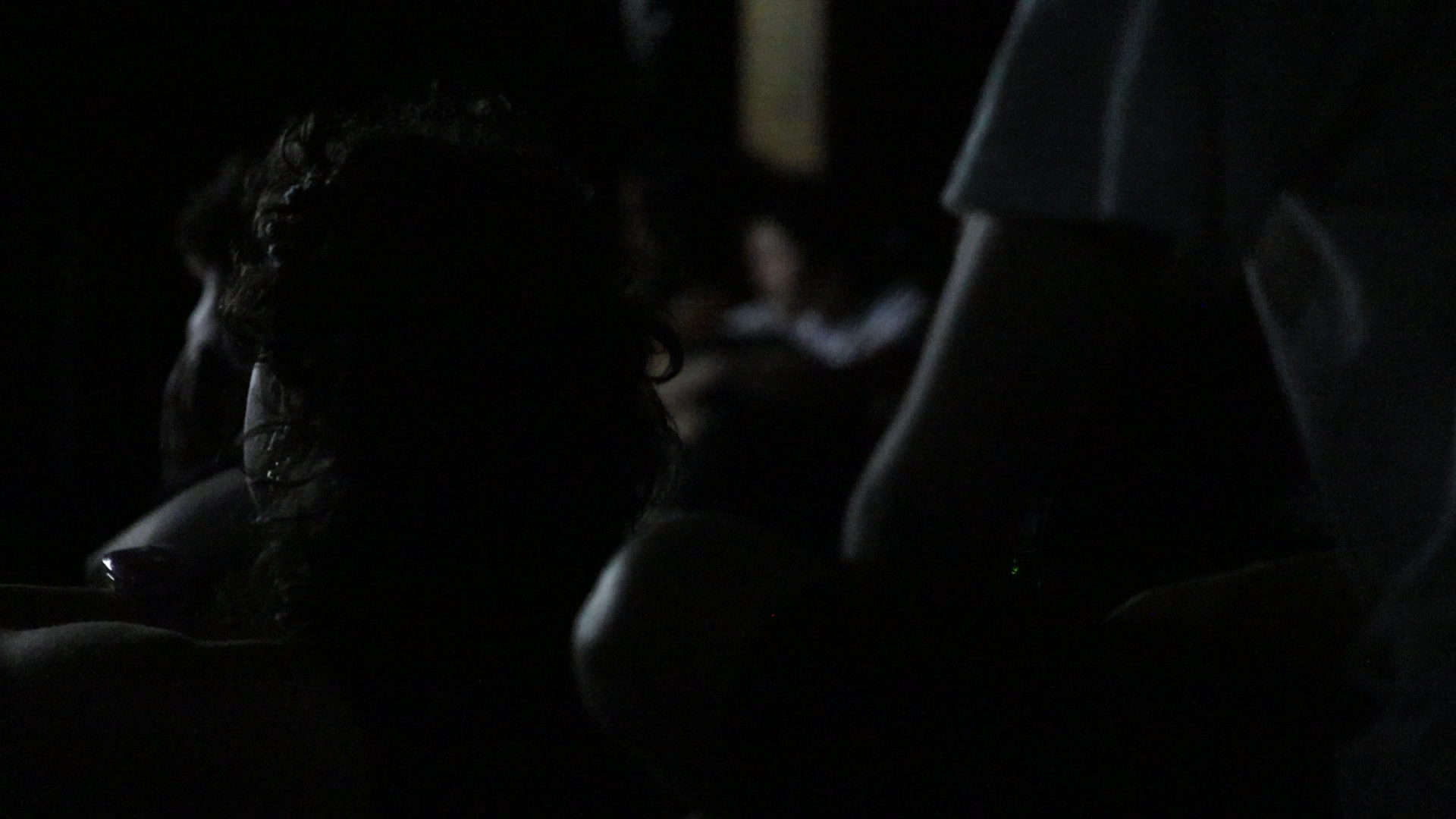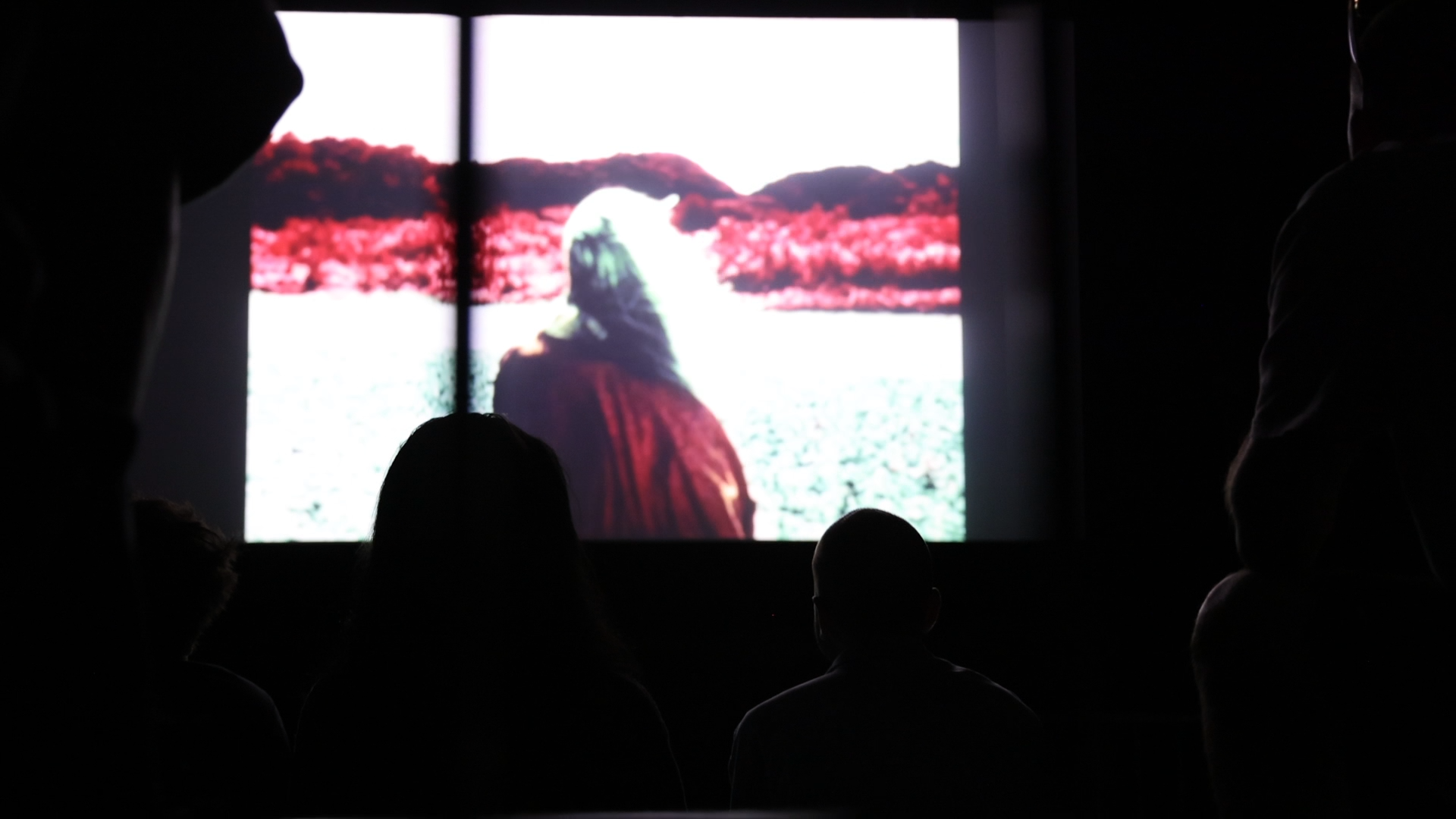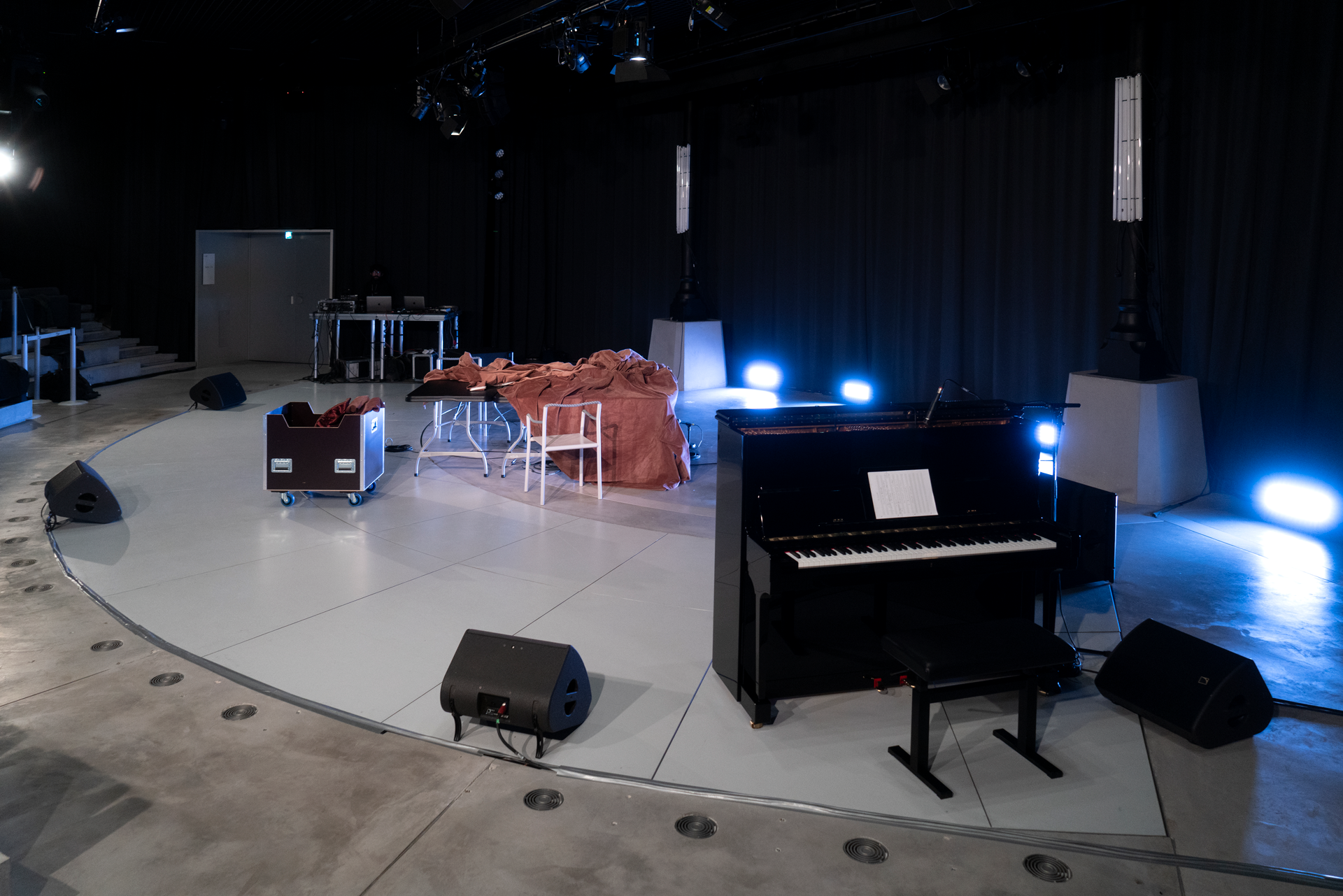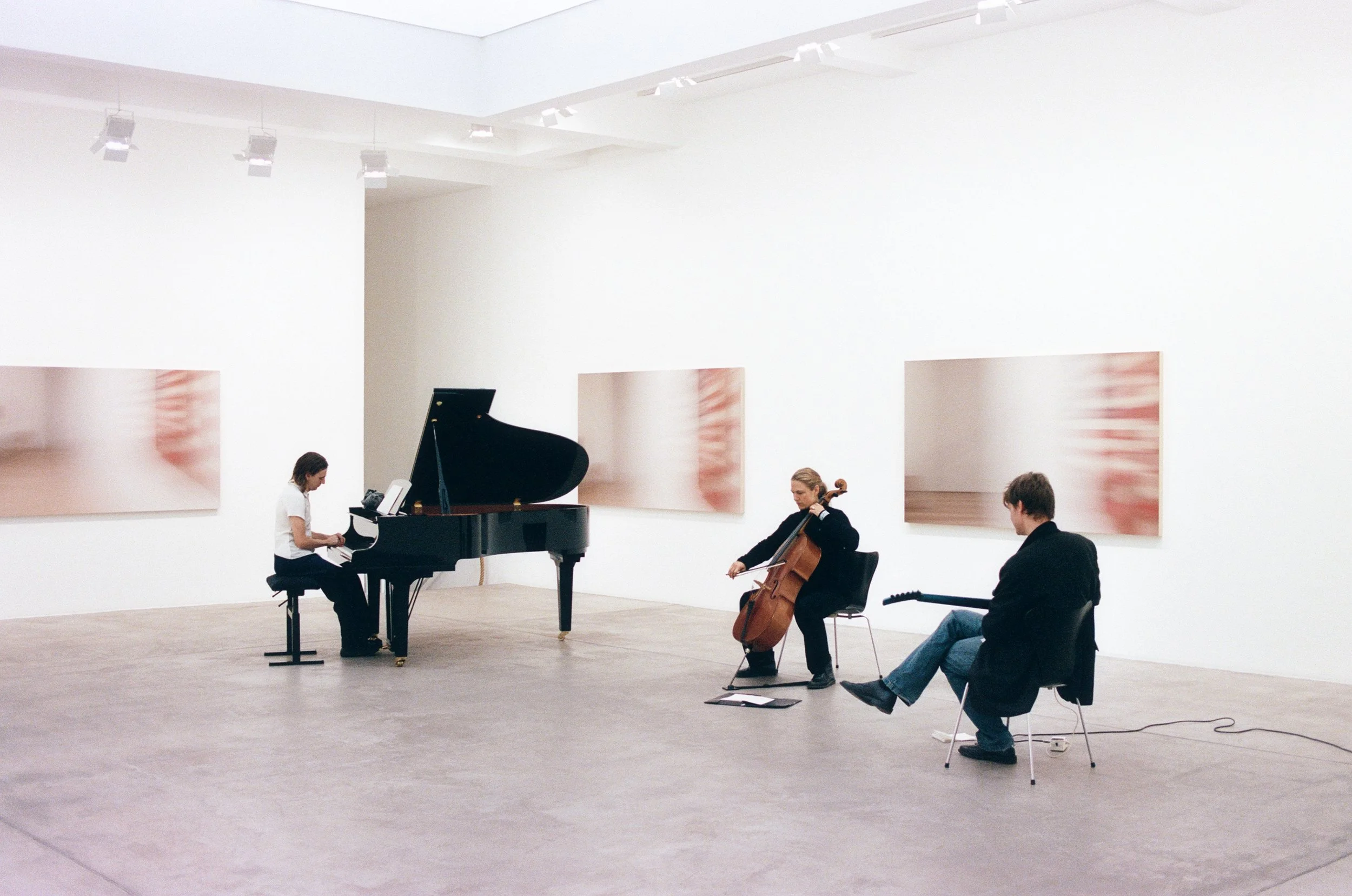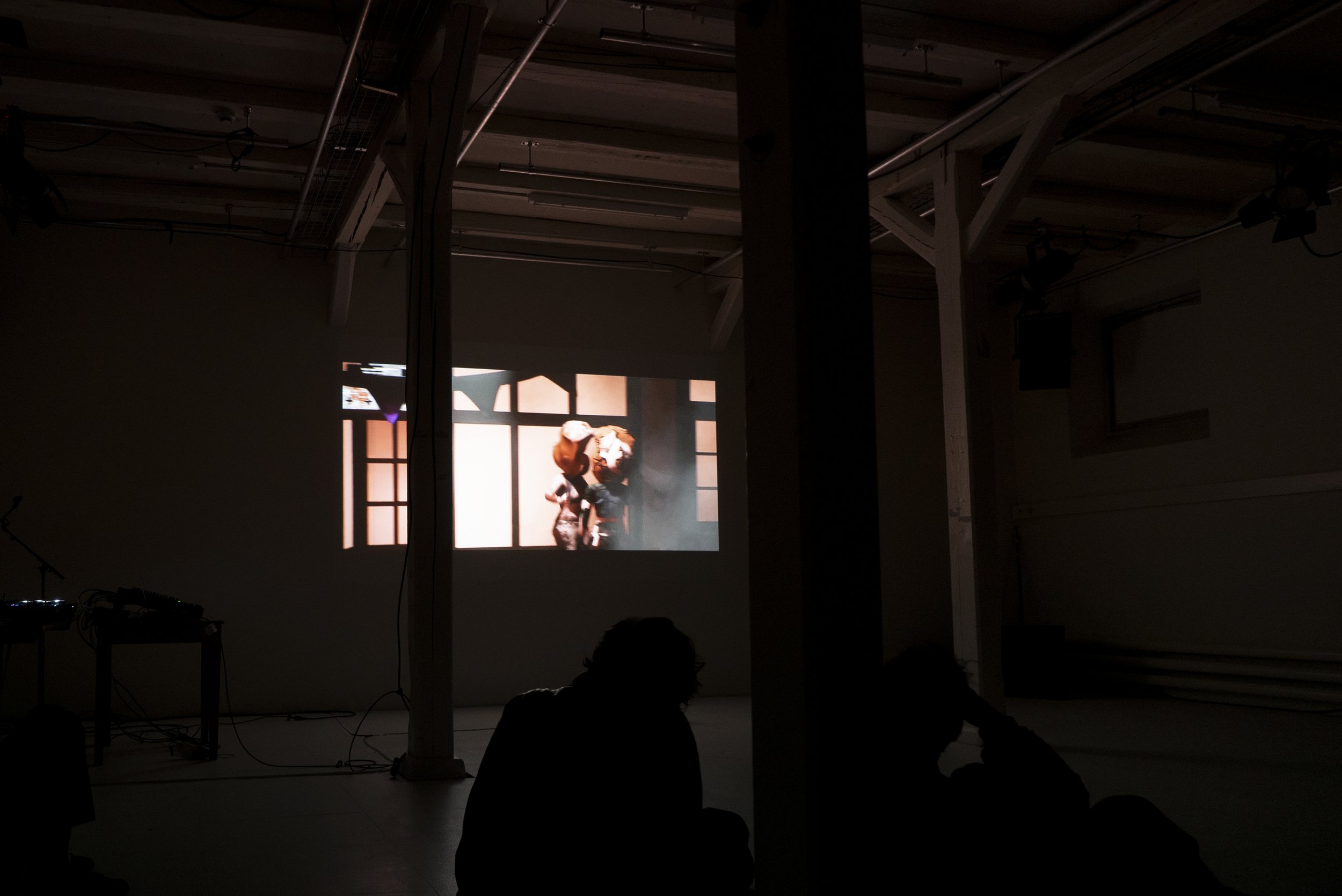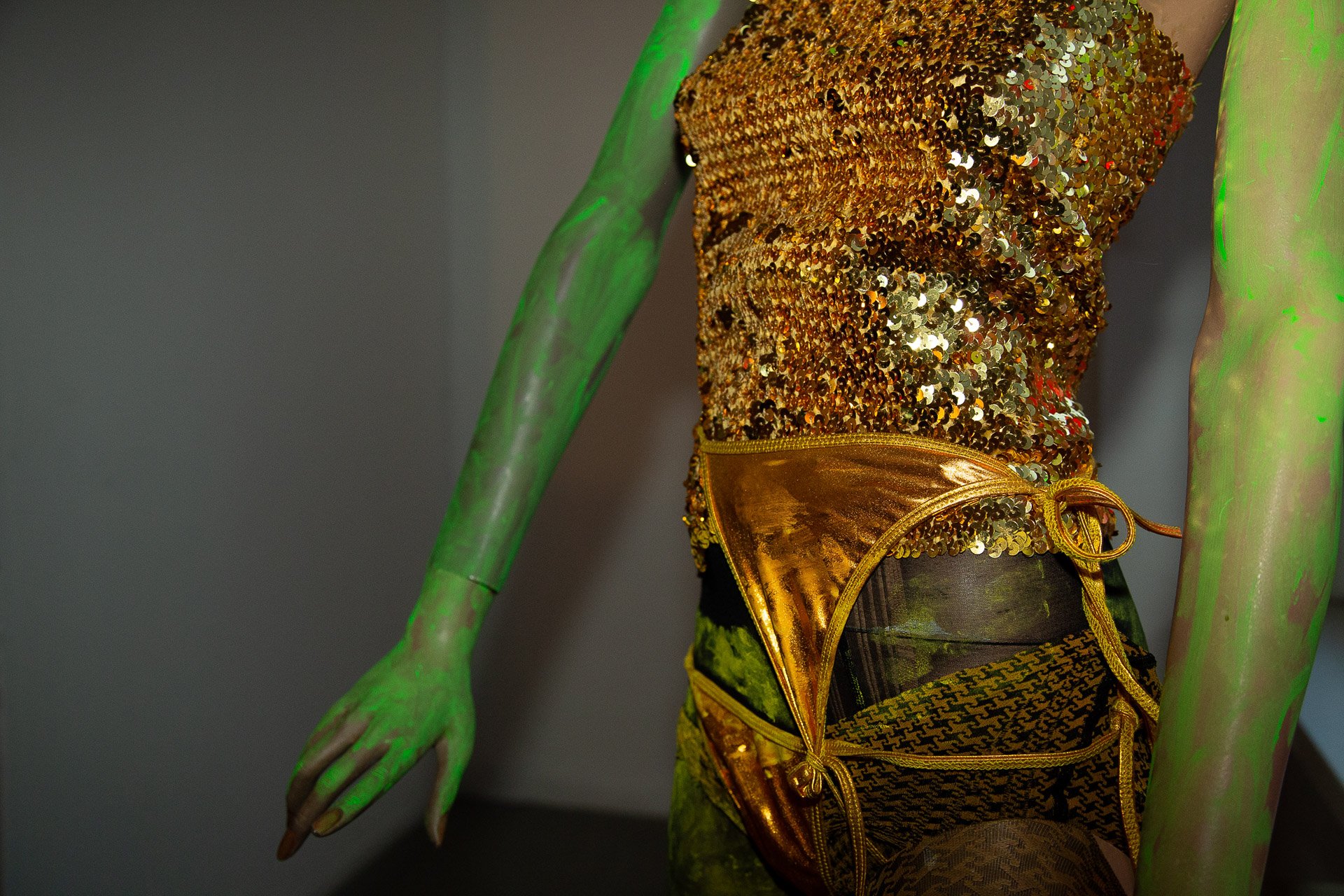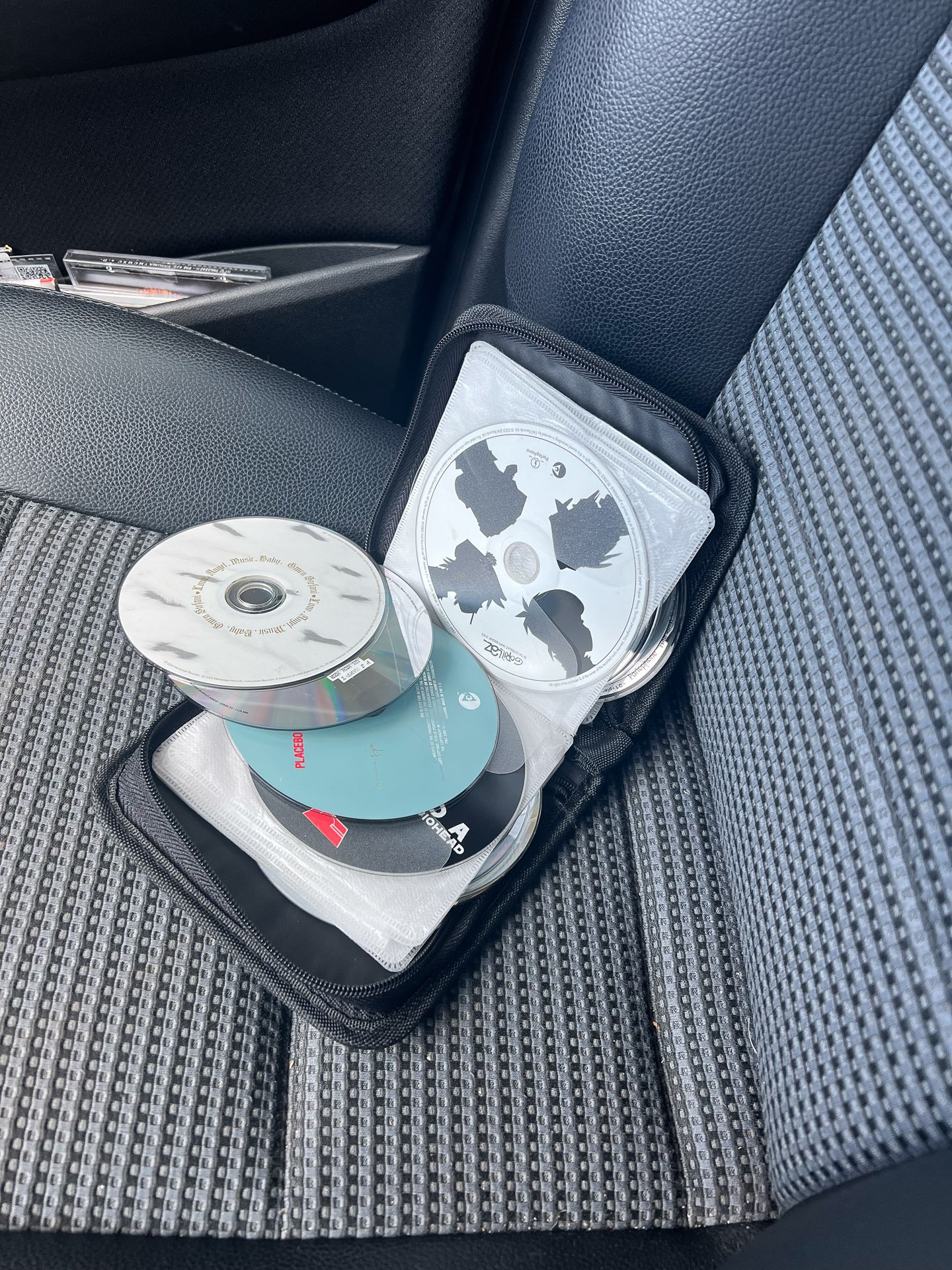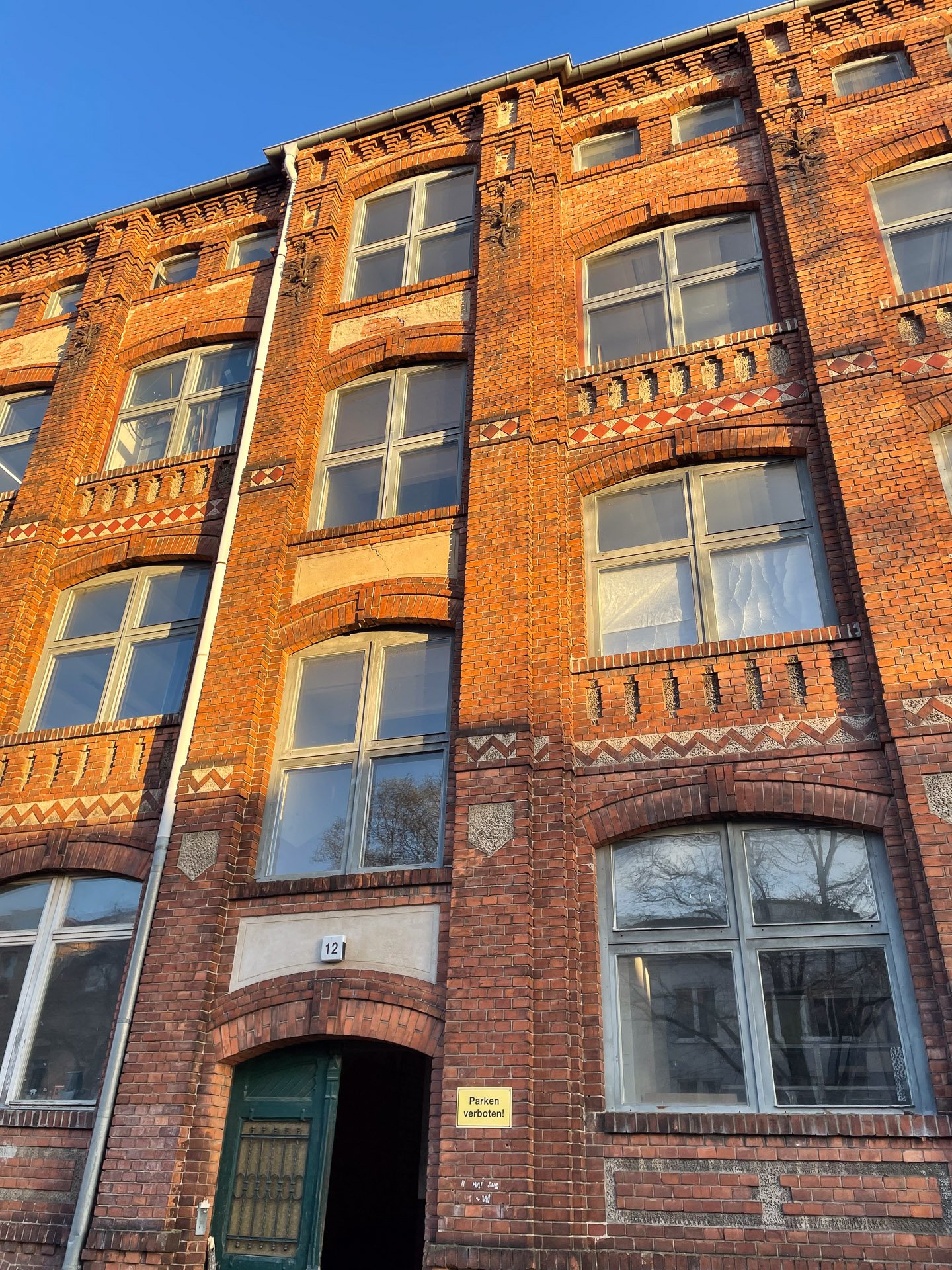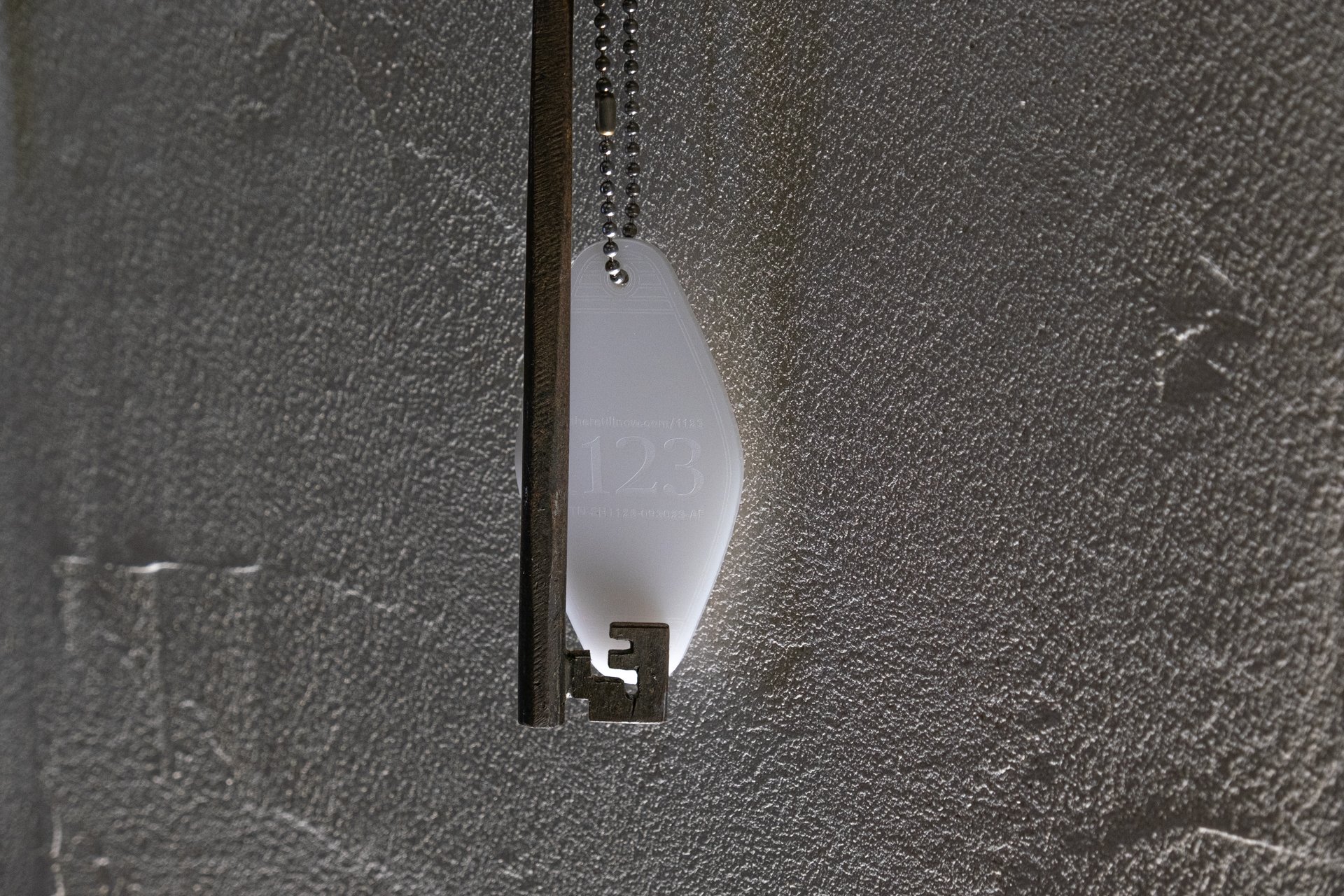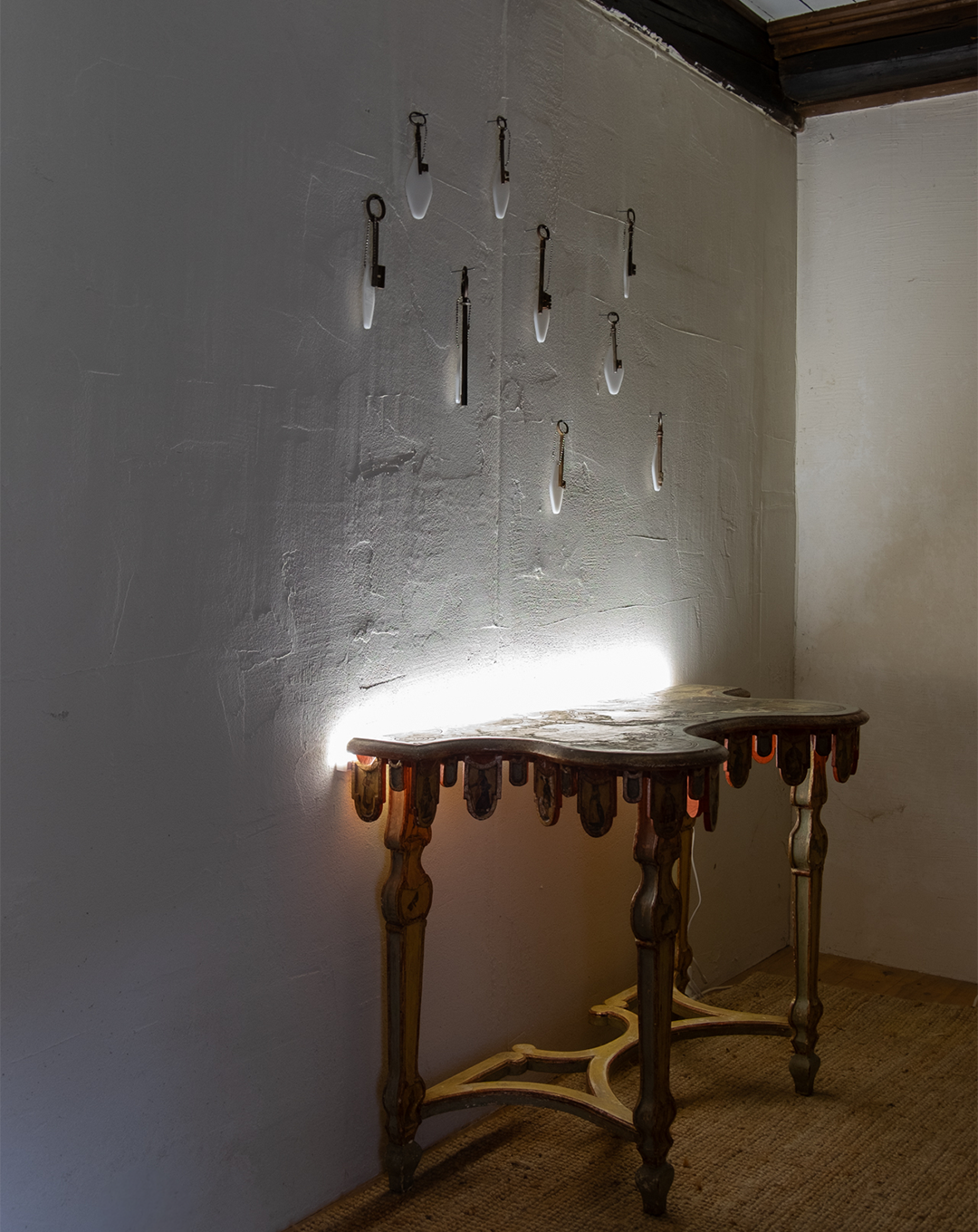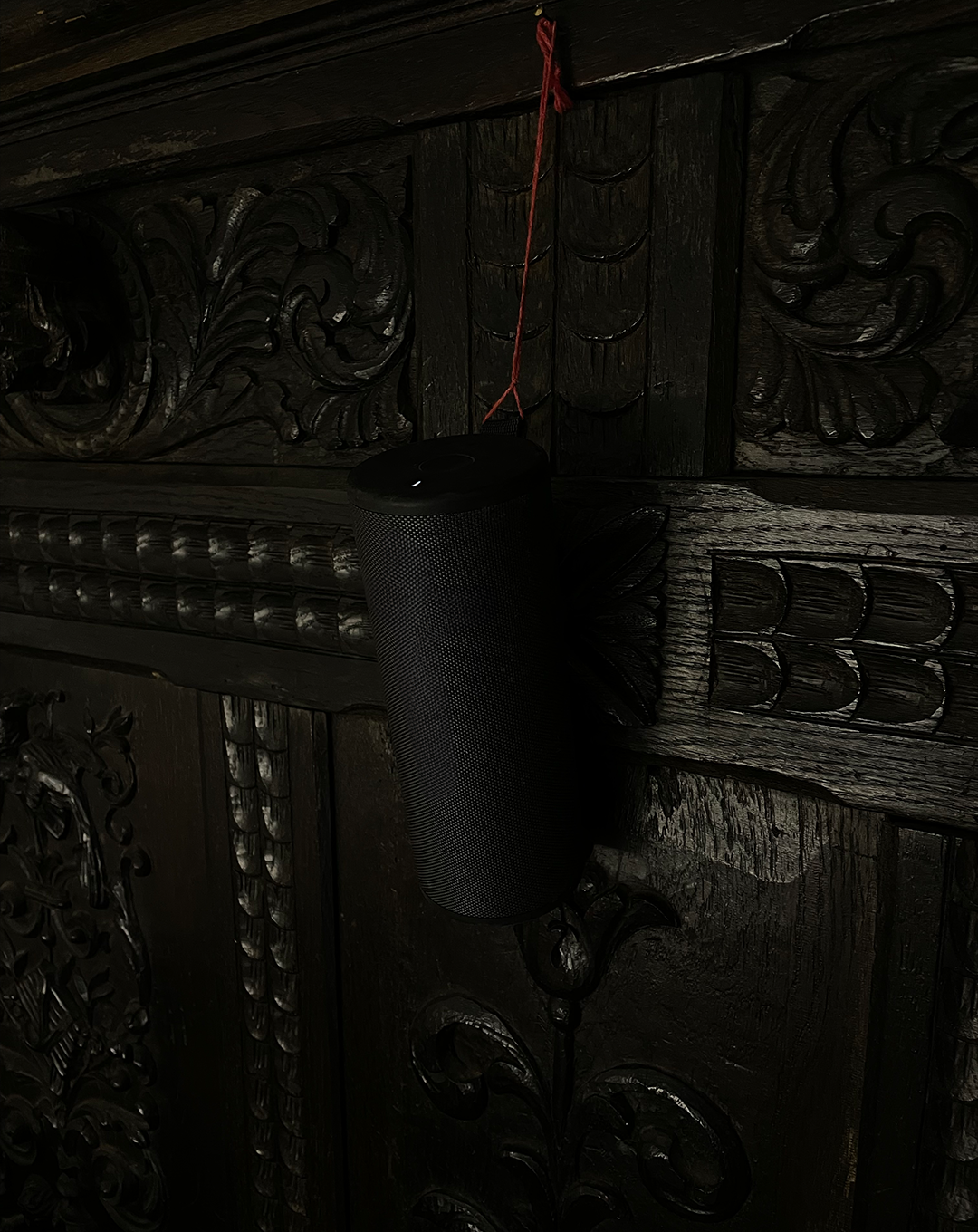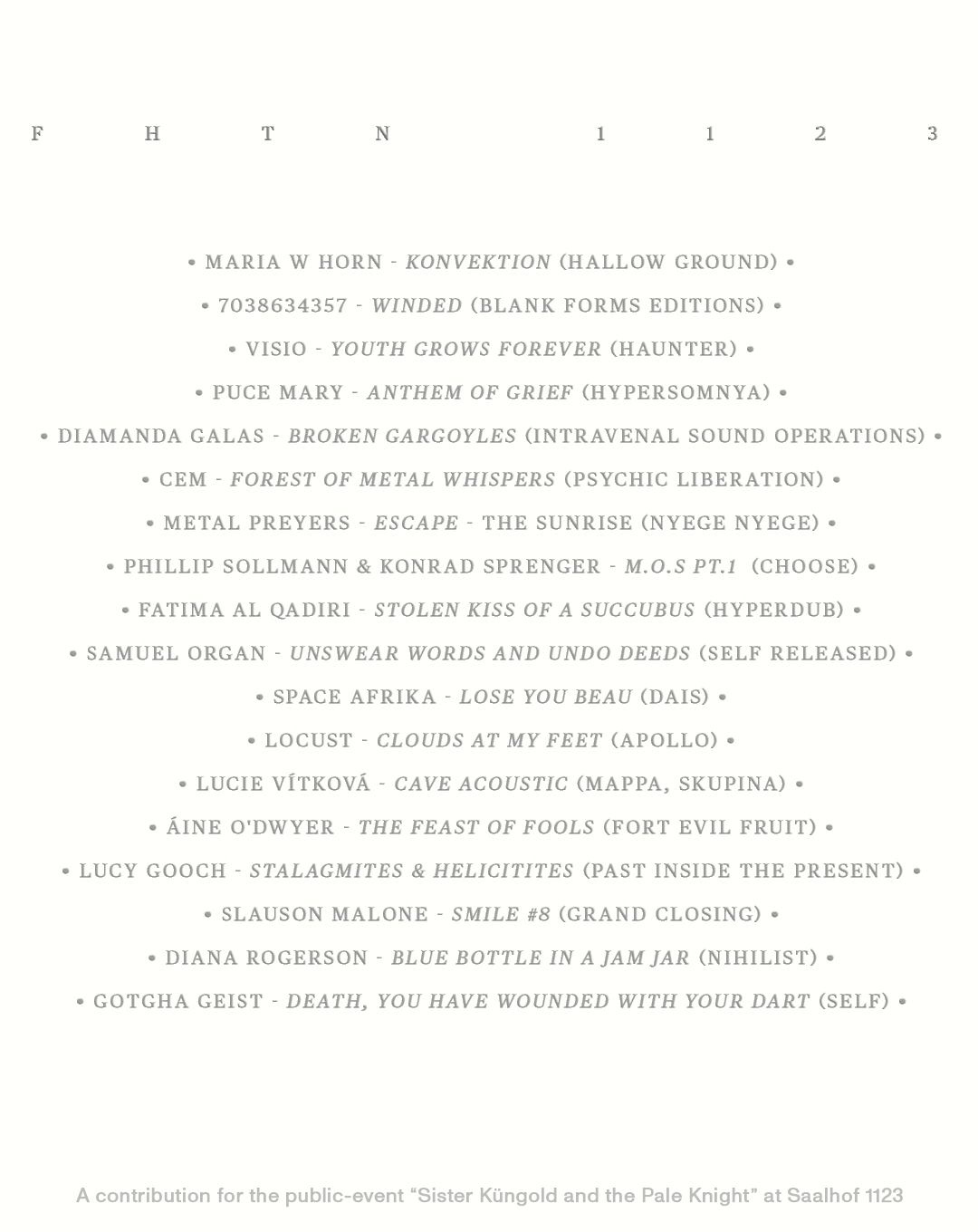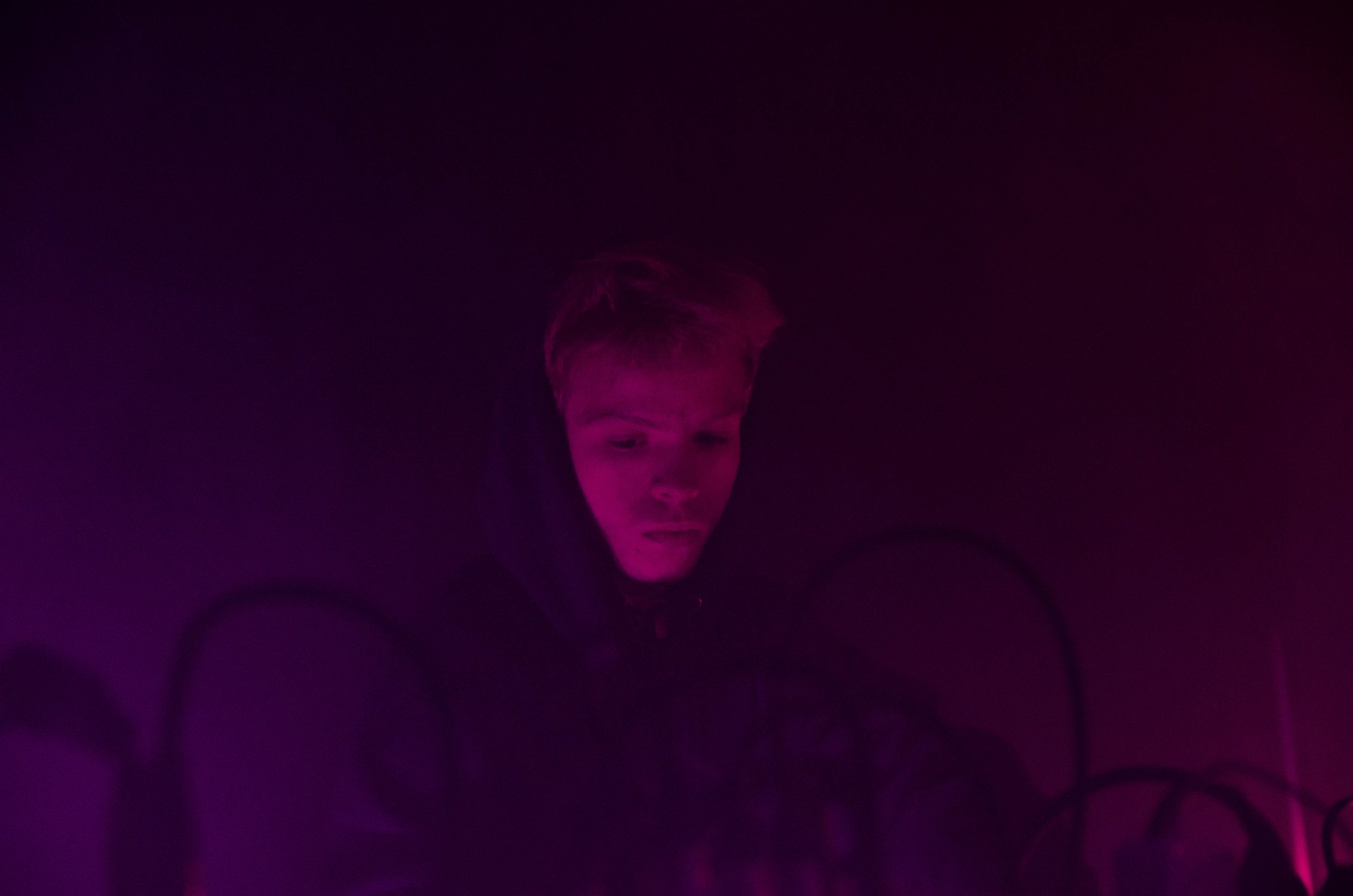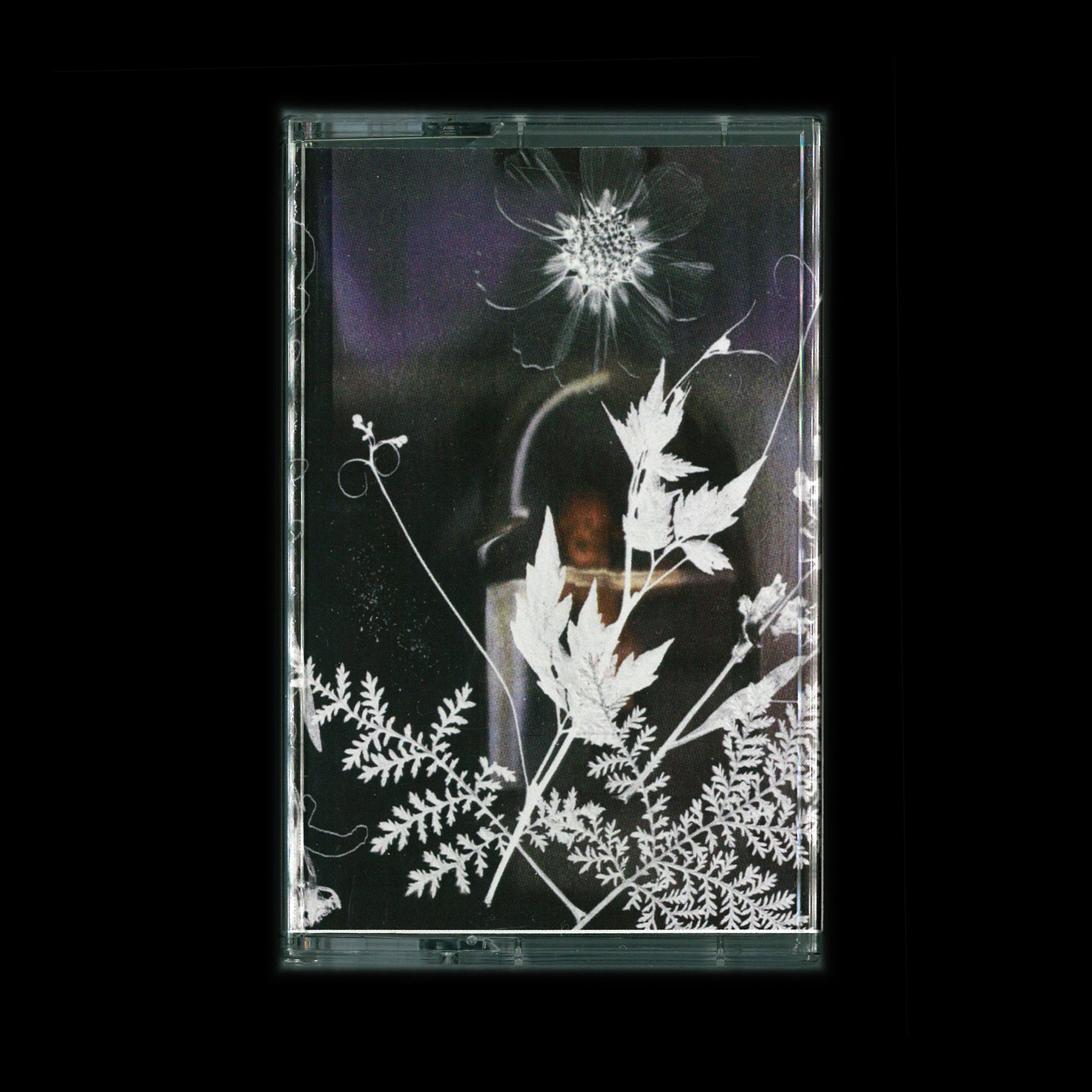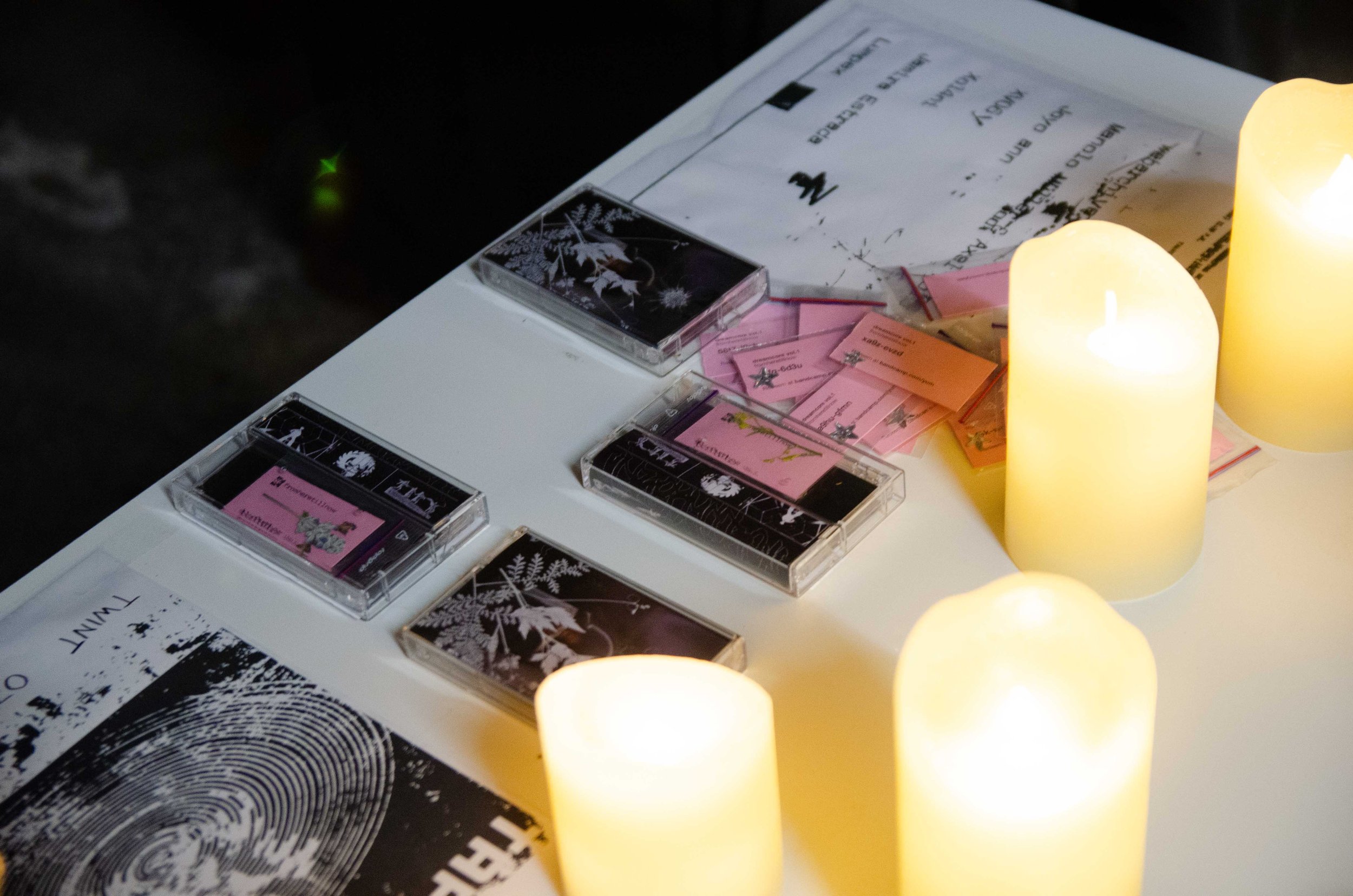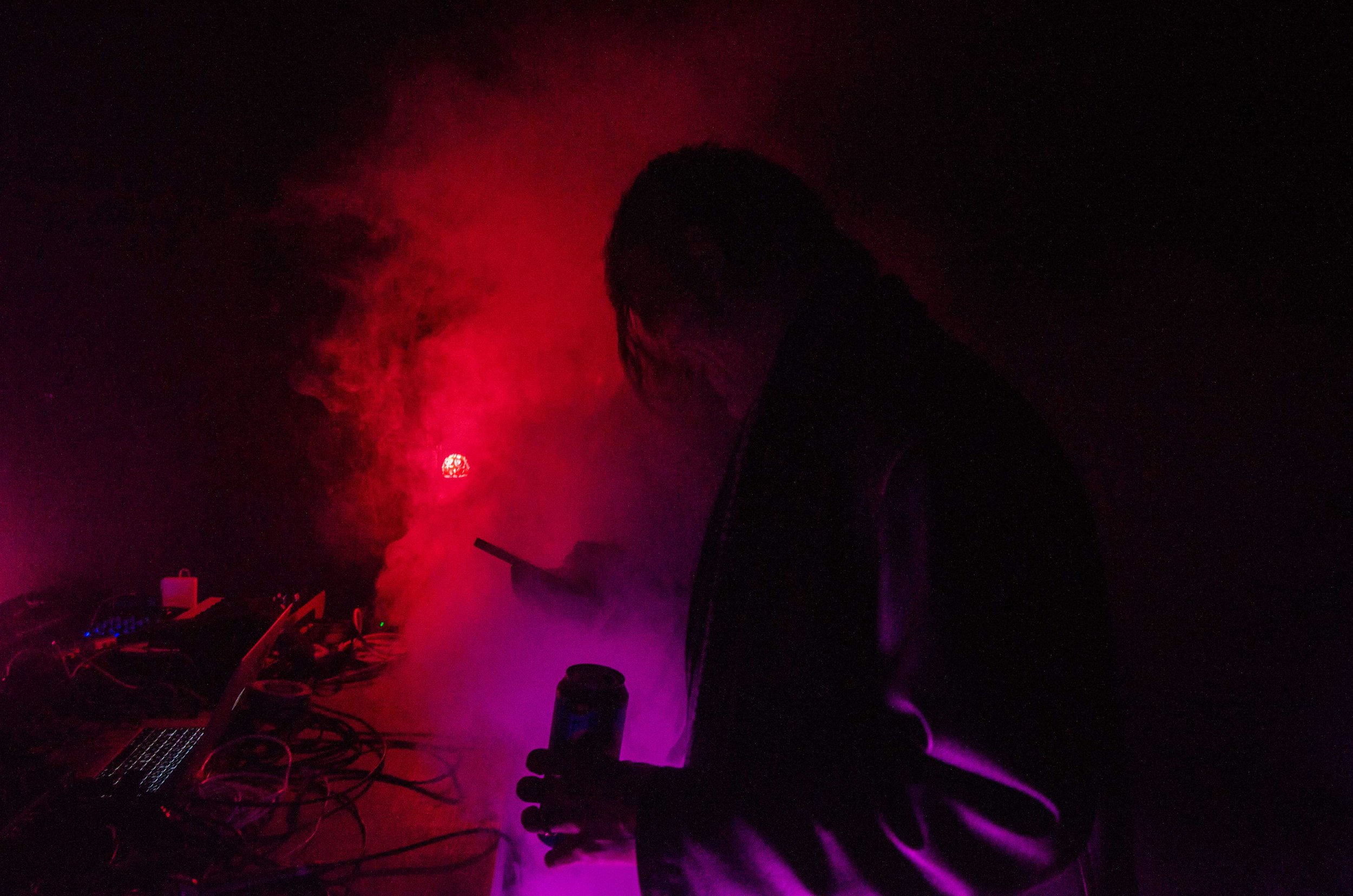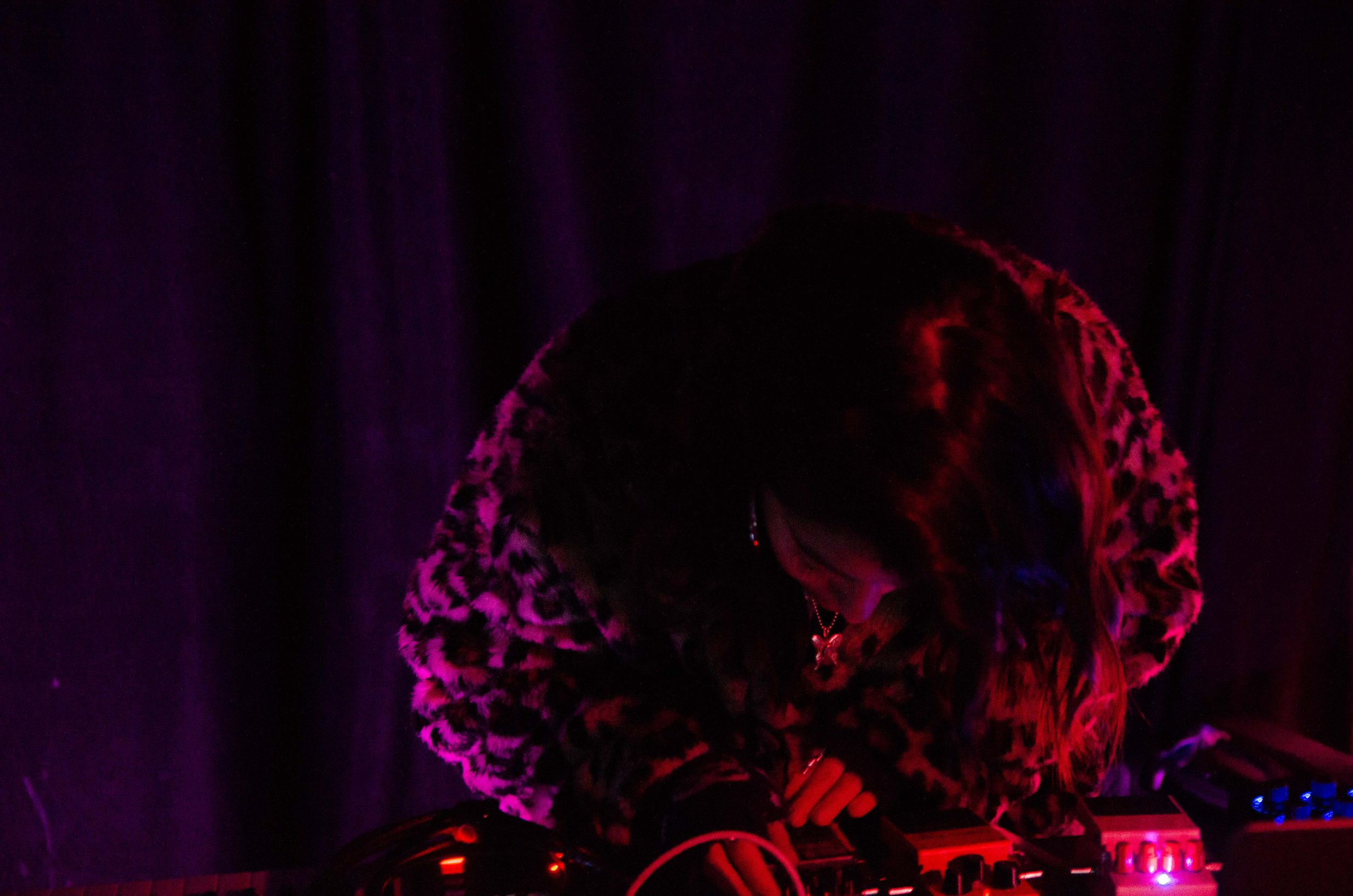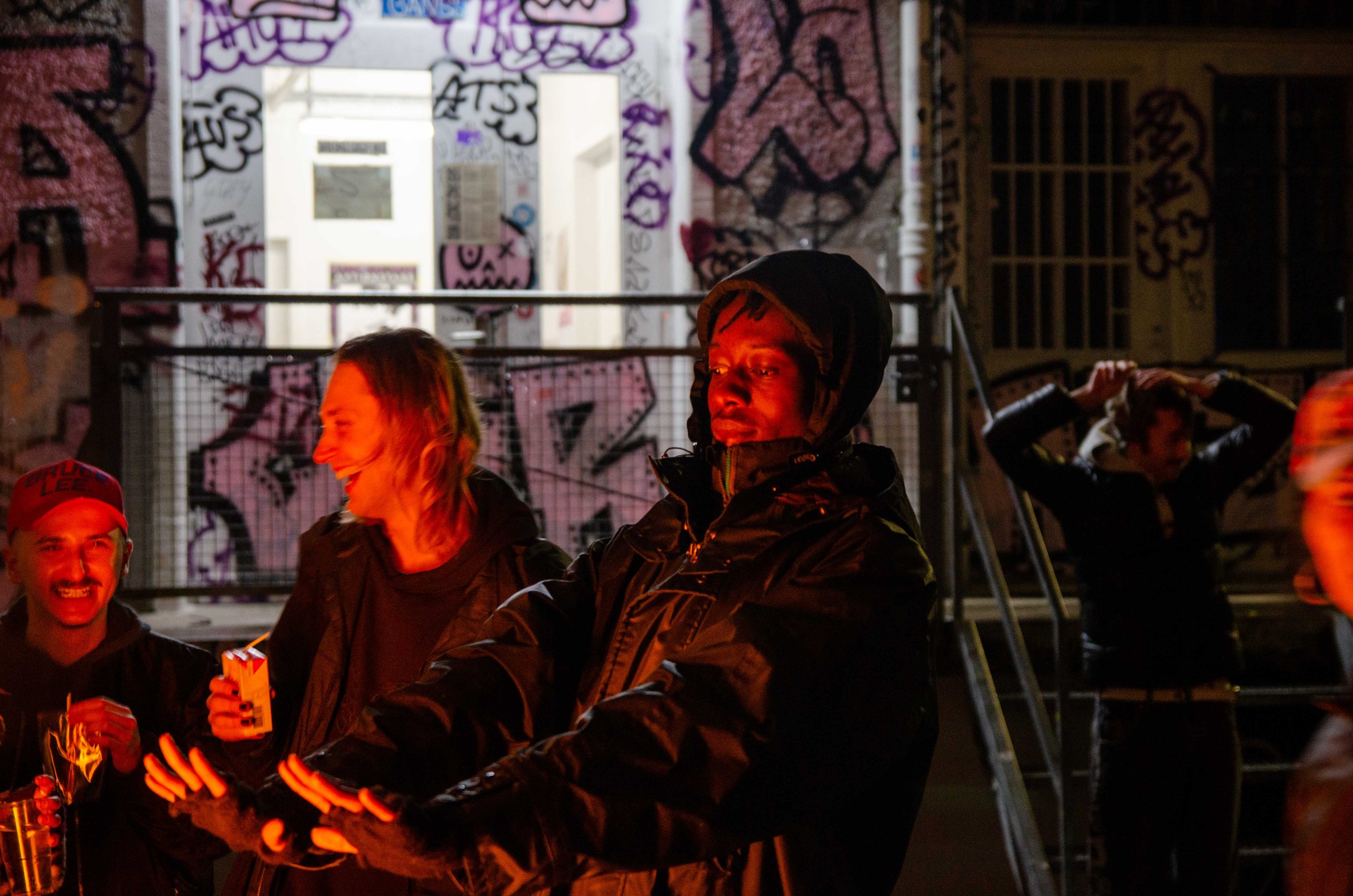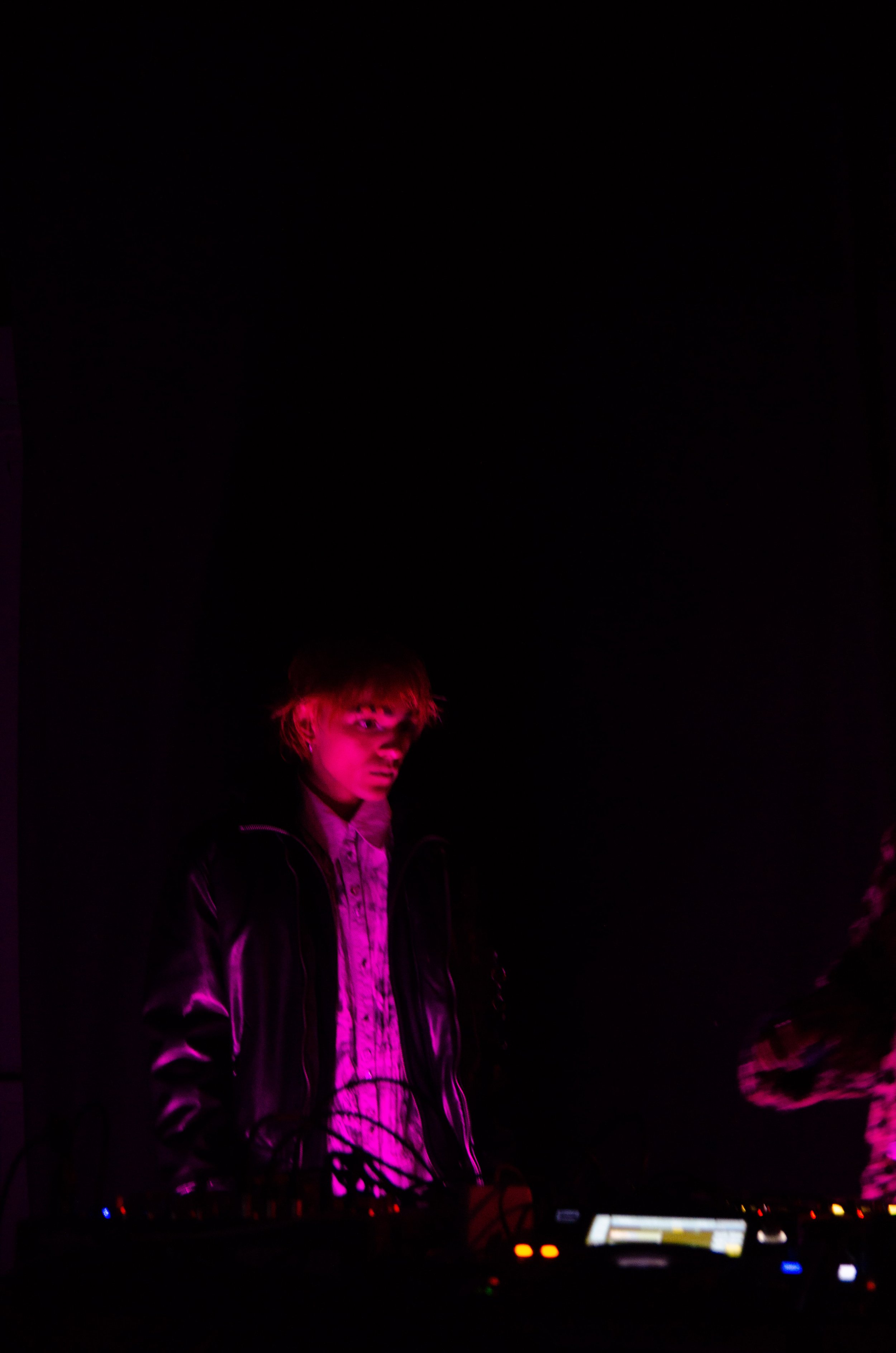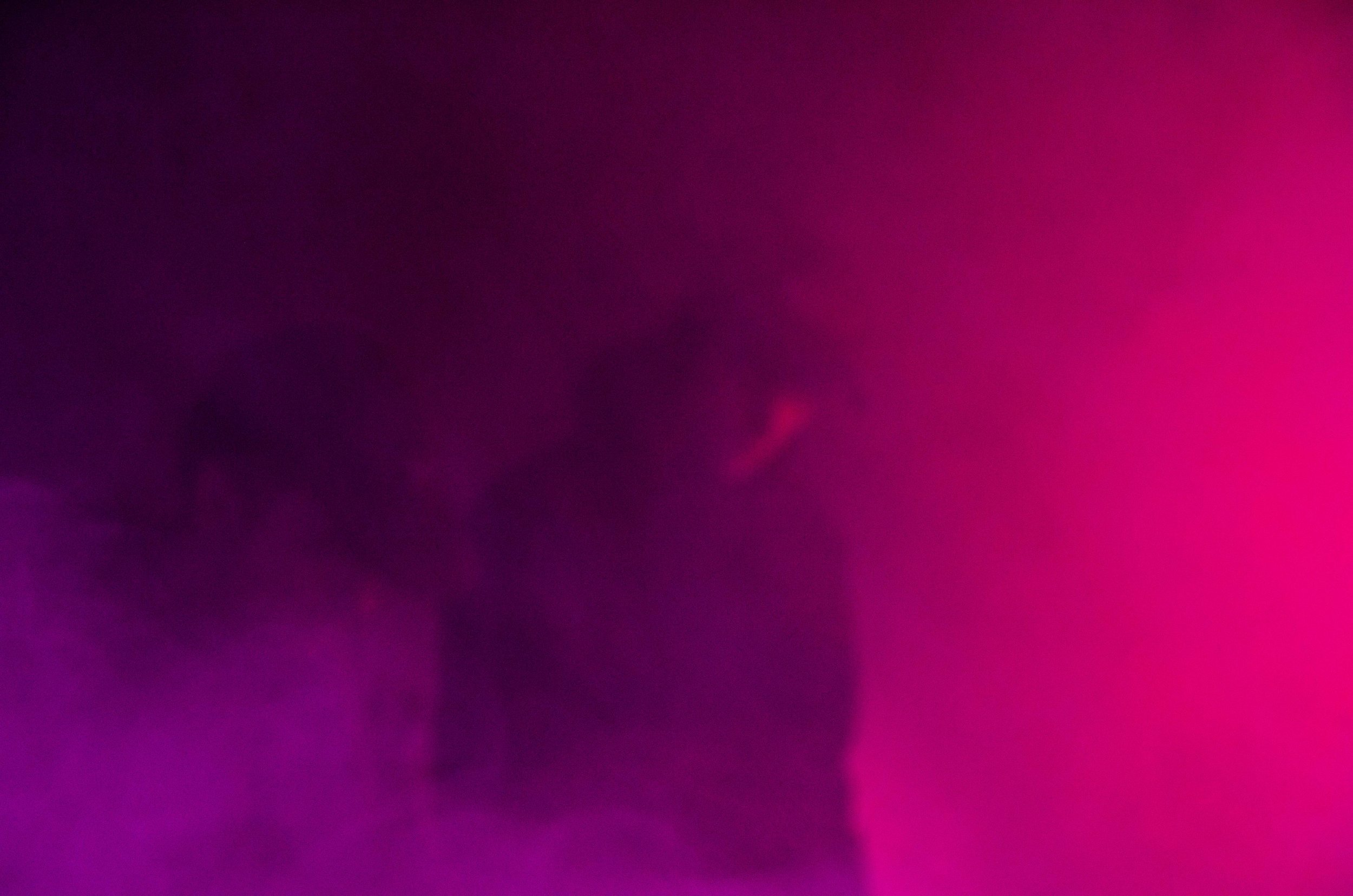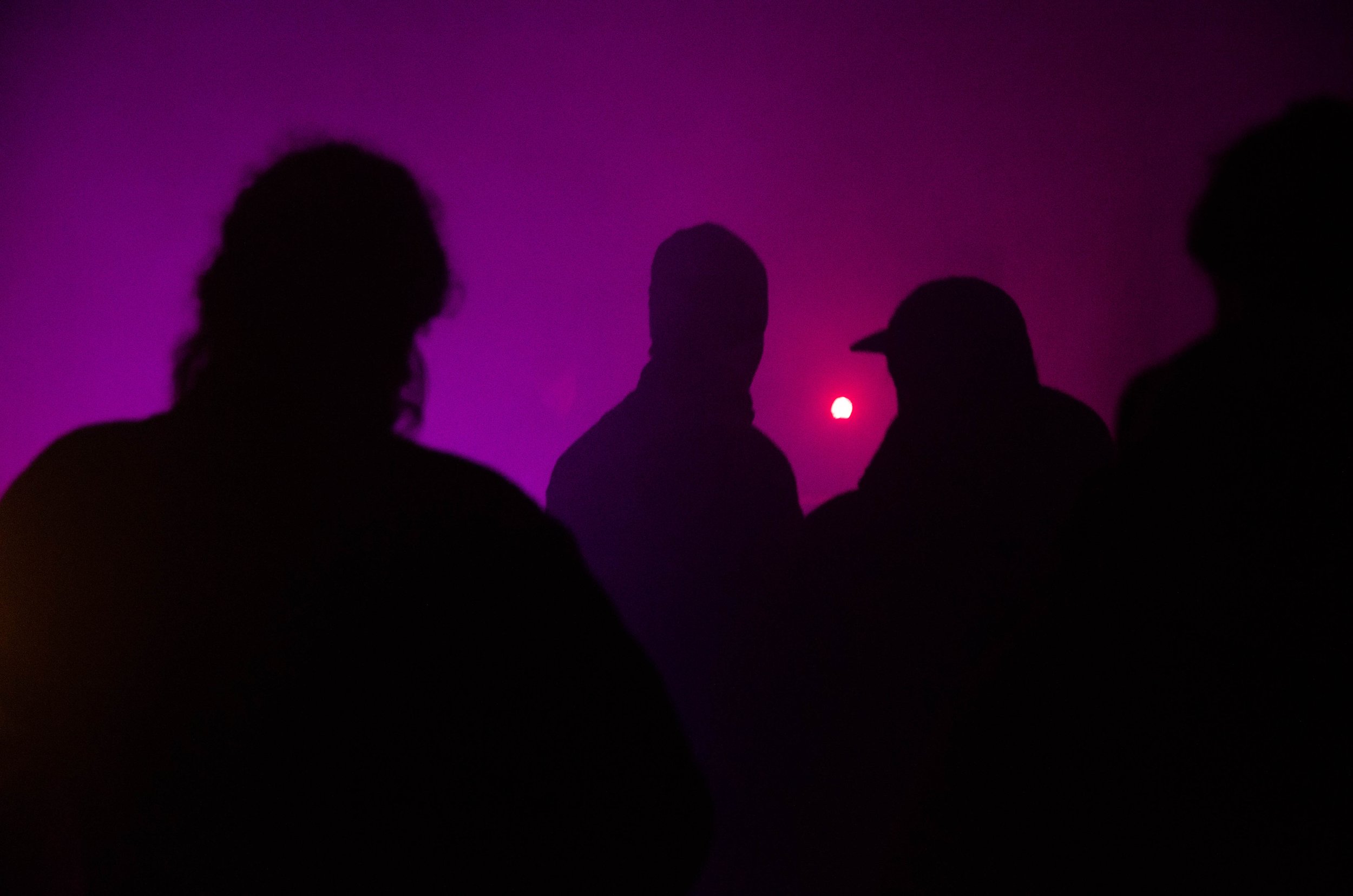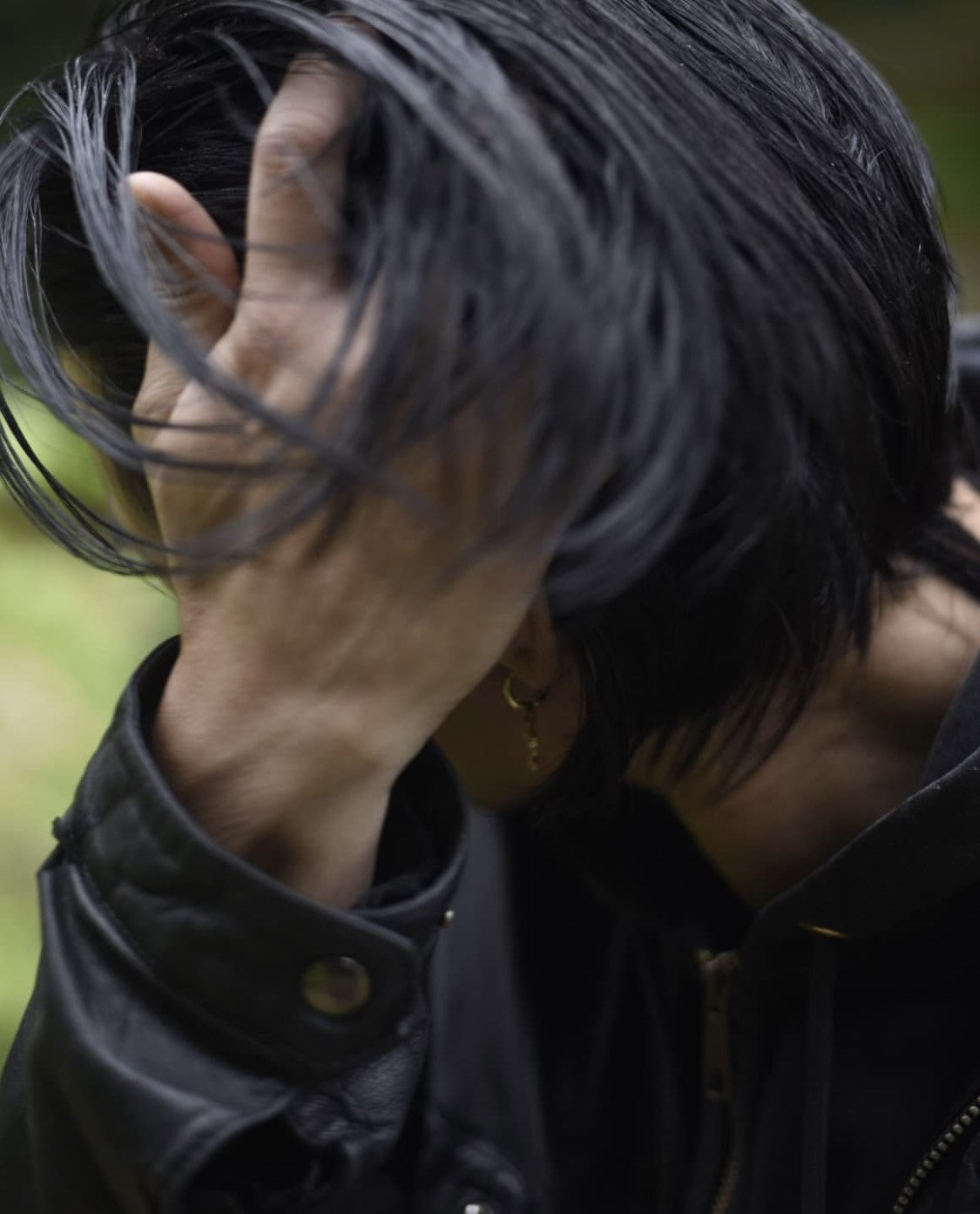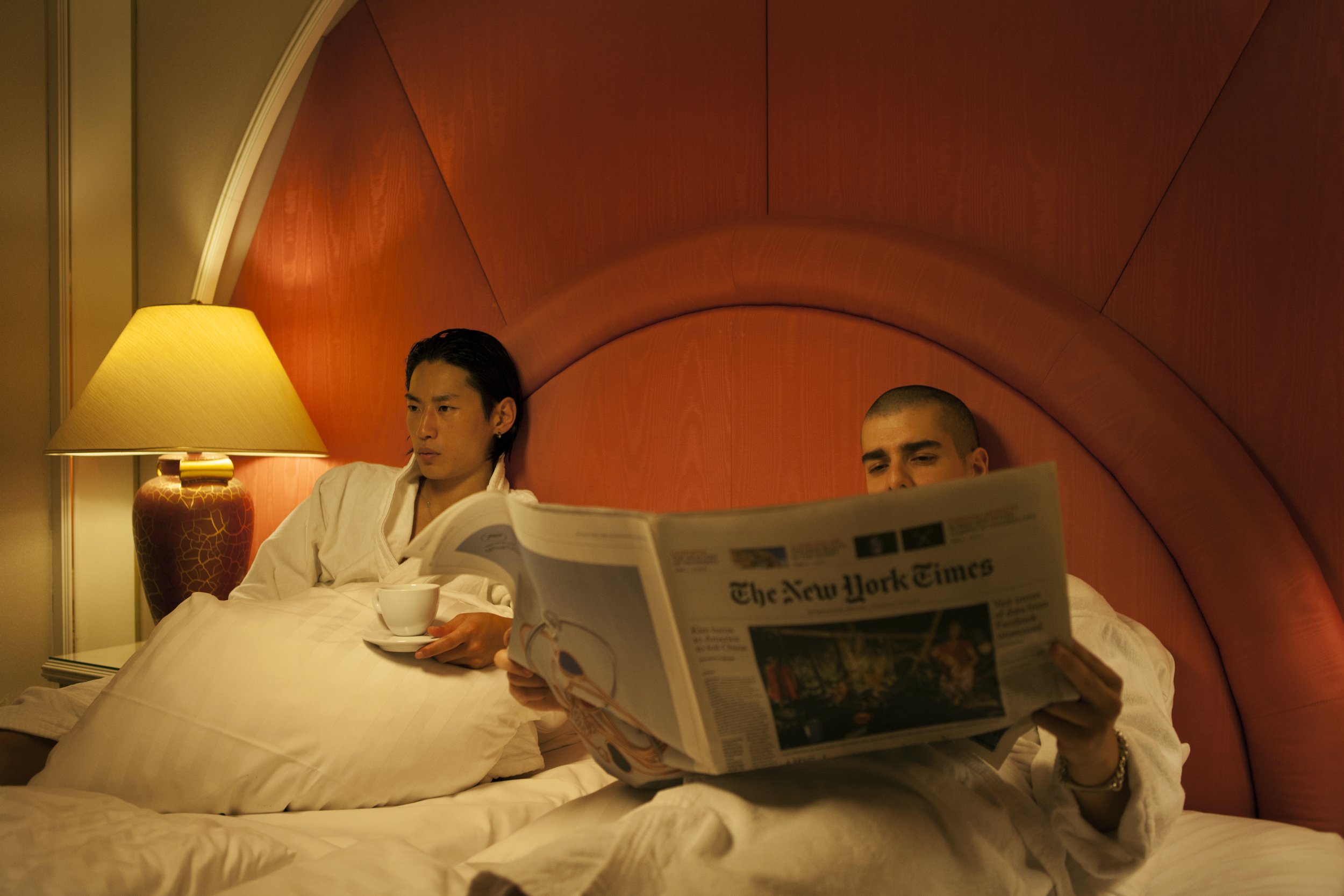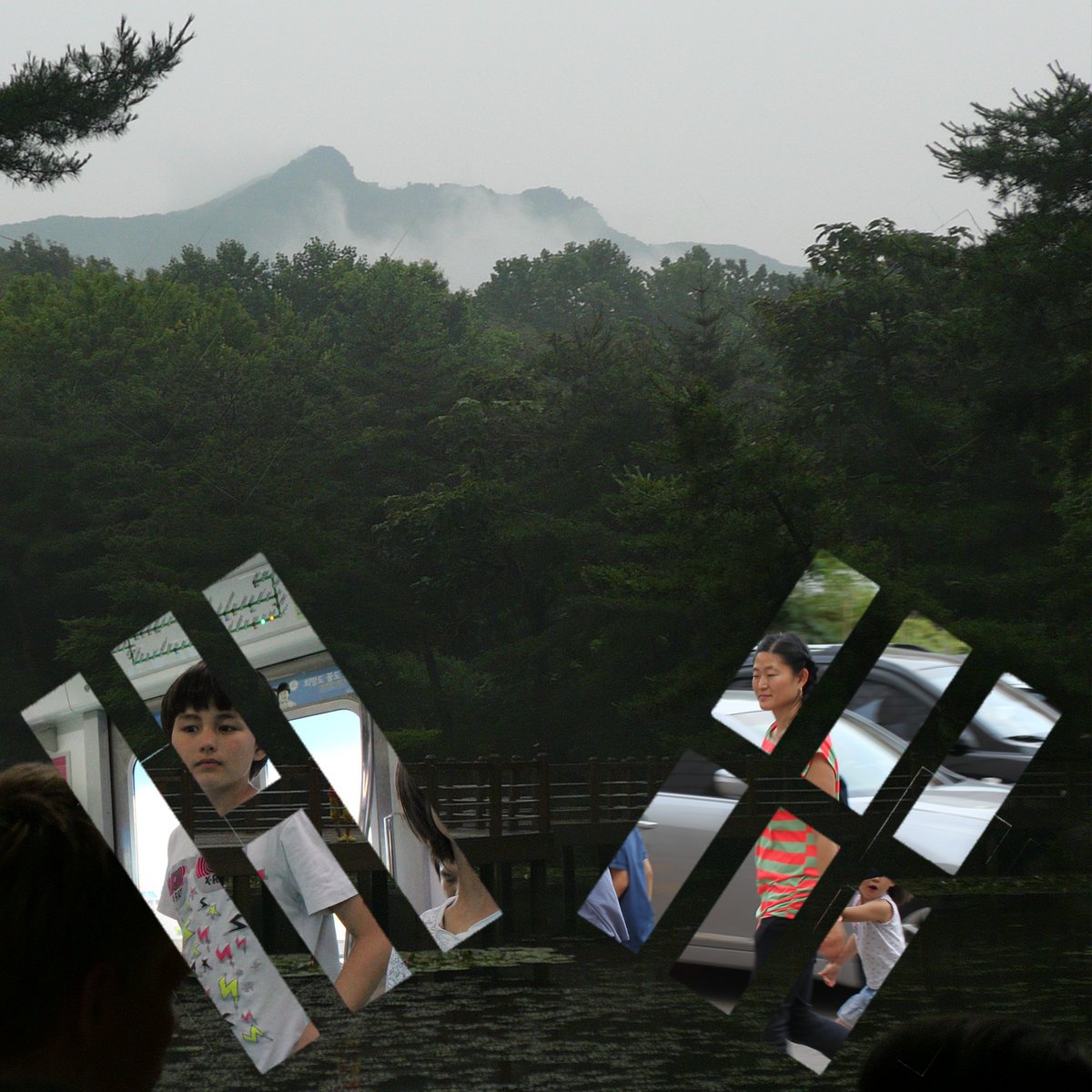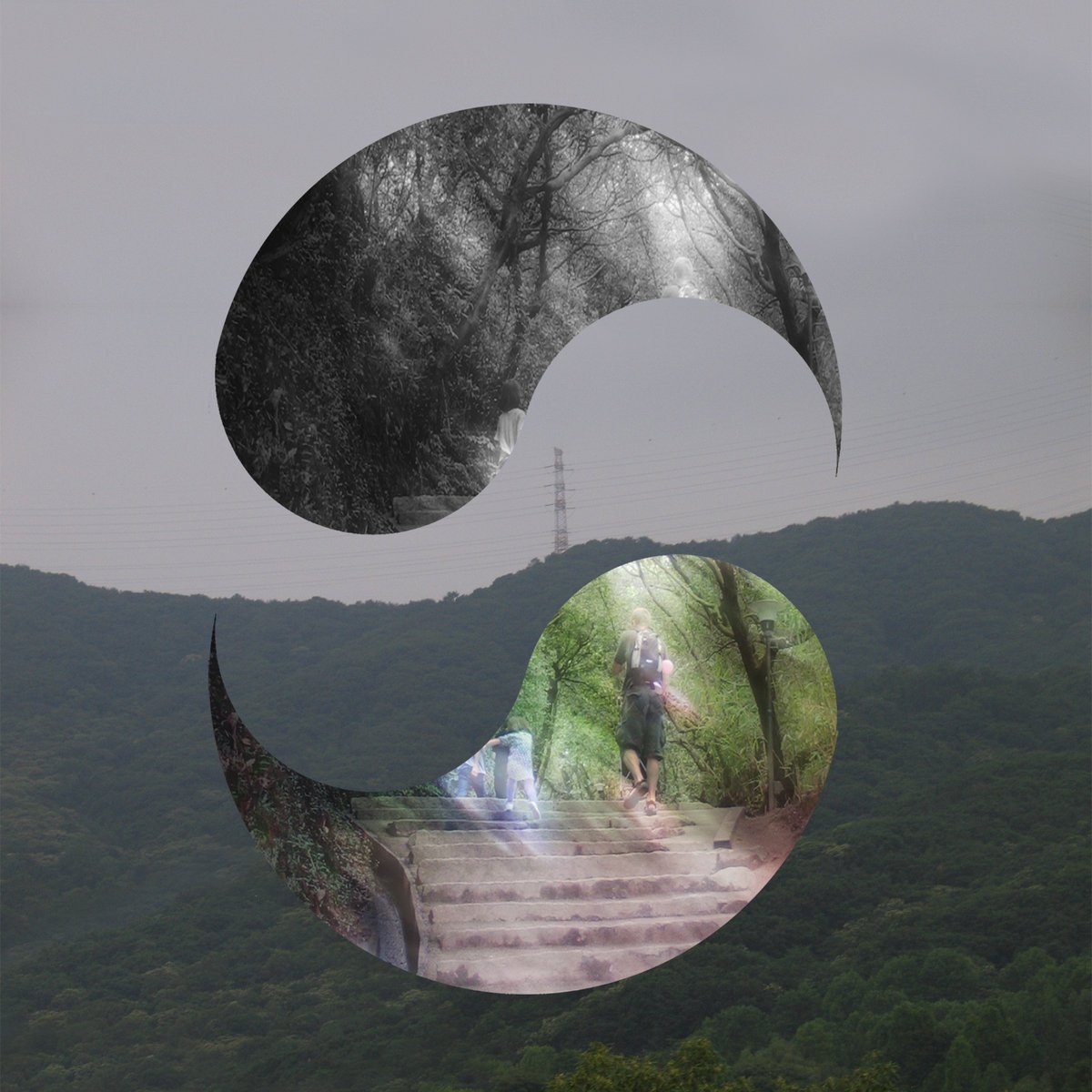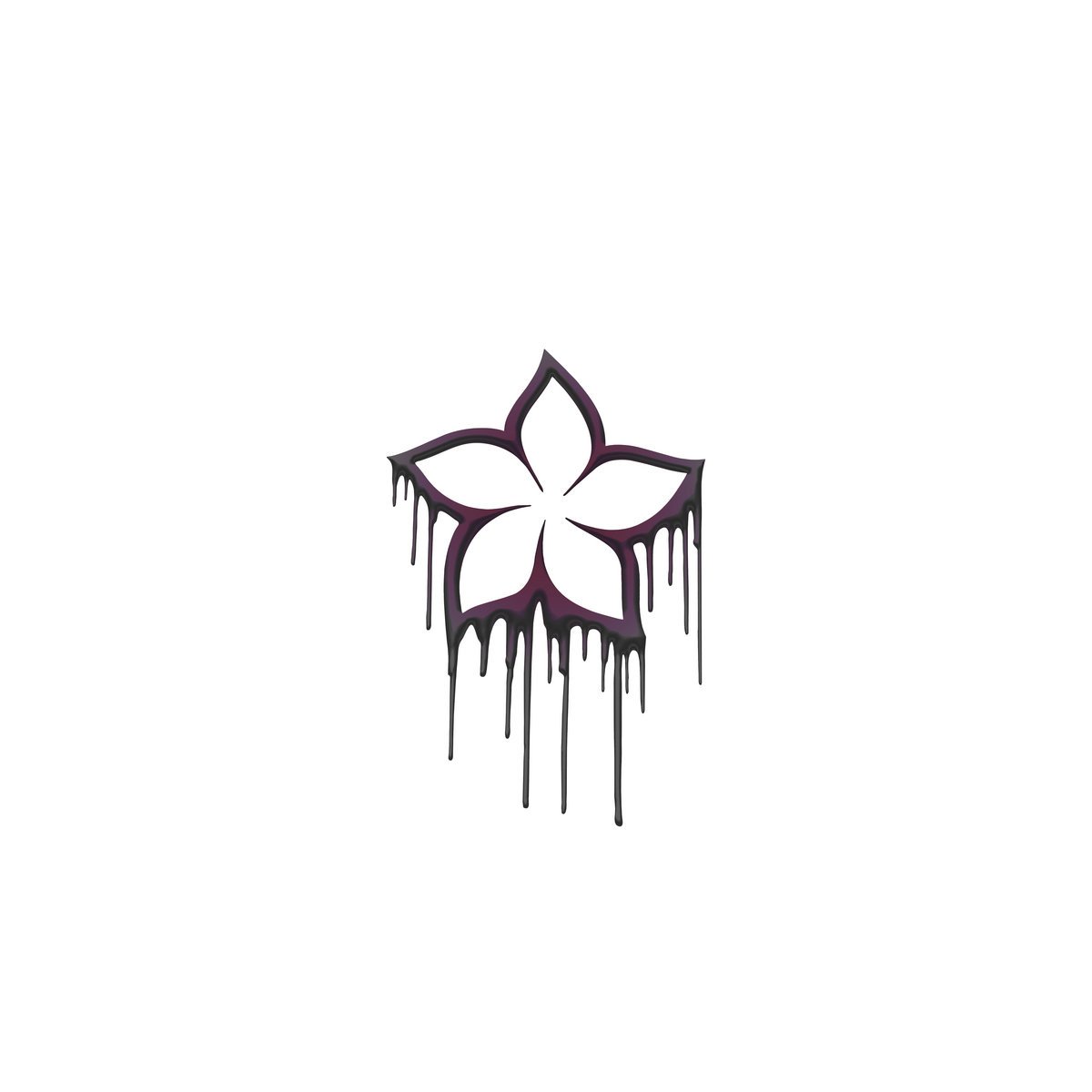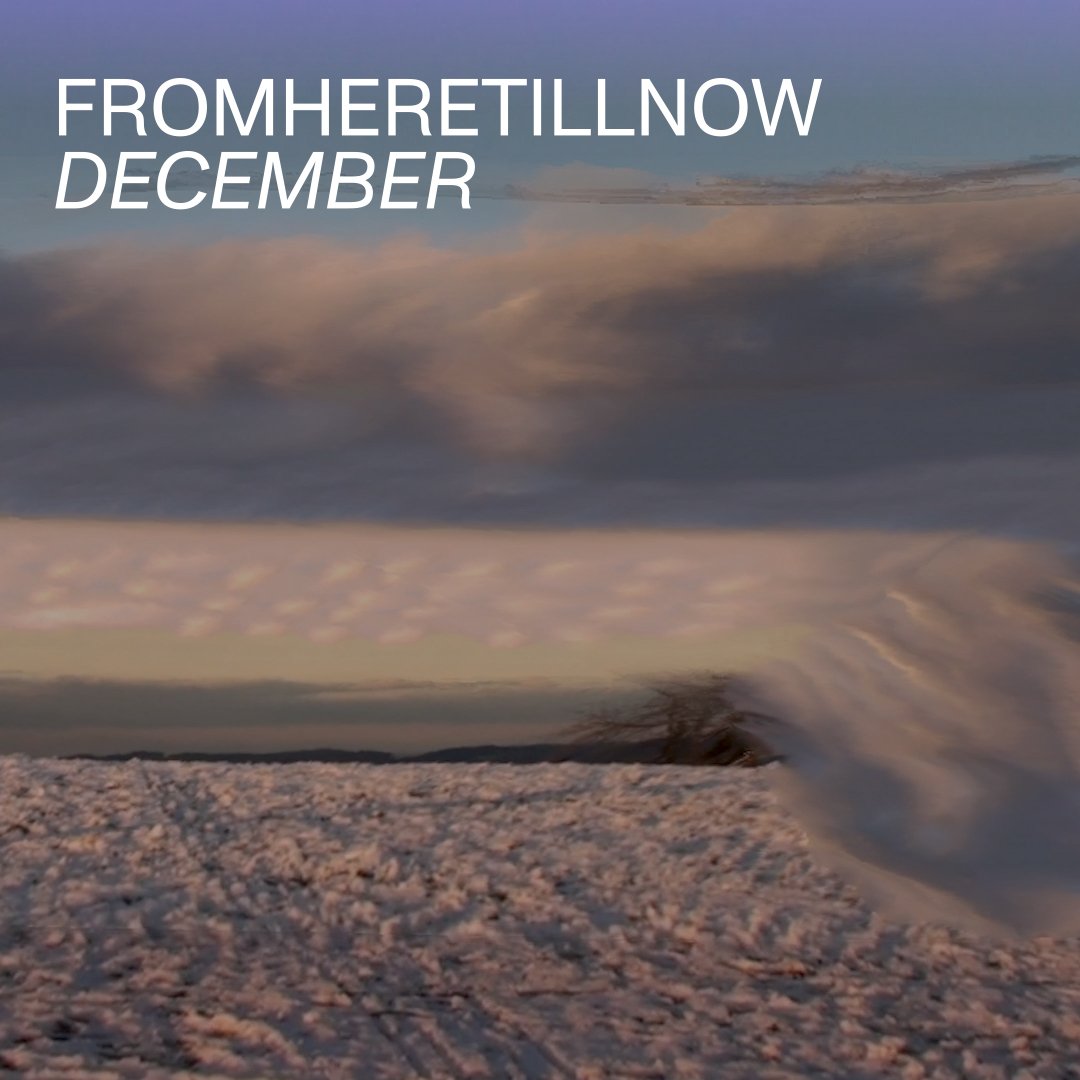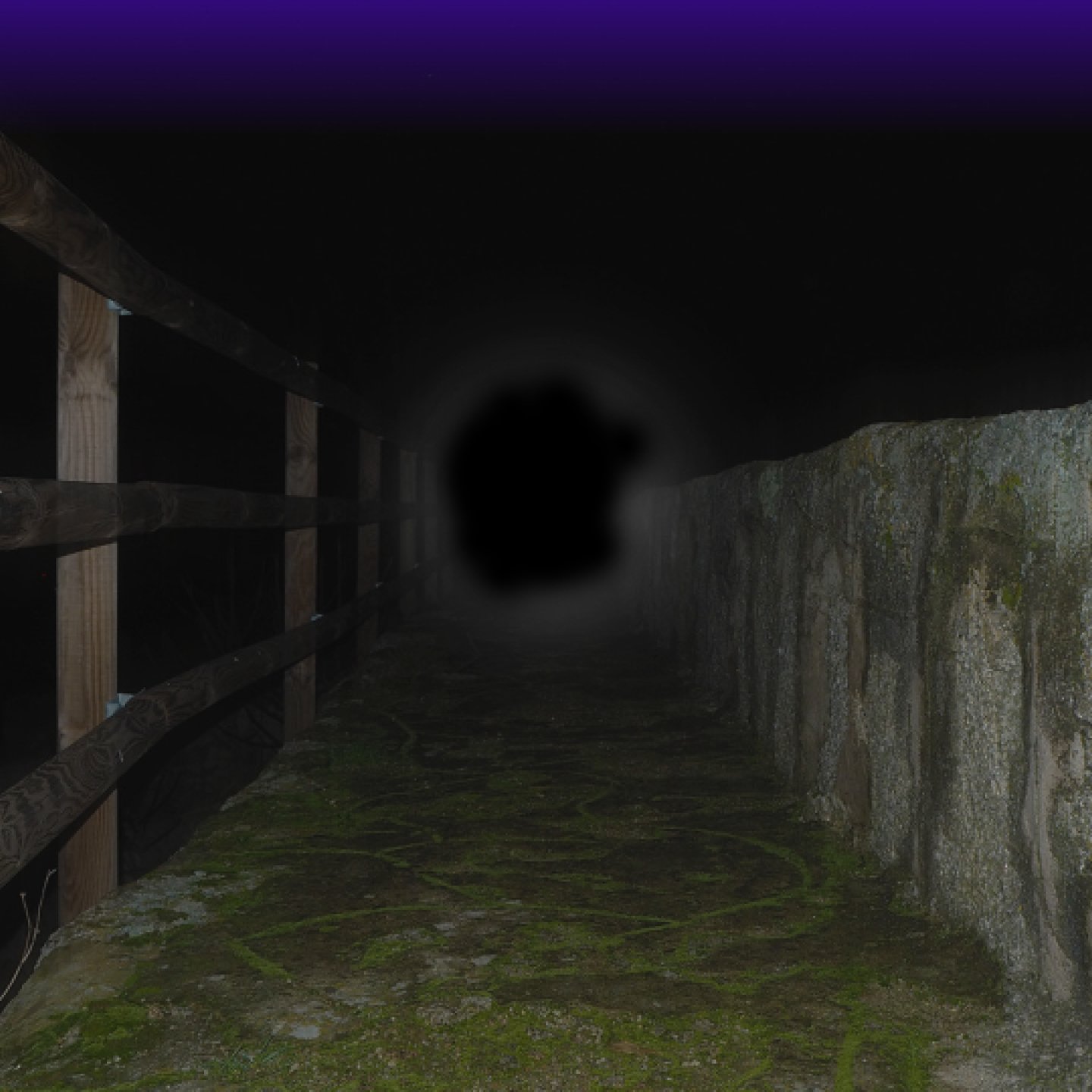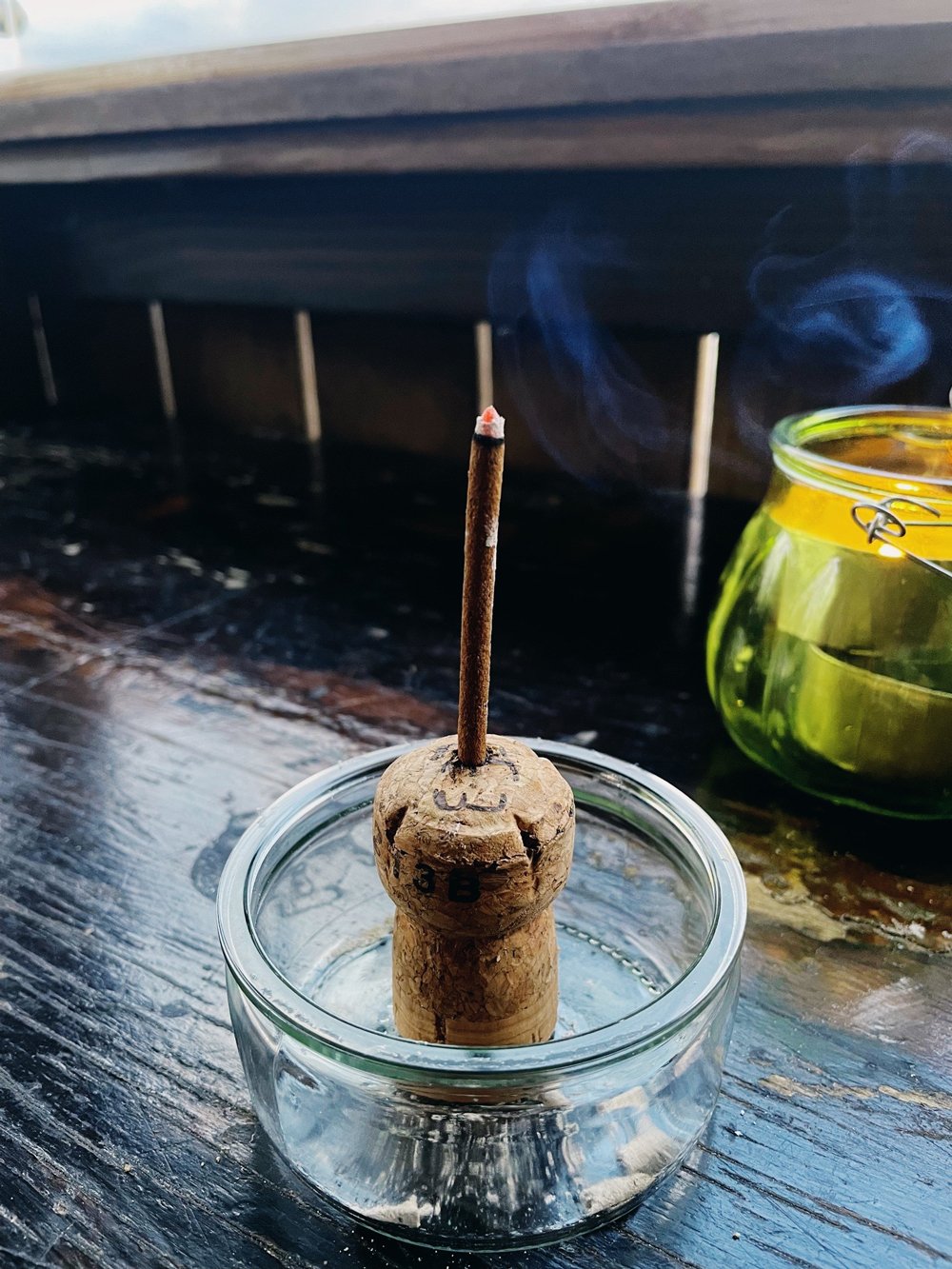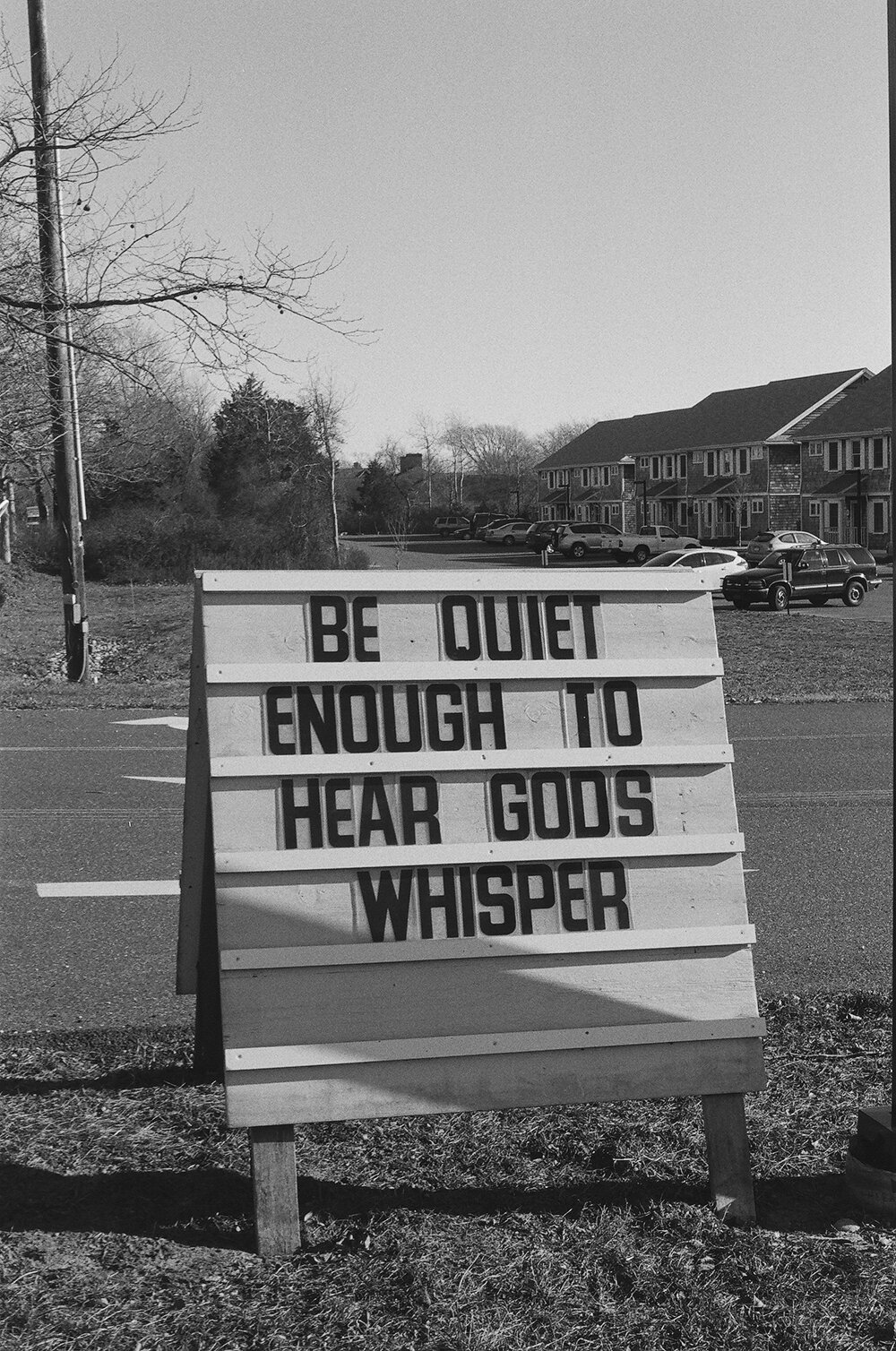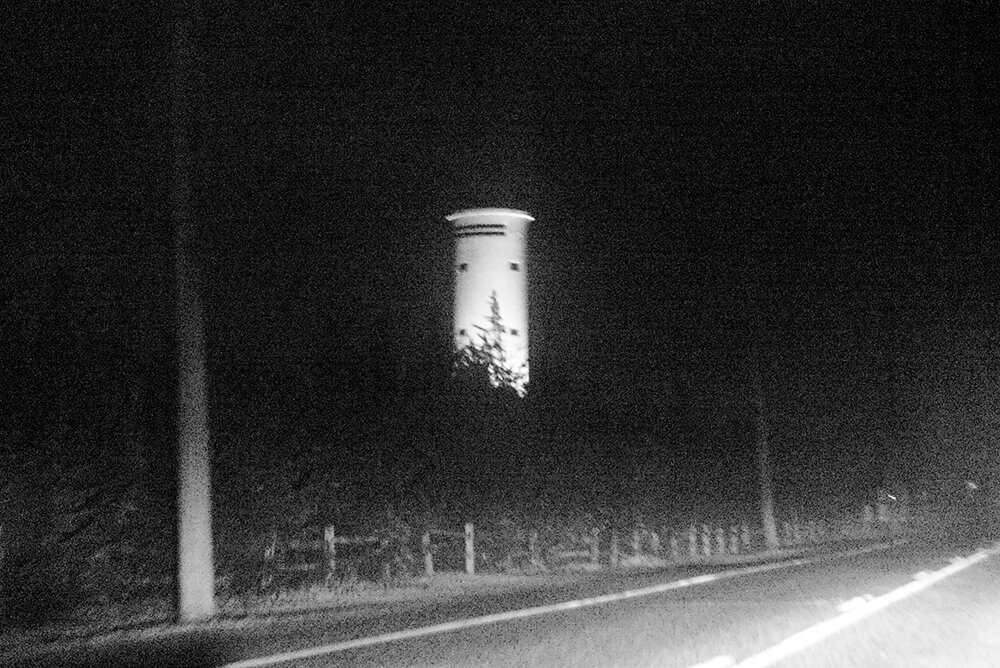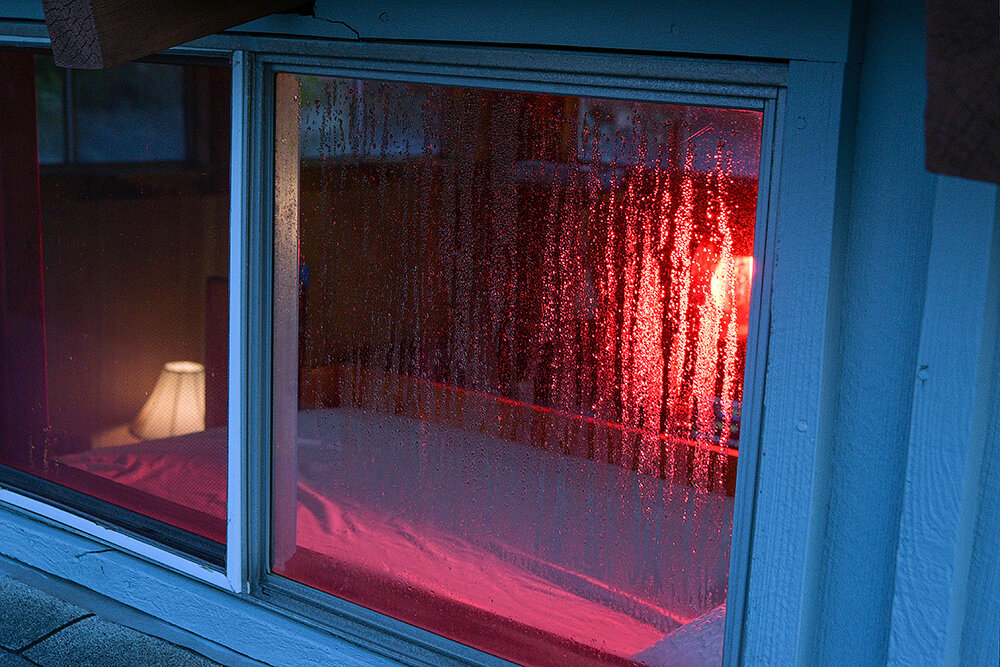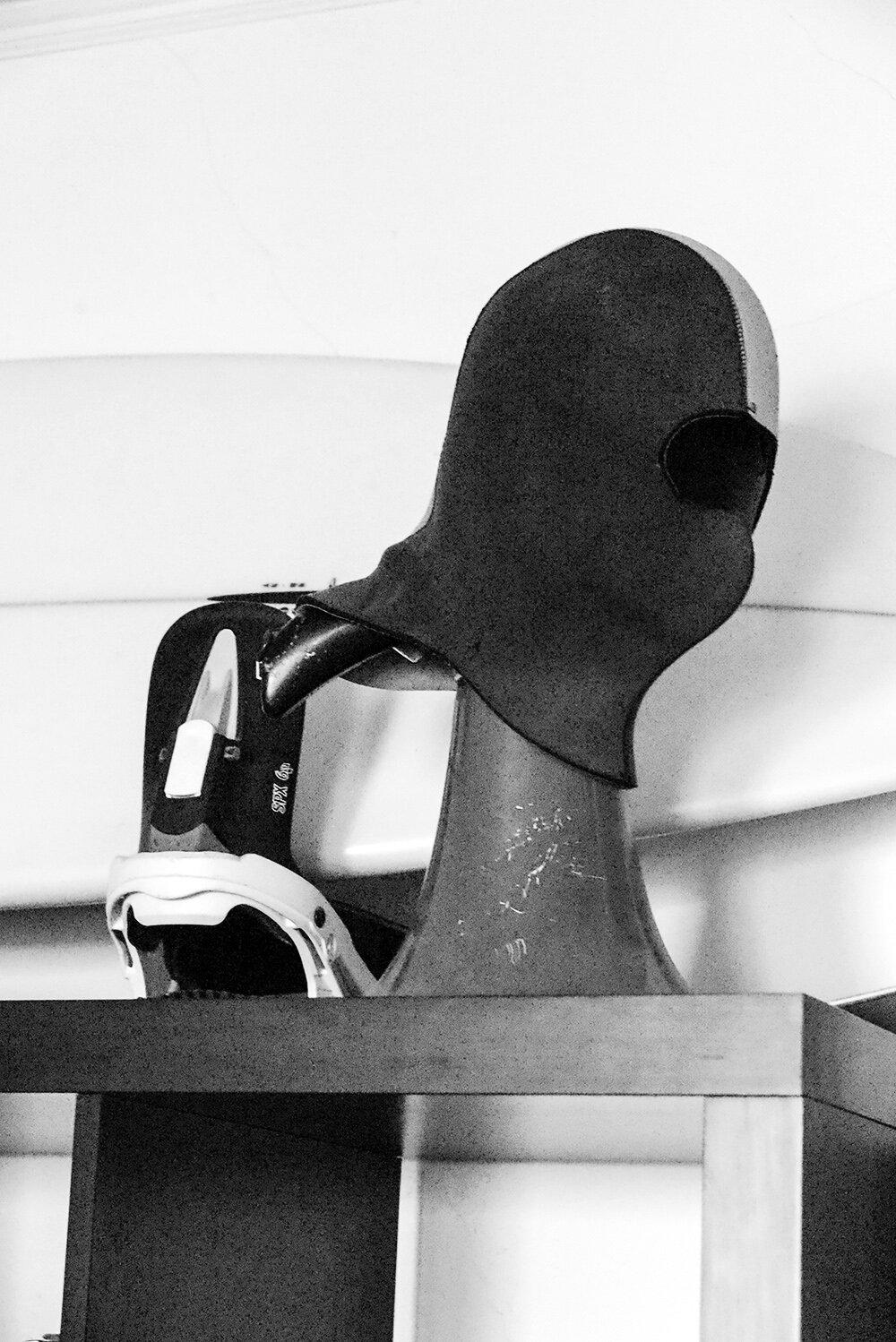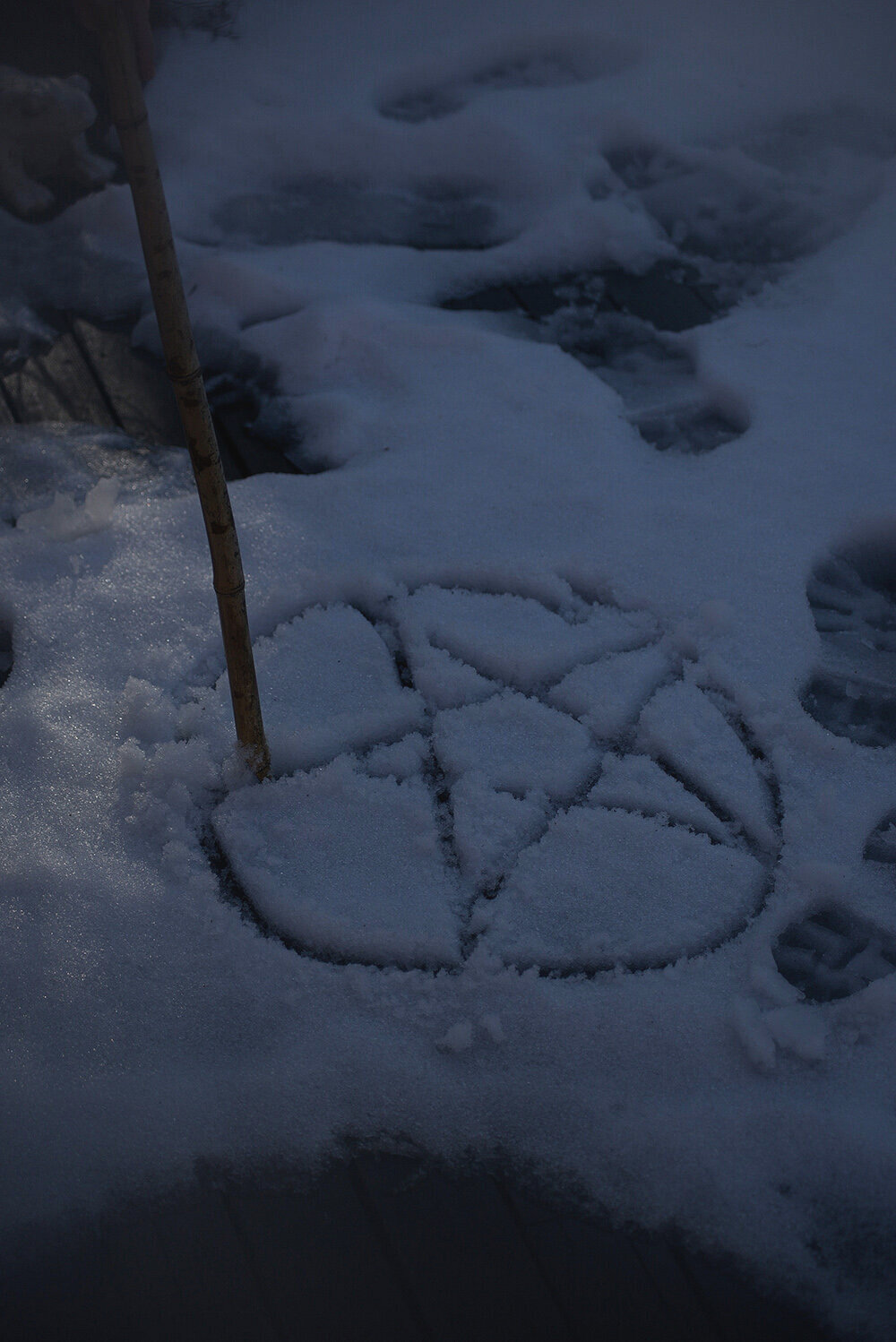James K by Eli V Manuscript
Statement by Eli
E: To start us off, I’m interested in how you’ve described your work as “conceptualizing the female voice as an X-ray to the bones of sound.”
J: In my recent work, I wanted to have each of the performances reflect personas that I am currently working with. When I say persona, it's not just a character with one backstory. It's more of an emotional, cultural, and historical embodiment -- a fragment made of fragments, taking form through an amalgamation of textures and elements: writing, sonic, visual, movement, performance. Additionally, I’ve been using Anne Carson's “The Gender of Sound” as a departure point. Her text discusses how patriarchy has entrapped female sound, tried to contain it; it’s about female sound in its unbridled form and how and why it's been controlled by patriarchal structures.
E: For your piece Elektra (Scream Through the Eyes of a Statue), you used Carson’s translation of Greek playwright Sophocles’ Electra.
J: Right. I was introduced to her work through her poetry and then got into more of her theoretical writing and then her translations. I approached these pieces as further translations, exploring my current understanding of female sound. I wanted to give complex characterizations to the containers that have been put on female identities, to talk about them and then to also challenge them.
E: In Anne Carson's “The Gender of Sound” -- how do you interpret that gendered sound? Your piece Elektra (Scream Through the Eyes of a Statue) utilizes the scream which Anne Carson separates from traditional uses of language, both in Greek and in her translation into English. In the piece, you focus on those screams which aren't words we are familiar with -- and I’ve heard you mention the scream as being a truly feminine sound.
J: Carson talks about screams in a few ways. I think most importantly, the screams were compared to two other protagonists in Greek mythology. One of them was turned to stone and she used tears to communicate; and the other was transformed into a bird and used birdsong to communicate. Electra’s screams were compared to these, in the sense that they are all modes of female sign language. So, even when any container or walls are put up around vocality, there is still a form to express and electrify through screams. The idea of female sign language is important to me. It is something that I have come to on my own terms and utilized much in my music and art practice, though I had never heard it articulated in this way until I read Carson’s essay on translating Electra. In my Elektra piece there are no lyrics. Even though I'm using Anne Carson's translation of Sophocles’s Electra as the departure point, for the specific work, I wasn't interested in having any of the text be completely legible. This differs from Strauss’ Elektra opera, which sticks to a linear narrative. My intention for this work was in direct opposition to that. I wanted the narrative to exist in a dream logic of layers and layers of materials: sound, visual, written, performative, video, architecture-layers that loop and consume themselves. Layers that have no beginning or end. In every sound, every being, lies a history of everything before them. I wanted the layers to allude to this.
E: How did these layers turn into the score performed?
J: We were collaboratively improvising our translations of Electra’s Screams, and other sections from the text which I translated into improv exercises. From this recorded material, I then constructed a score, to form another, more layered and nonlinear translation of Sophocles. Any language that was in the text was disintegrated. Lyrically, I wanted the vocals in the piece to be other sounds that still communicate feeling or words in some way, without using language.
E: As humans, we've used vocality prior to written language throughout our history through grunts and screams. The slow naming of objects and ideas and actions developed into language amongst different peoples. That eventually formalized into forms of writing. Writing was formed when our oral stories started to become concrete and passed down as these definitive volumes, which eventually transform into law and the many absurd systems we deal with now that use language as an extremely structured and demanding form. In Greece, the era of Elektra, we're talking about a time when language was a little less formalized and we might have been closer to these original forms of vocality. Some people theorize that as writing developed, goddess worship ceased, and that those two paradigms are on a similar arc. It's a spectrum, not a moment, but the spectrum that led away from goddess worship also led to the formalization of language as writing, which became a legal system as opposed to a poetic and expressive system. Do you think that's the core of what you’re doing?
J: Yes, it also becomes a binary when language was solidified in form. Language makes things static, it stabilizes memory and repeats it, and this affects our thinking. Language comes from a reality which is way more fragmented. I'm interested in going back to the fragmentation and the multiplicity instead of the binaries. Elektra is a sensitive being. I feel that these systems are simplifiers, and they promote less sensitivity. The idea of a ‘rational’ mind, is a mind that likes structures instead of feeling. Elektra, and my connection to her, involves my interest in forming language through this hyper-sensitivity. This language, then, is and must be multi-layered, and not having much, if anything to do with what most call ‘reason.’
E: We're talking about the idea of a binary versus a spectrum, and we're using words like woman and feminine. Can you explain a little bit about those ideas being within certain spectrums as opposed to a binary system?
J: I am interested in using those words in reference to language. My idea of what it means to be feminine comes down to a philosophy influenced by a lot of other things. When I was a teenager, I wrote this manifesto called the “Venomist Manifesto.” I was inspired after reading the writings of Donna Haraway and Judith Butler, and to give my own spin on the malleability of identity. In my manifesto, I talk about how many containers for “feminine” exist, and how you can move constantly and demonstrate their multiplicity. It’s about finding truth in layers, in fragmentation, and the amorphous void which both holds and is the venom. For me, this is what is feminine- It is the quality of venom; oozing digestion, the disintegration and movement in the inside that we can't see, but rather feel.
E: One of your personas is a specialist in vomit.
J: Yeah. “Nude Volvo” is a vomit archaeologist and she's discovering fragments of personas in vomit. Another V word.
E: And this is the persona involved in your Elektra piece, or no?
J: Nude Volvo is more of an overarching persona that discovers and translates many of my other personas. She is also a DJ. In ways, she is the one who composes the structure, or scores. She is a mode I use for creating work, though she is not always present in the literal sense. That being said, I have done a few performances where she has been central.
E: Let’s talk more about your approach to the scoring and construction of Elektra.
J: With Elektra, I wanted it to be all women involved in this piece and I wanted it to be conversational in the sense that it is a collaborative framework that I’ve created. I brought each of the players into the space two and a half months before the piece, and we started generating sounds in those first months. Before we met, I gave them Anne Carson’s translation, Sophocles Electra, and some of my notes. I wanted them to have an initial feeling for the content, so they could have some basis for interpretation. In those early generative sessions, we used the screams as a basis: I brought them in individually and gave each of them a scream. There's fourteen screams written with letters: “AIAI” is a scream, “O” is a scream, and then the words get longer: ‘EE AIAI,’ ‘OIMOI TALAINA,’ ‘OTOTOTOTOI TO TOI.’ I had an idea of the sounds that each of the players could be generating, but I wanted them to initiate their decisions. I lifted and created some exercises for improvising. For example, when “Oh” was voiced, I would crescendo, the other person decrescendos, so on and so forth. Another scream, I go from longer and looser notes to more staccato and faster. These exercises were meant to promote conversation sonically. The idea was for each of us to react and translate from our own contained histories, and then through improvising, it becomes a conversation, these histories meld.











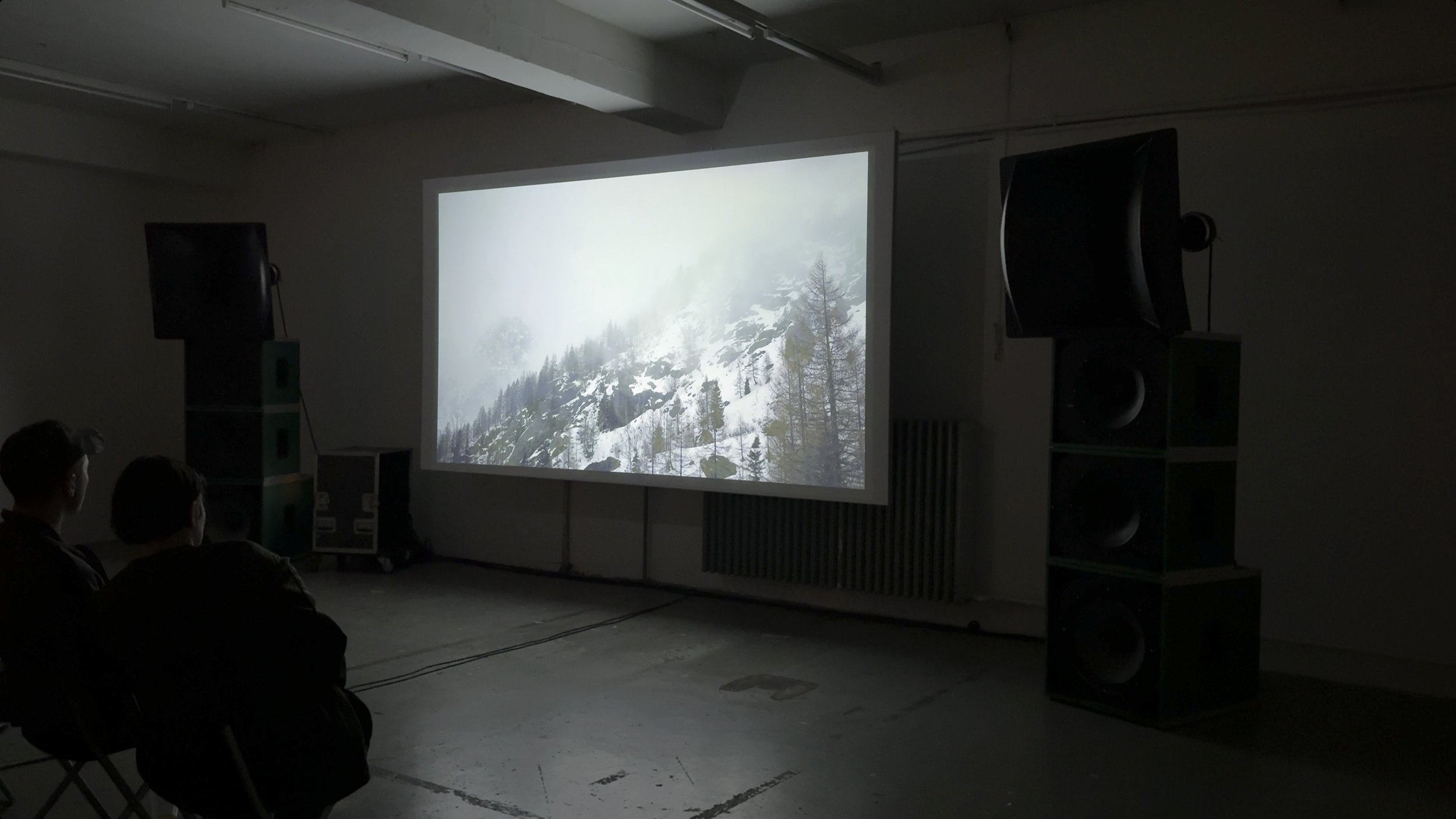



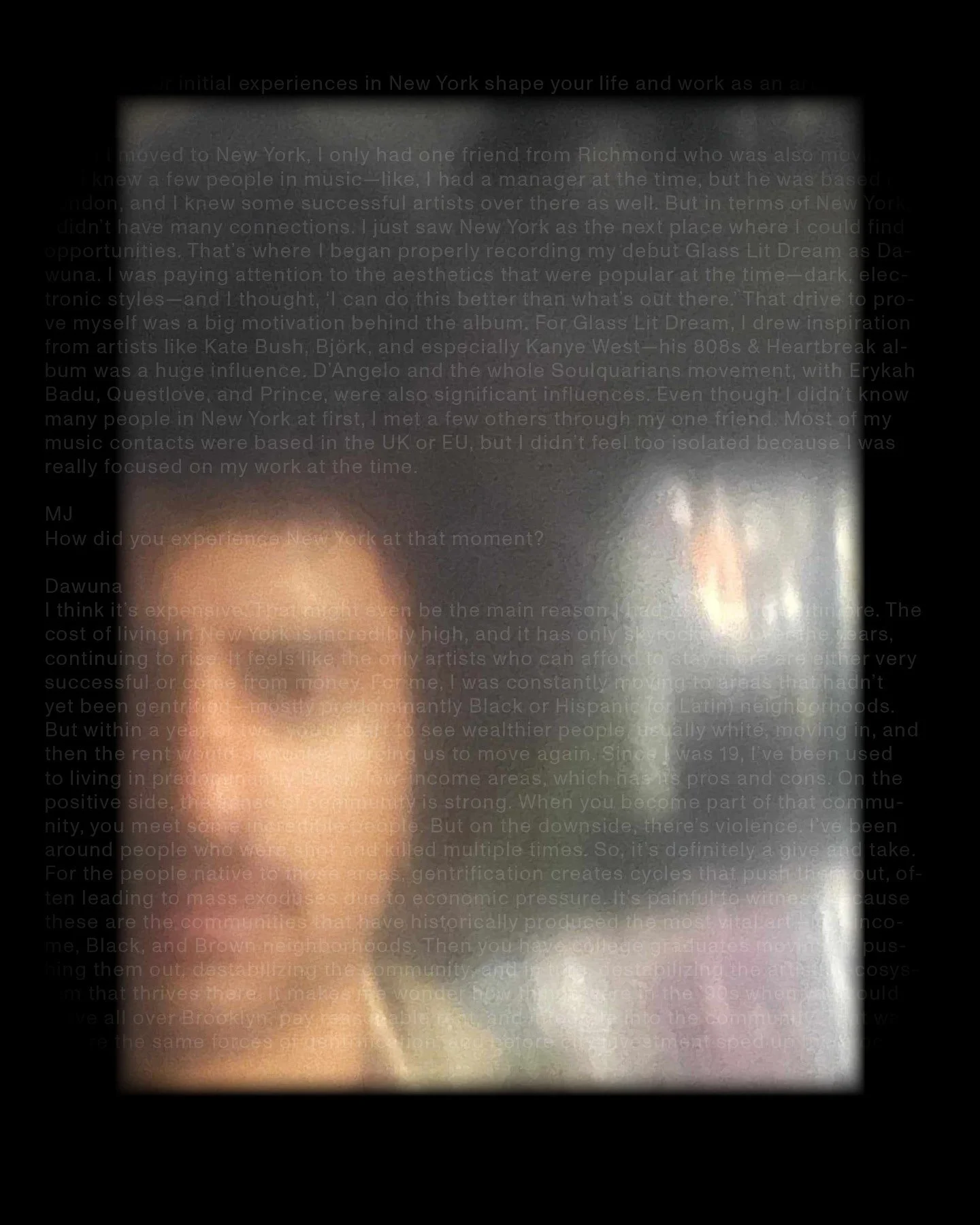








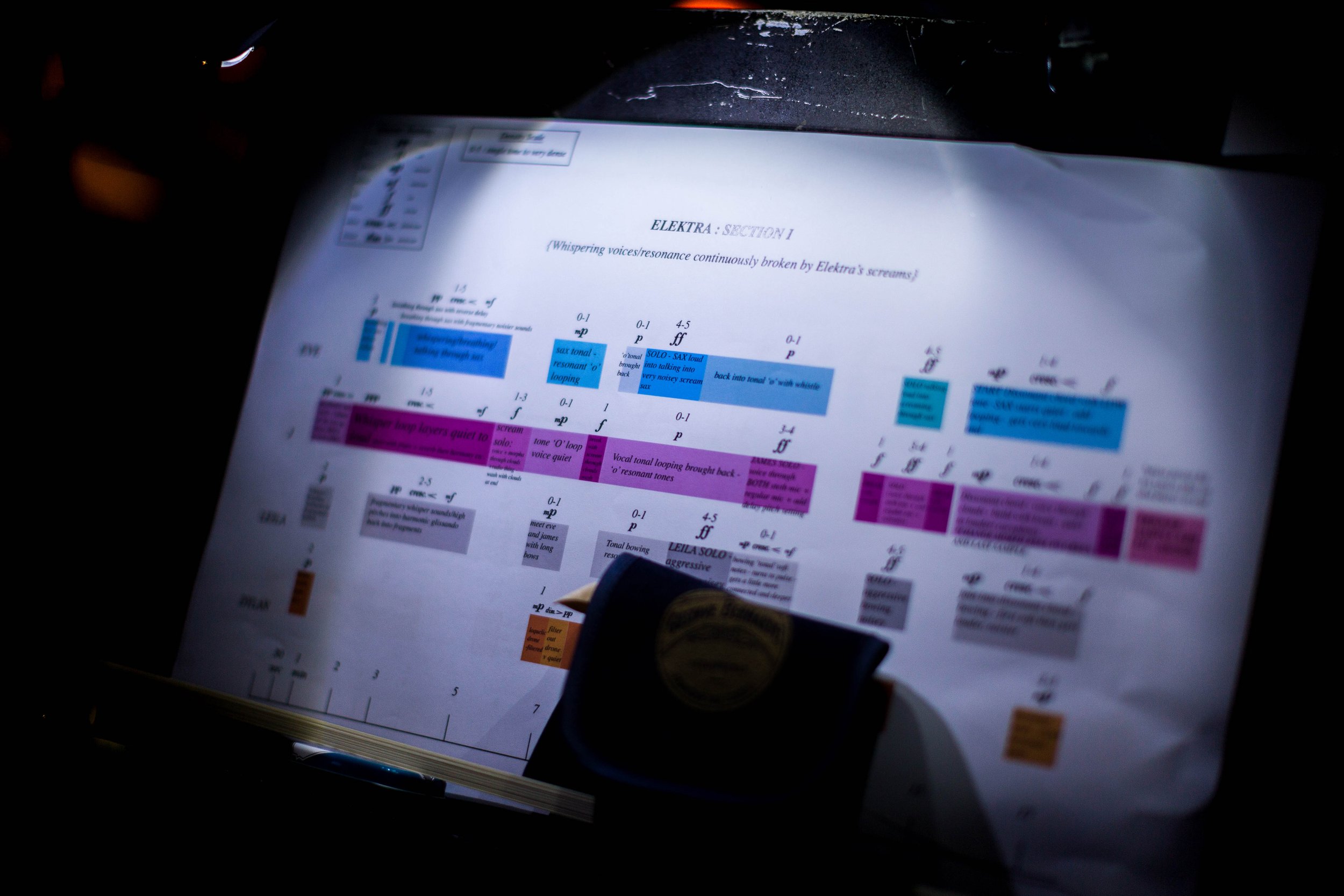

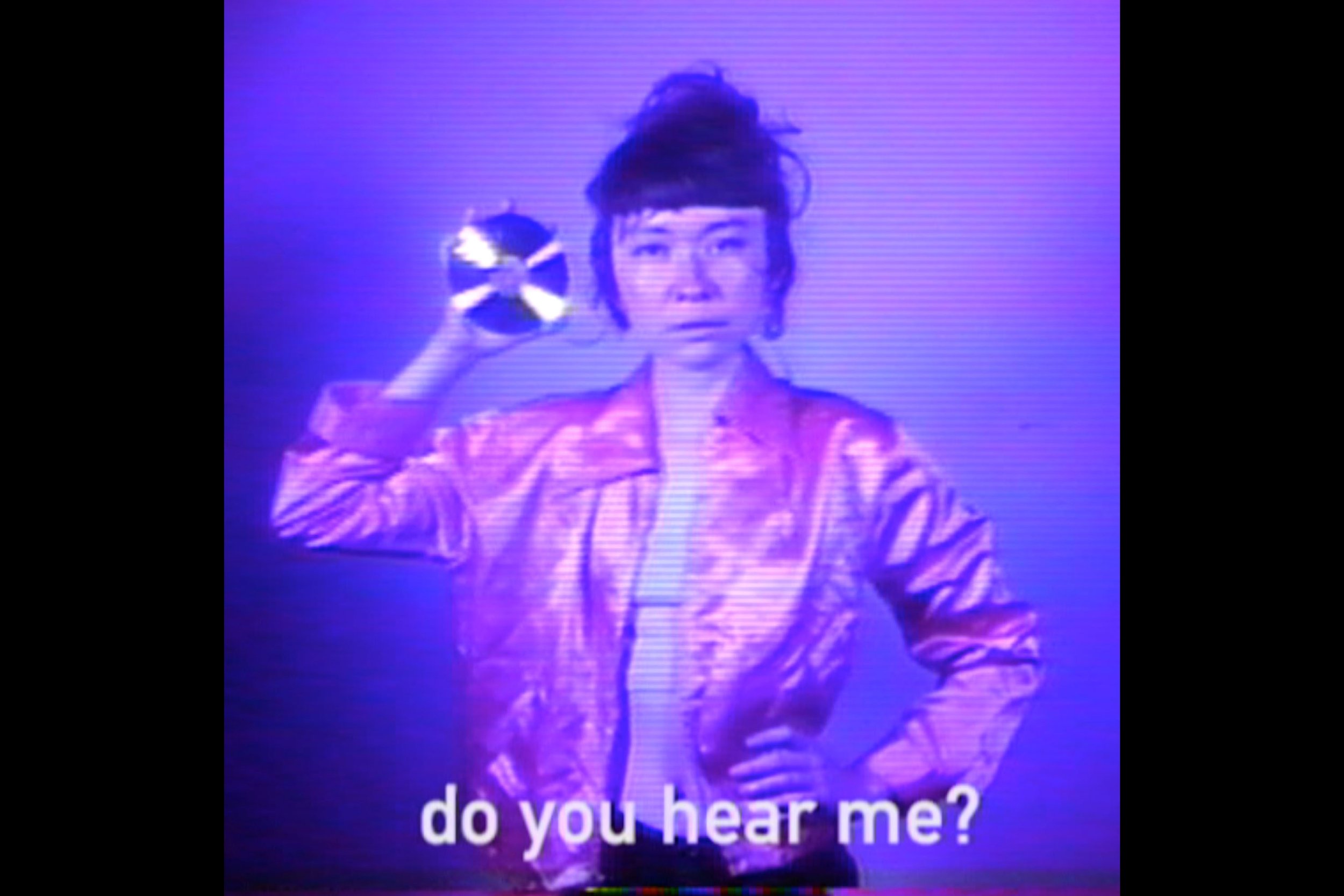
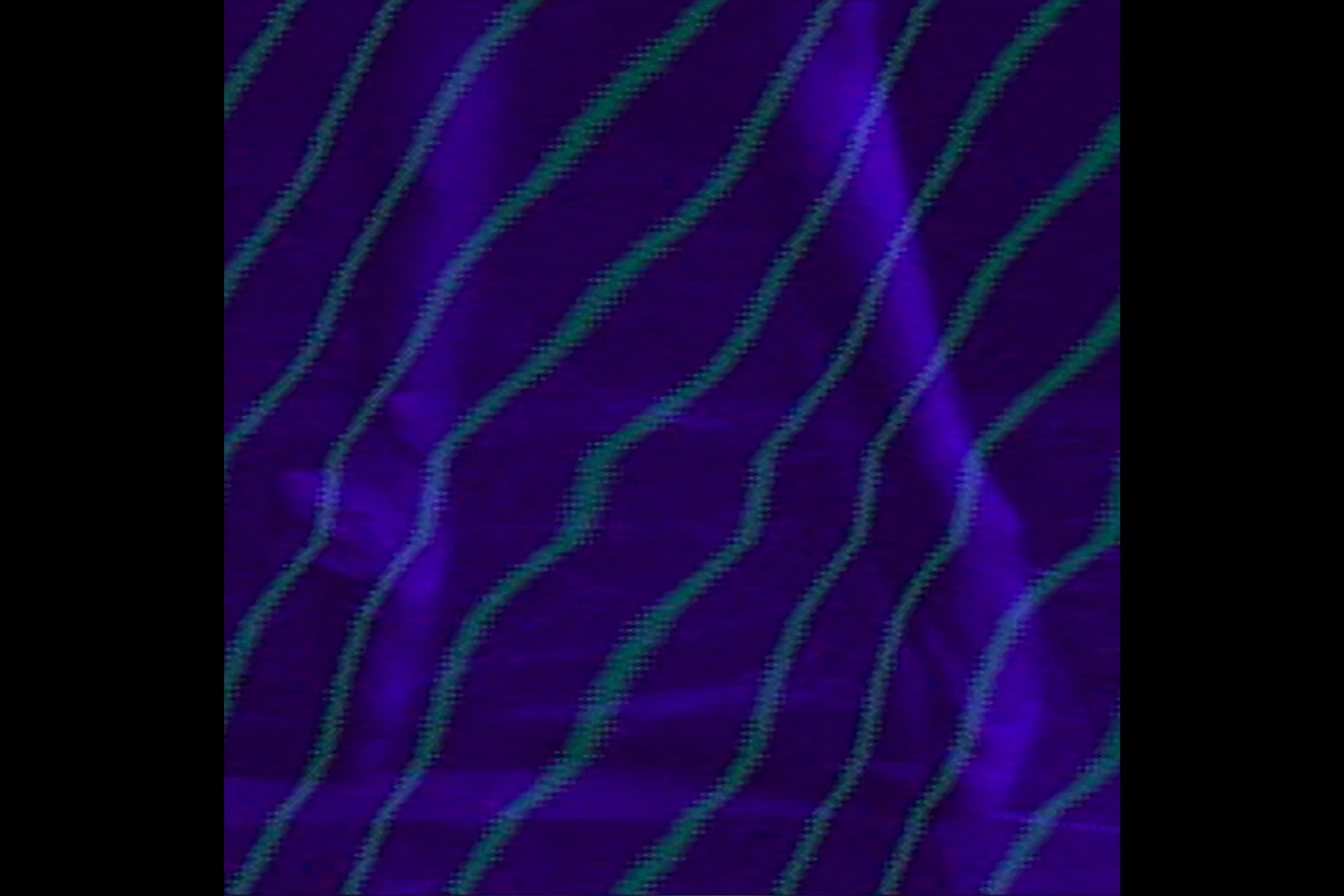
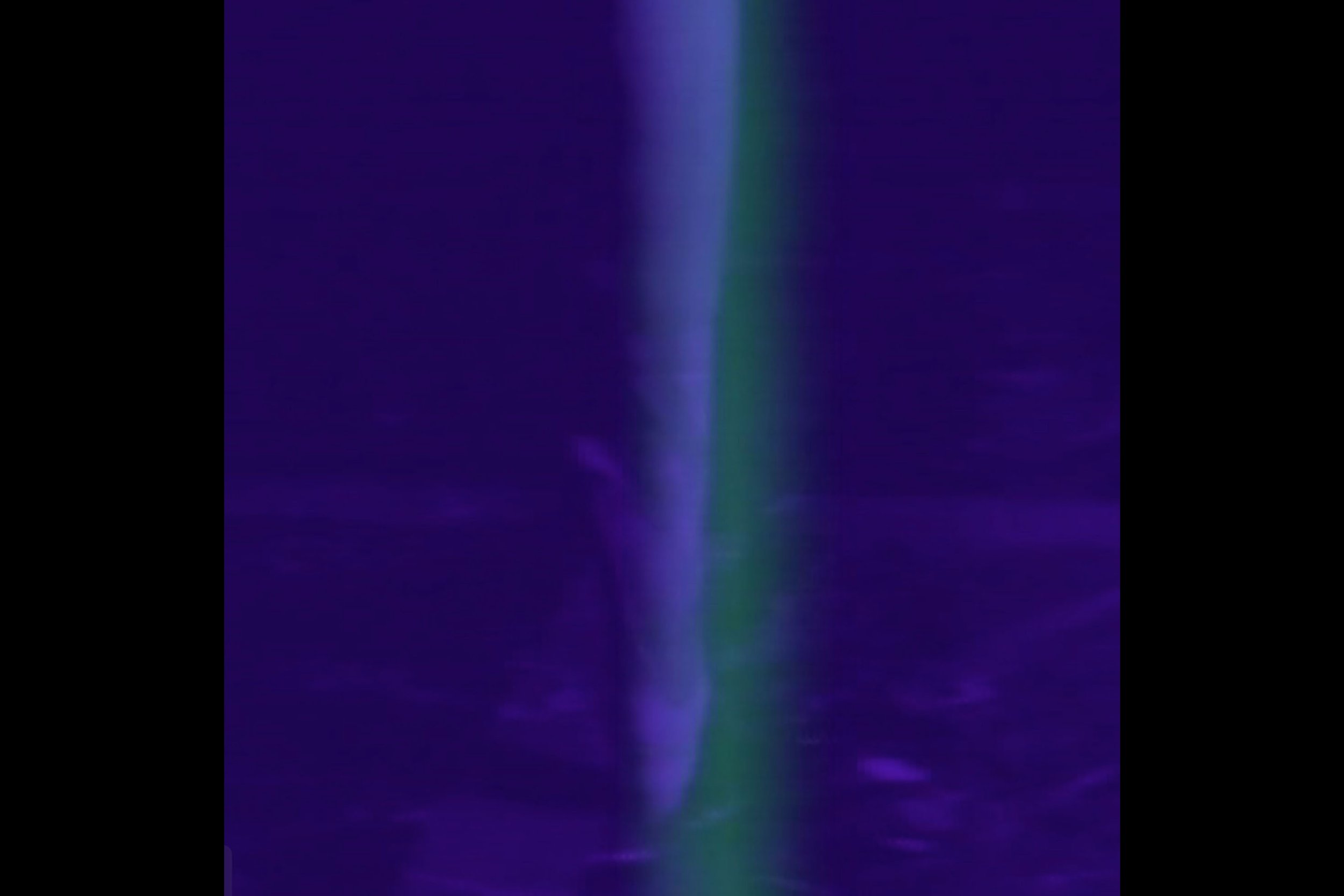
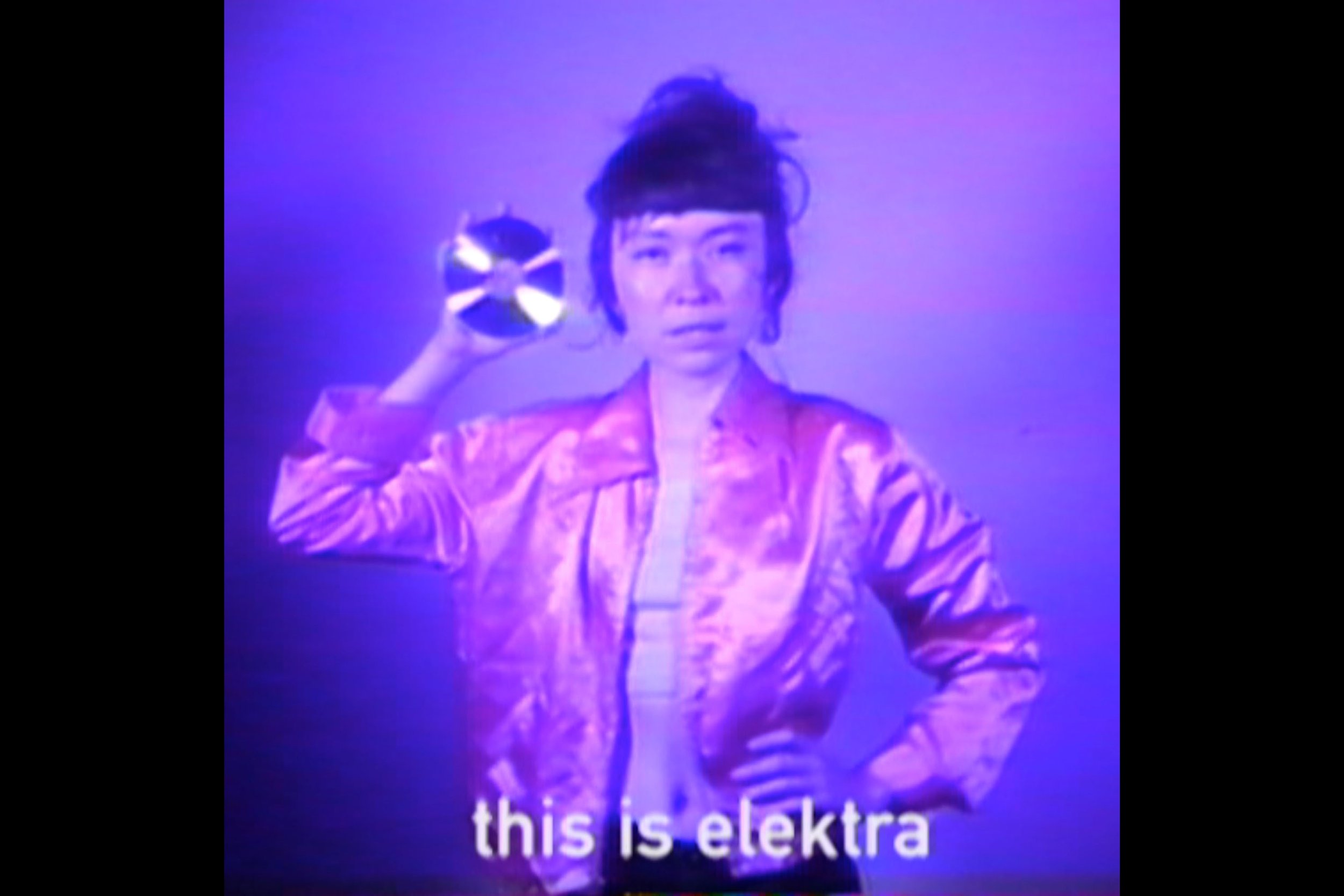
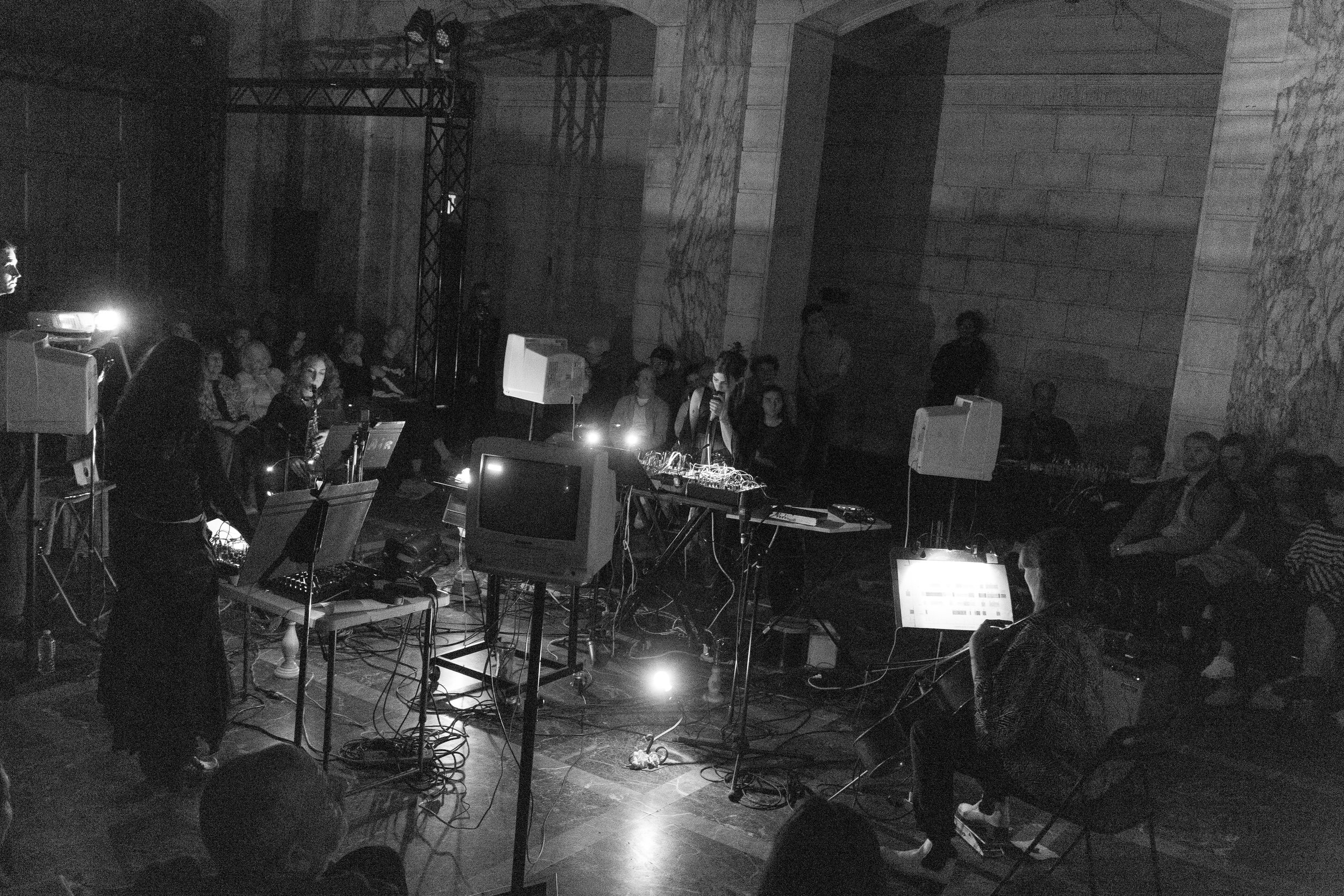
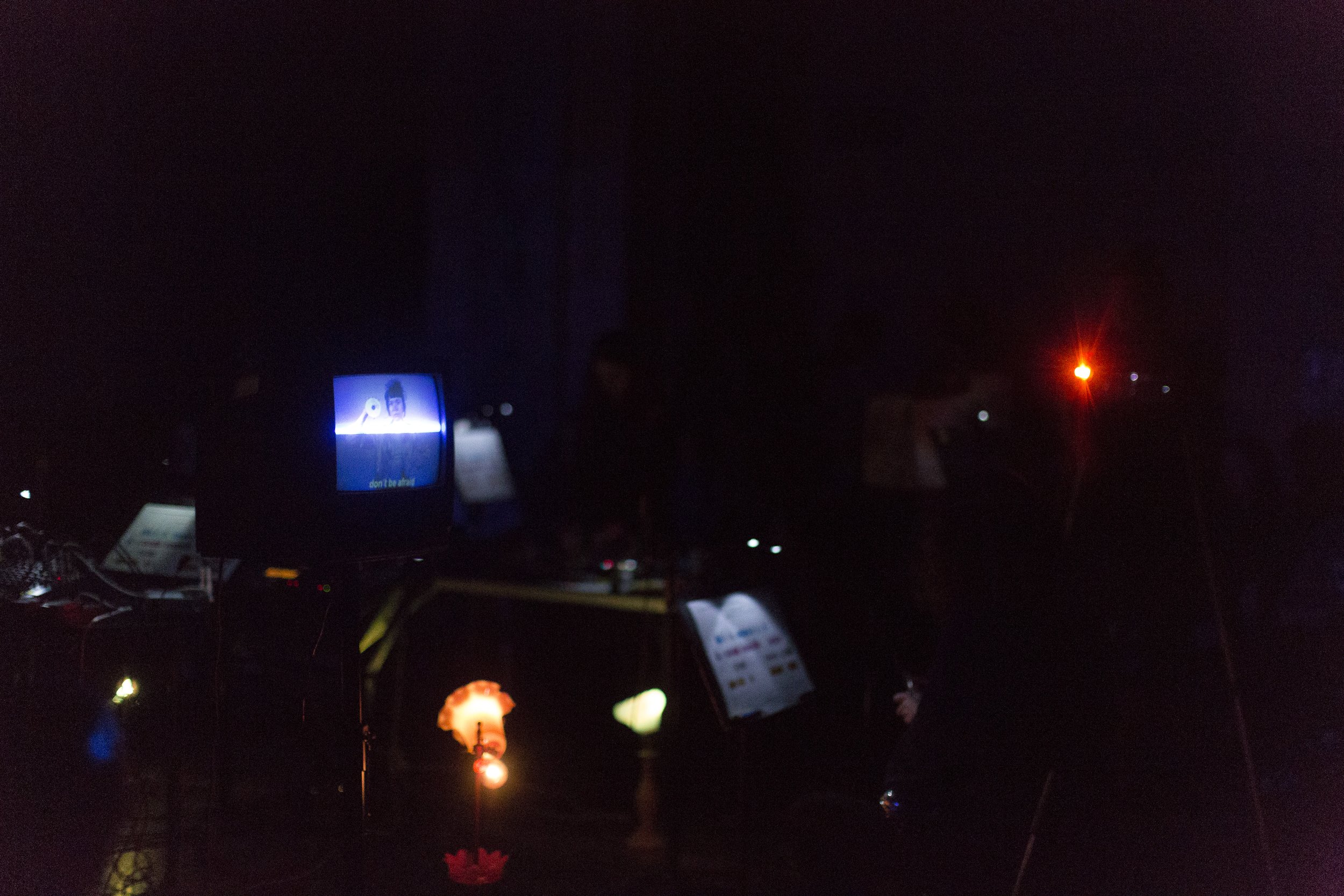




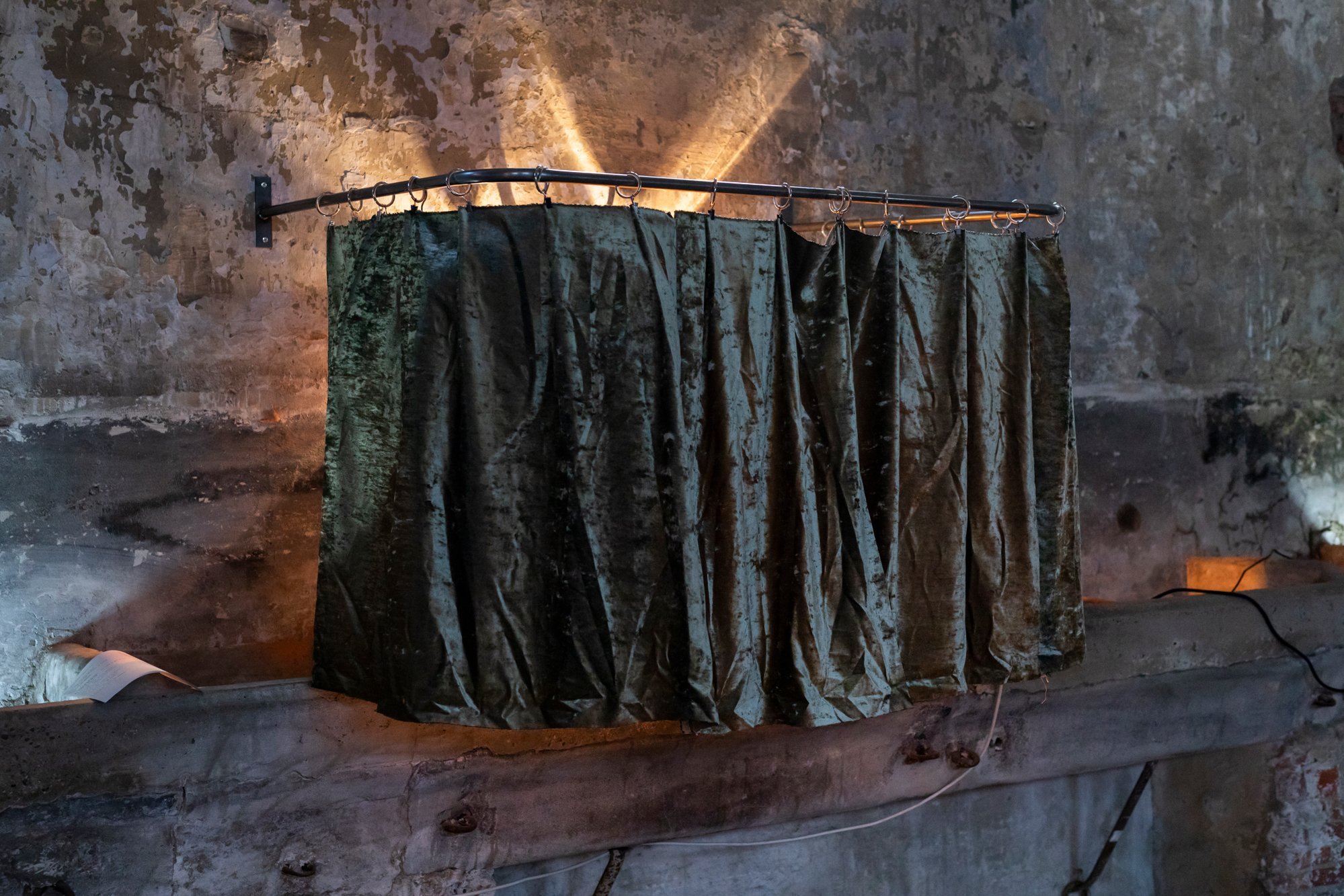
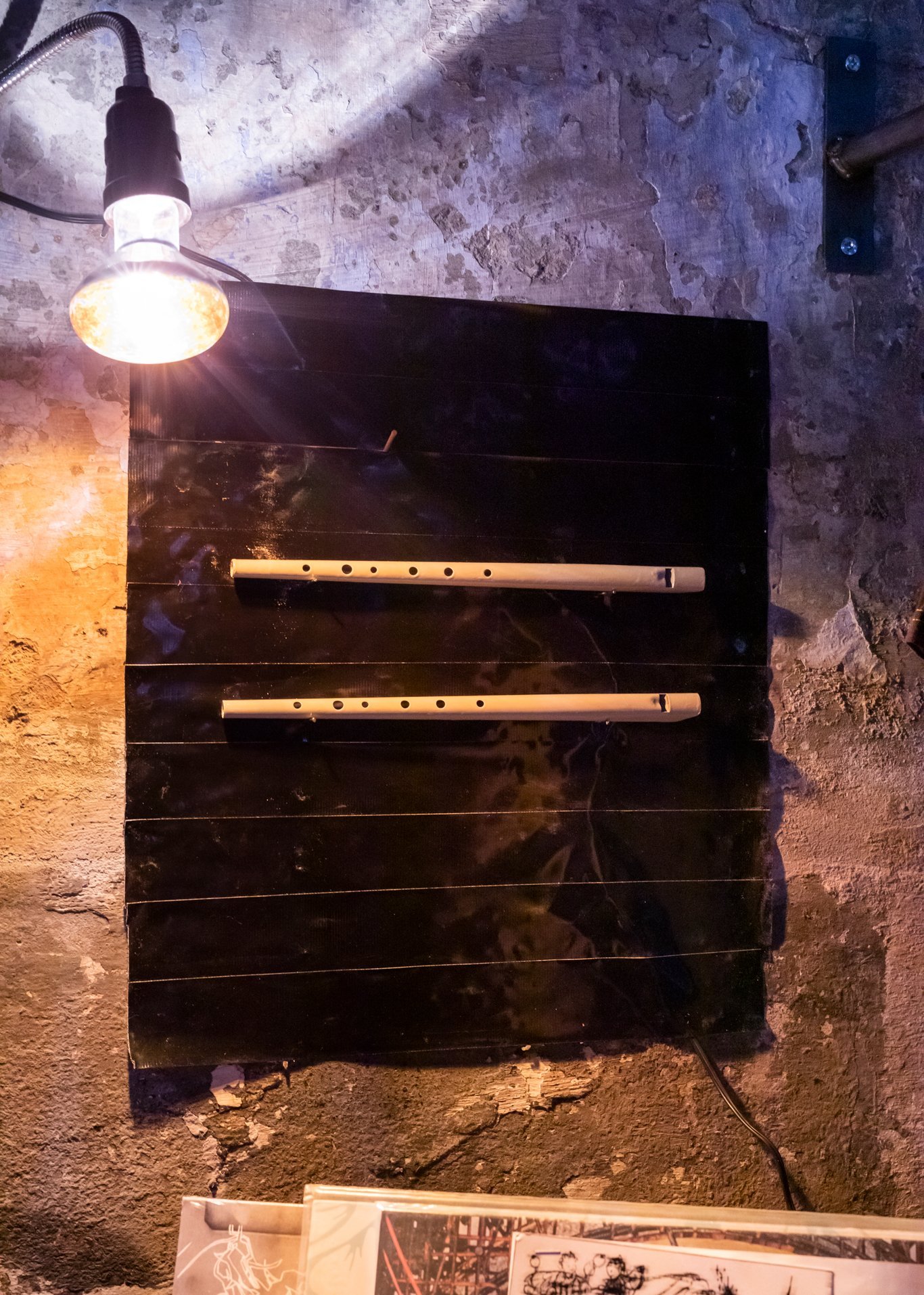

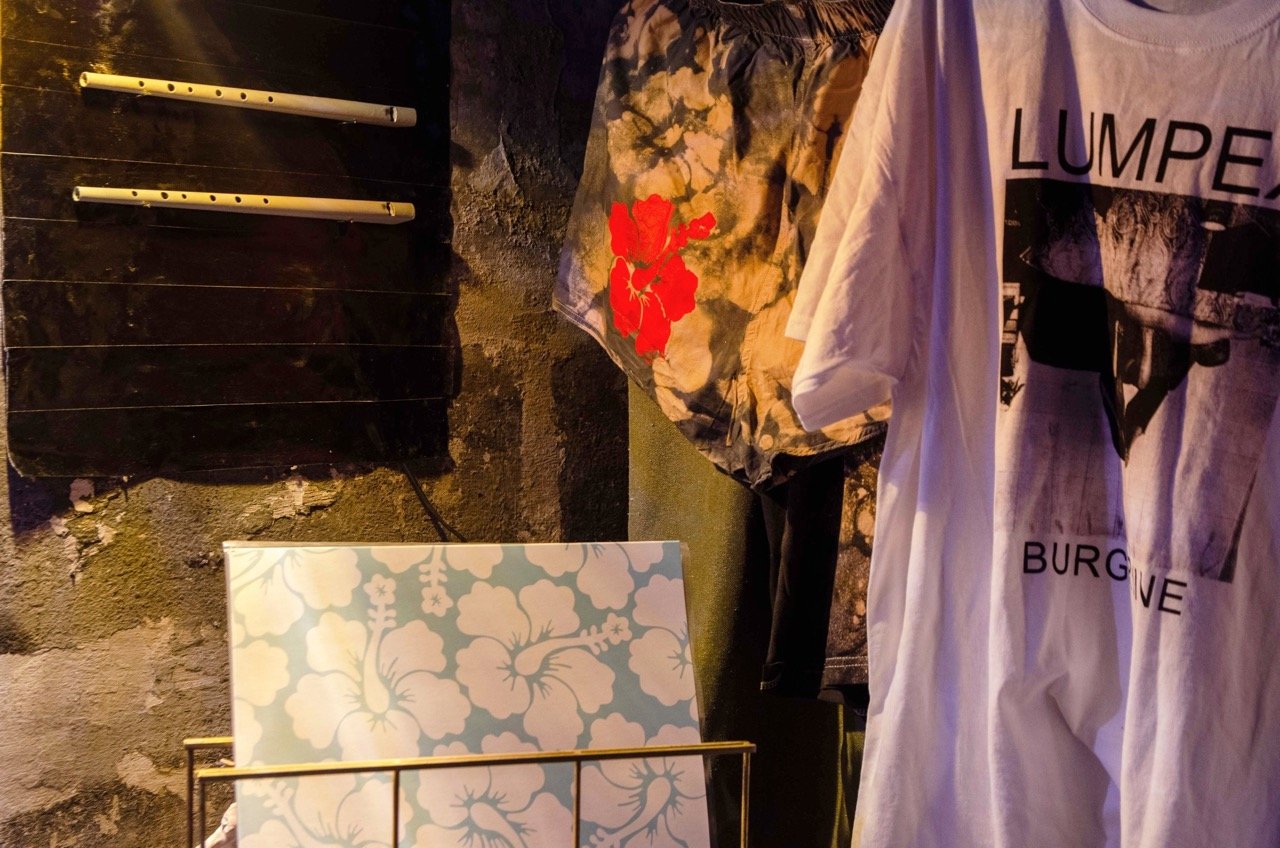
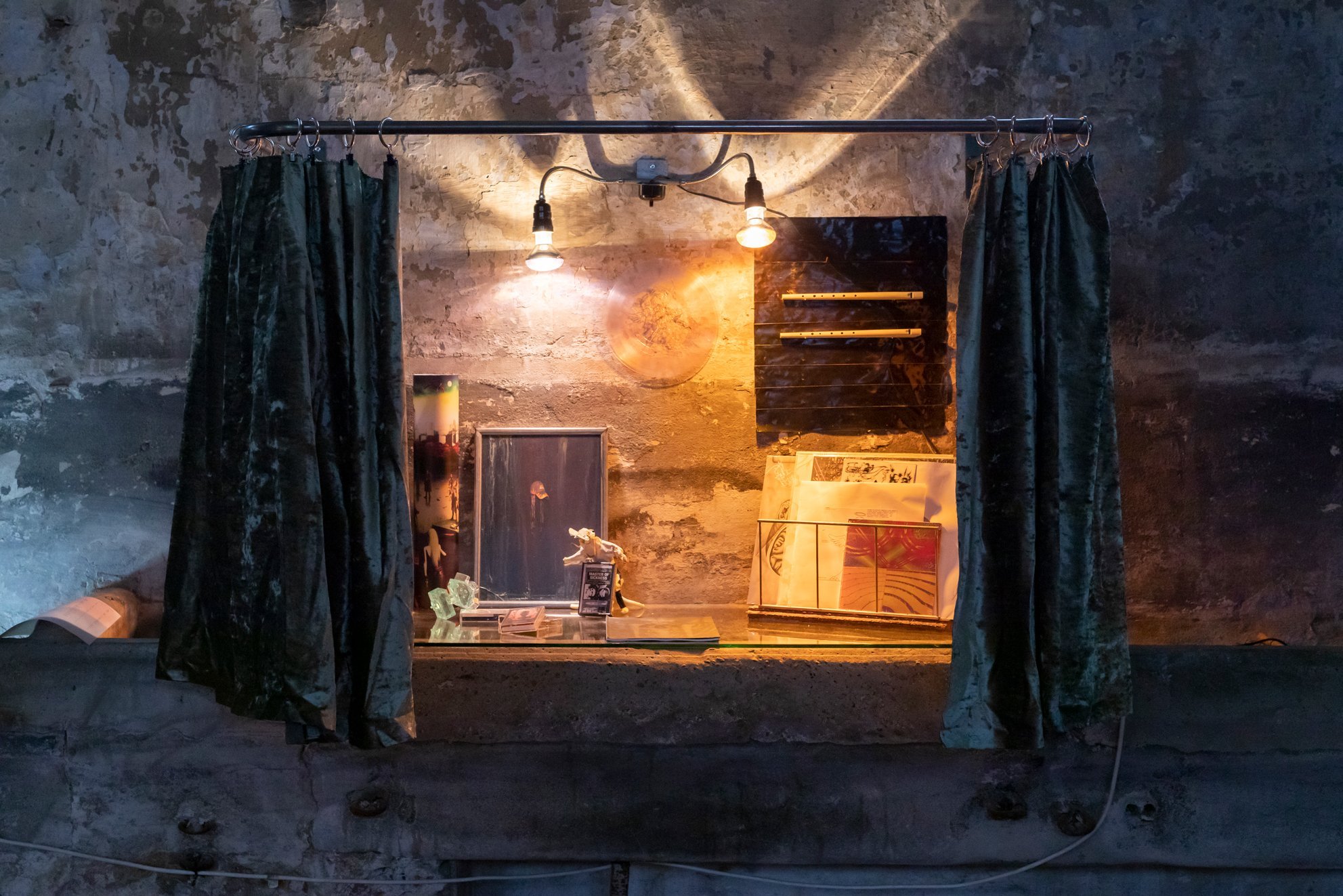
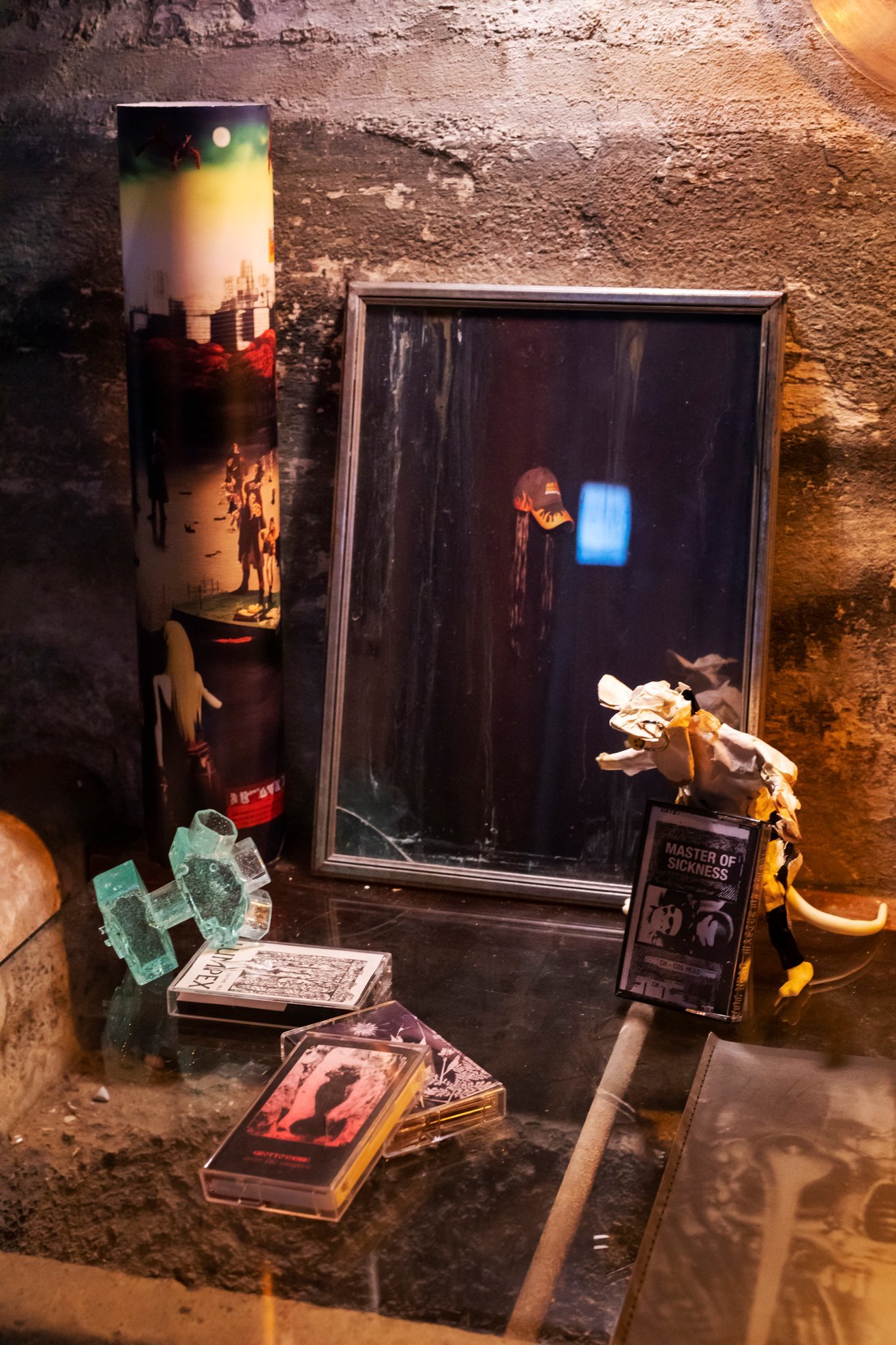
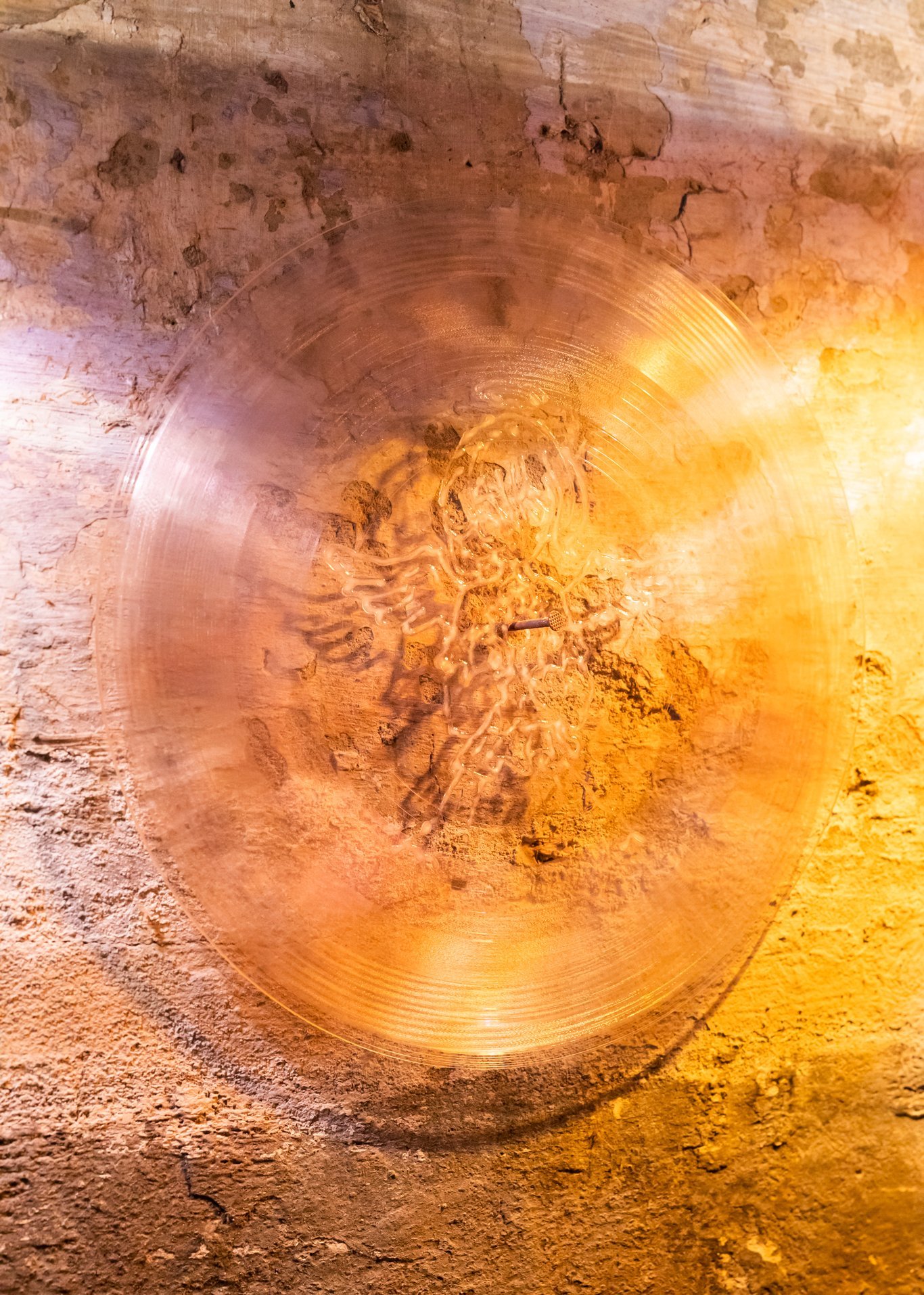
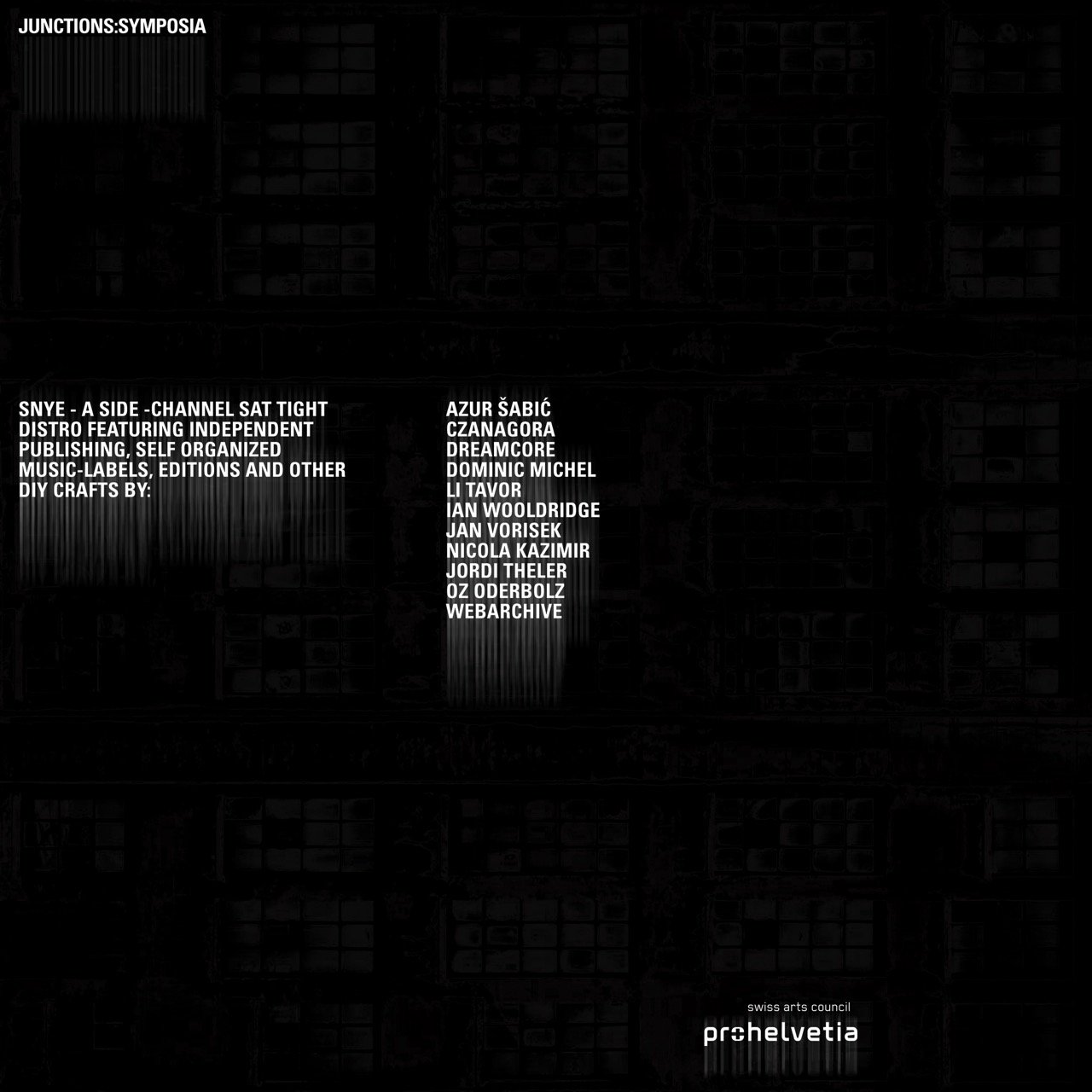
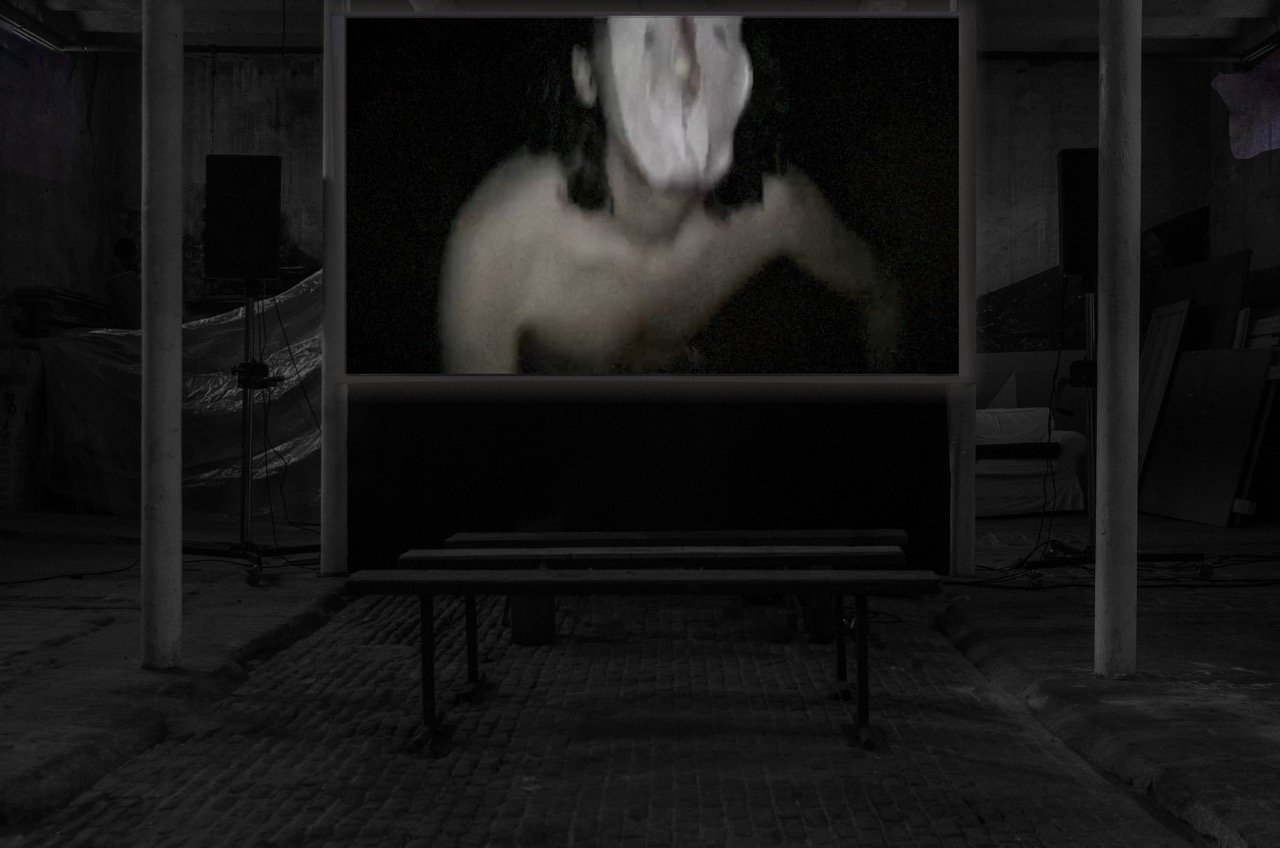
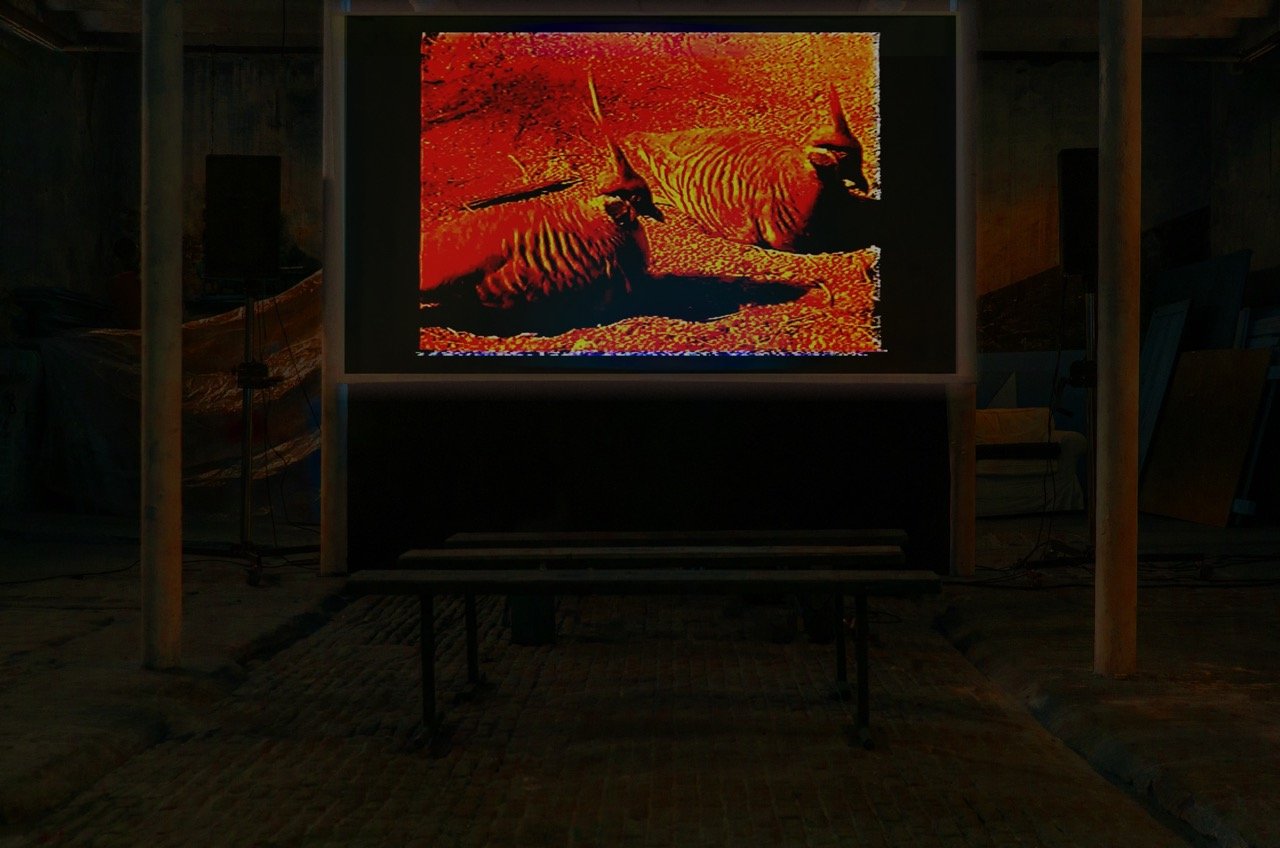
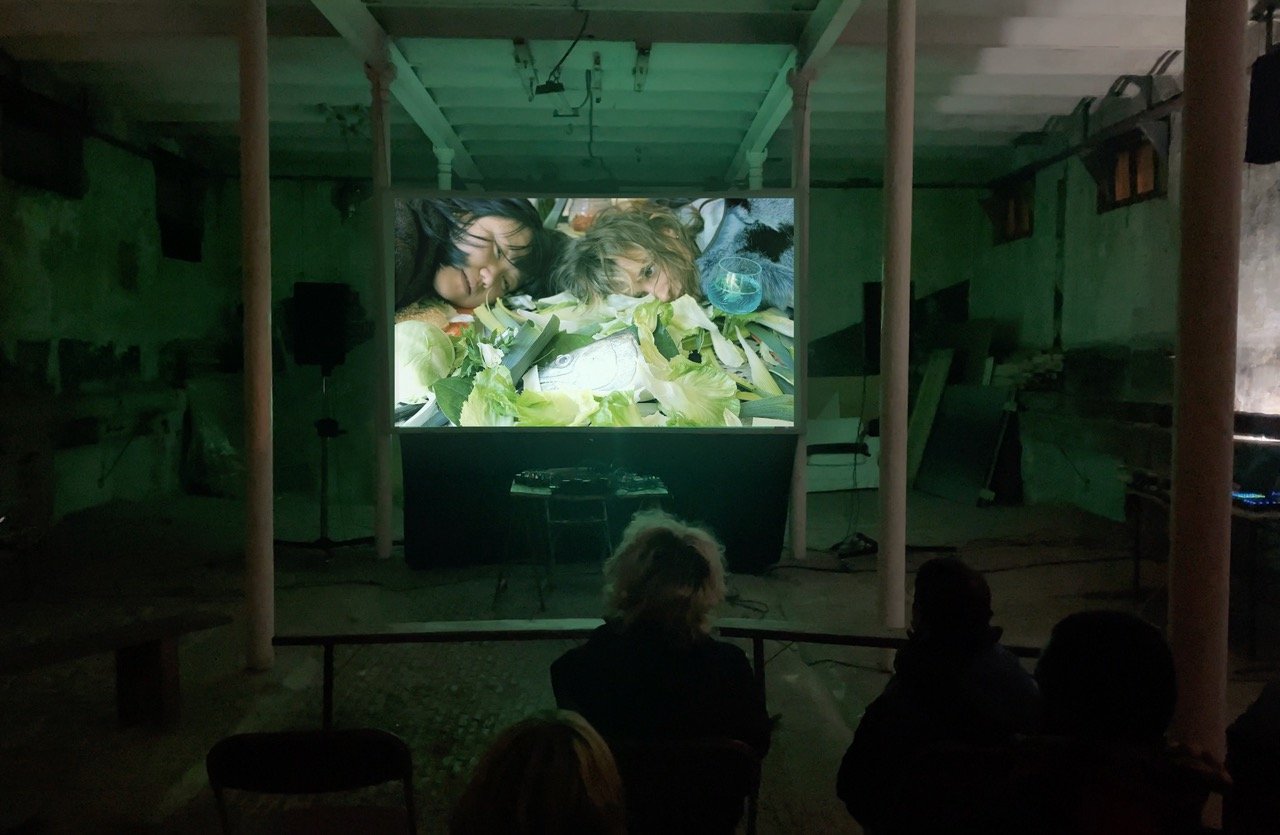
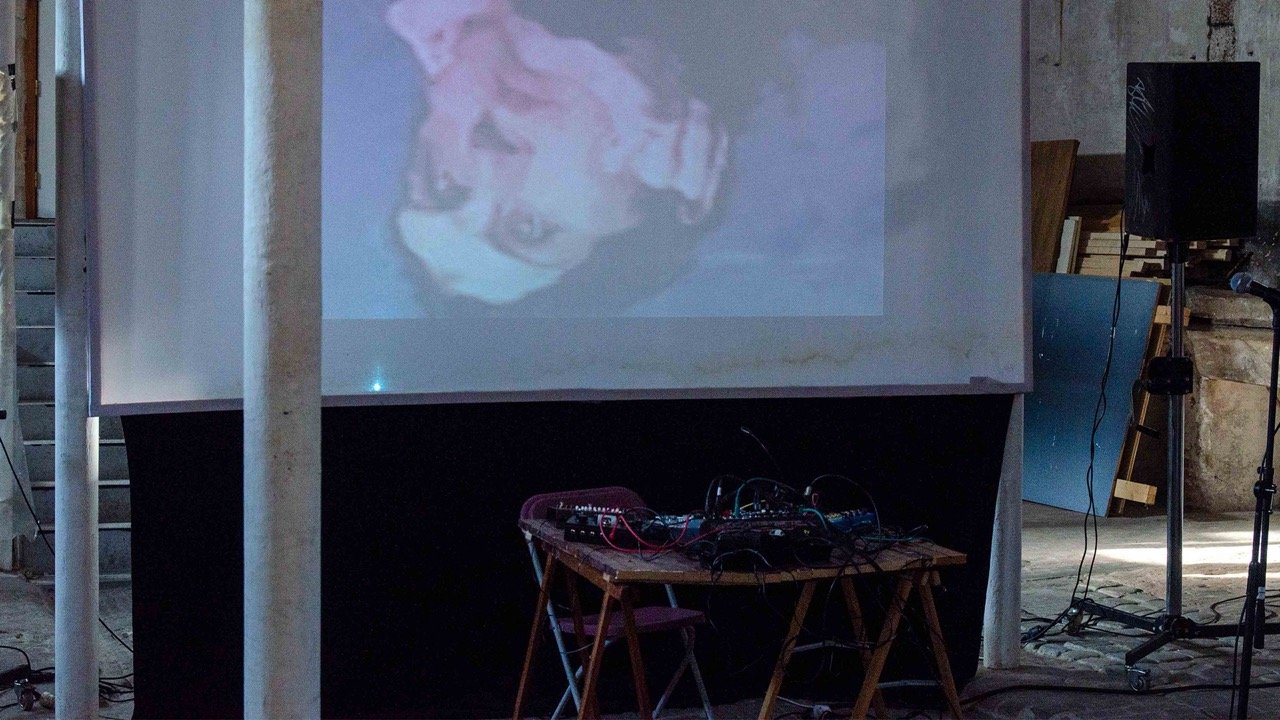
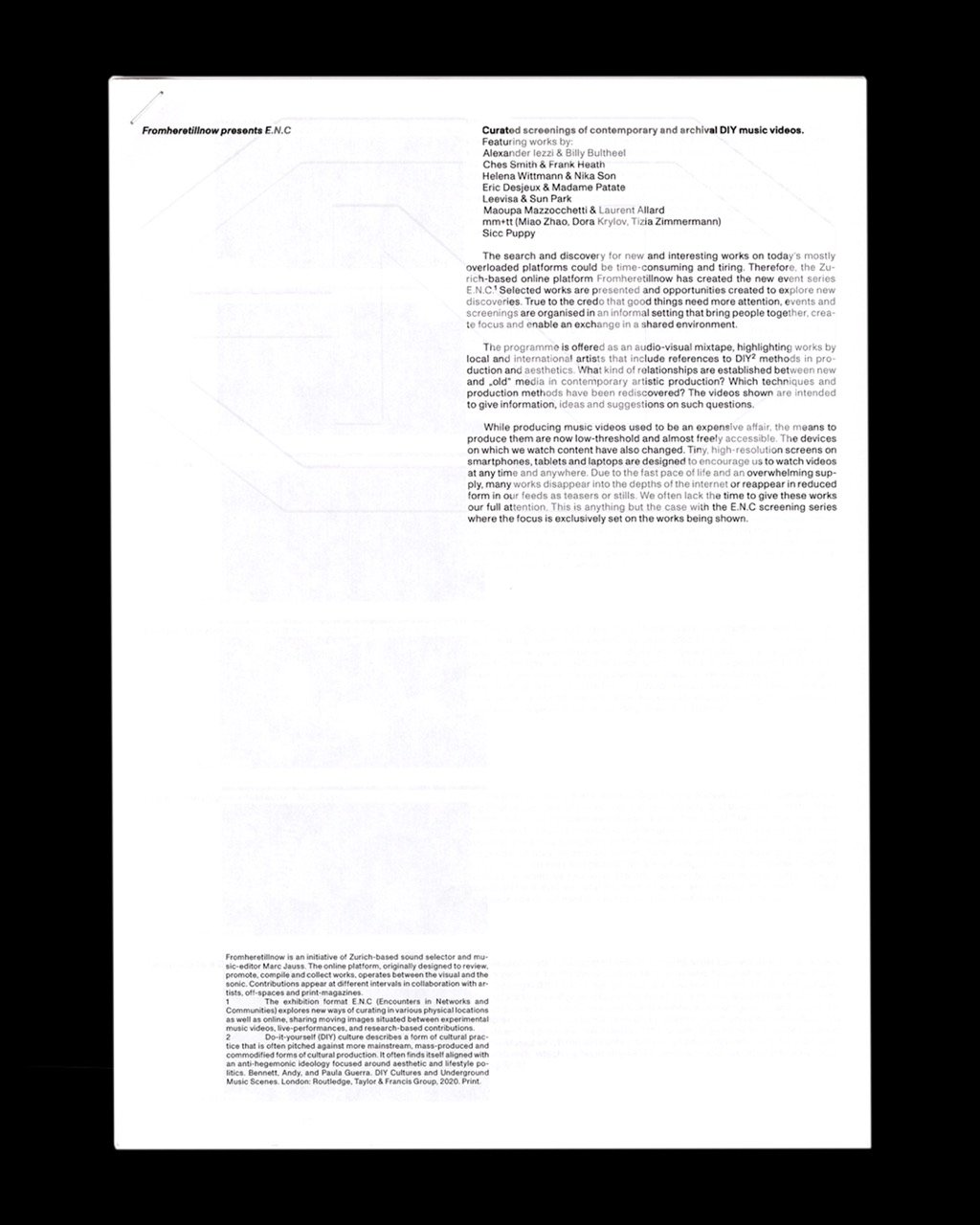
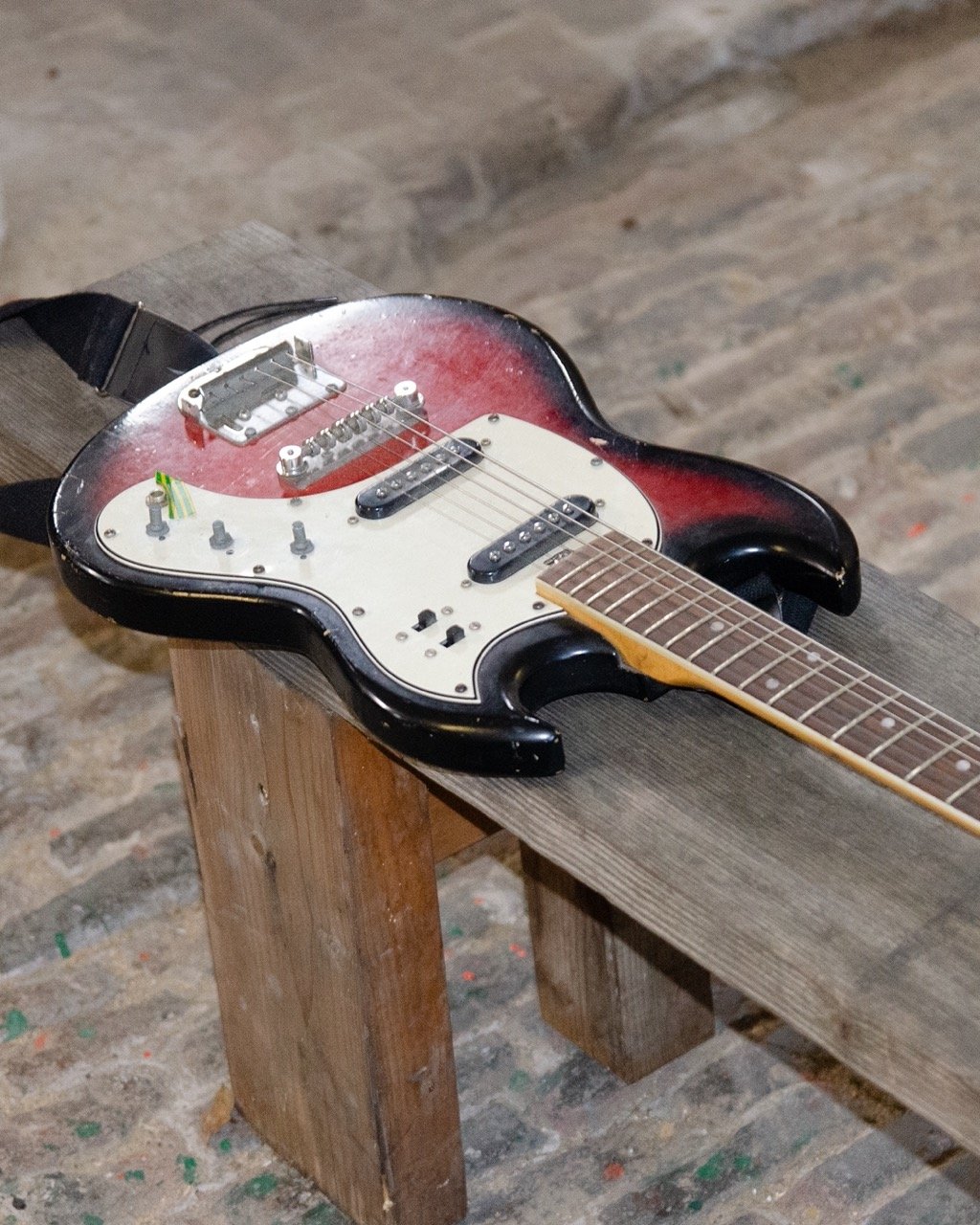

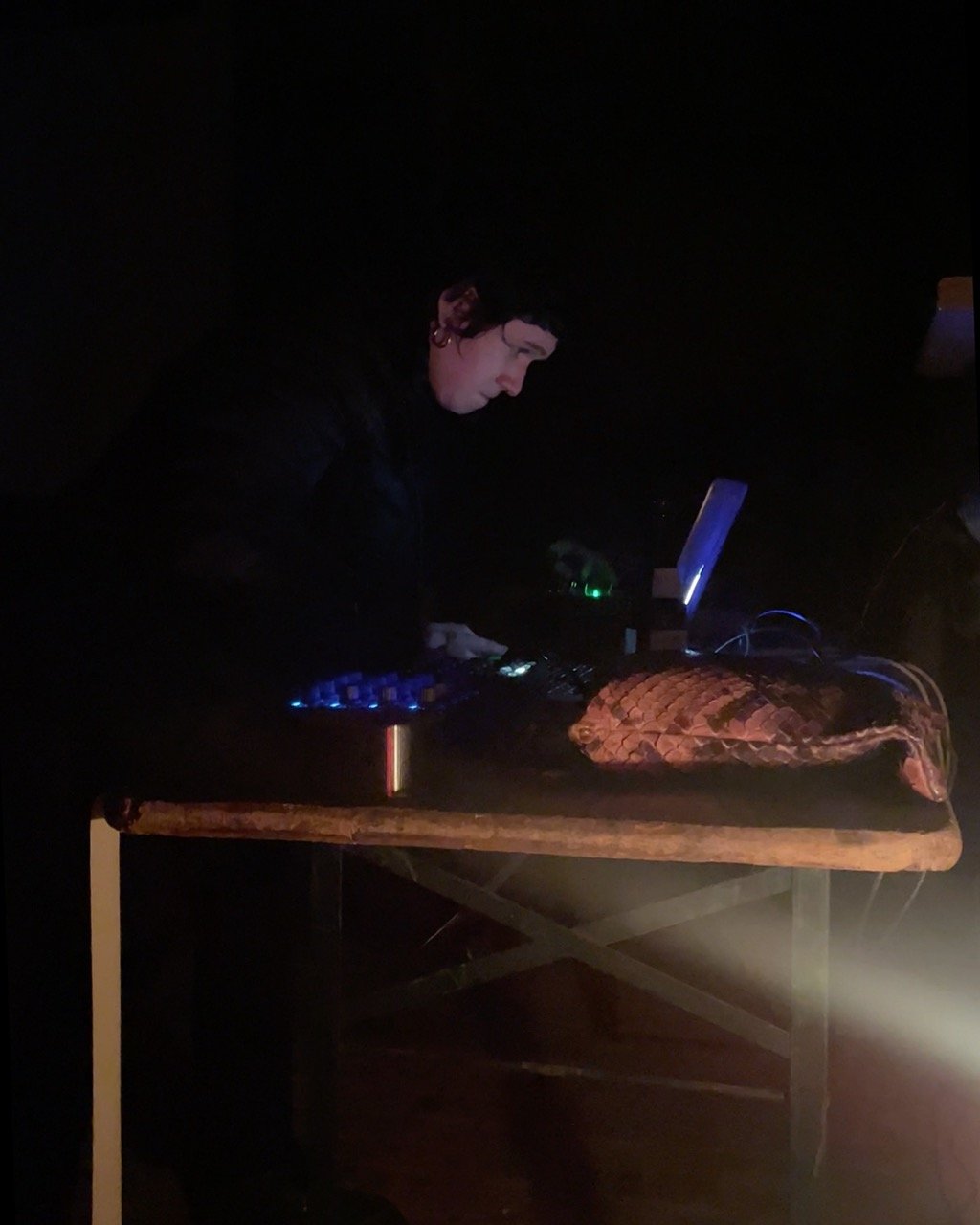
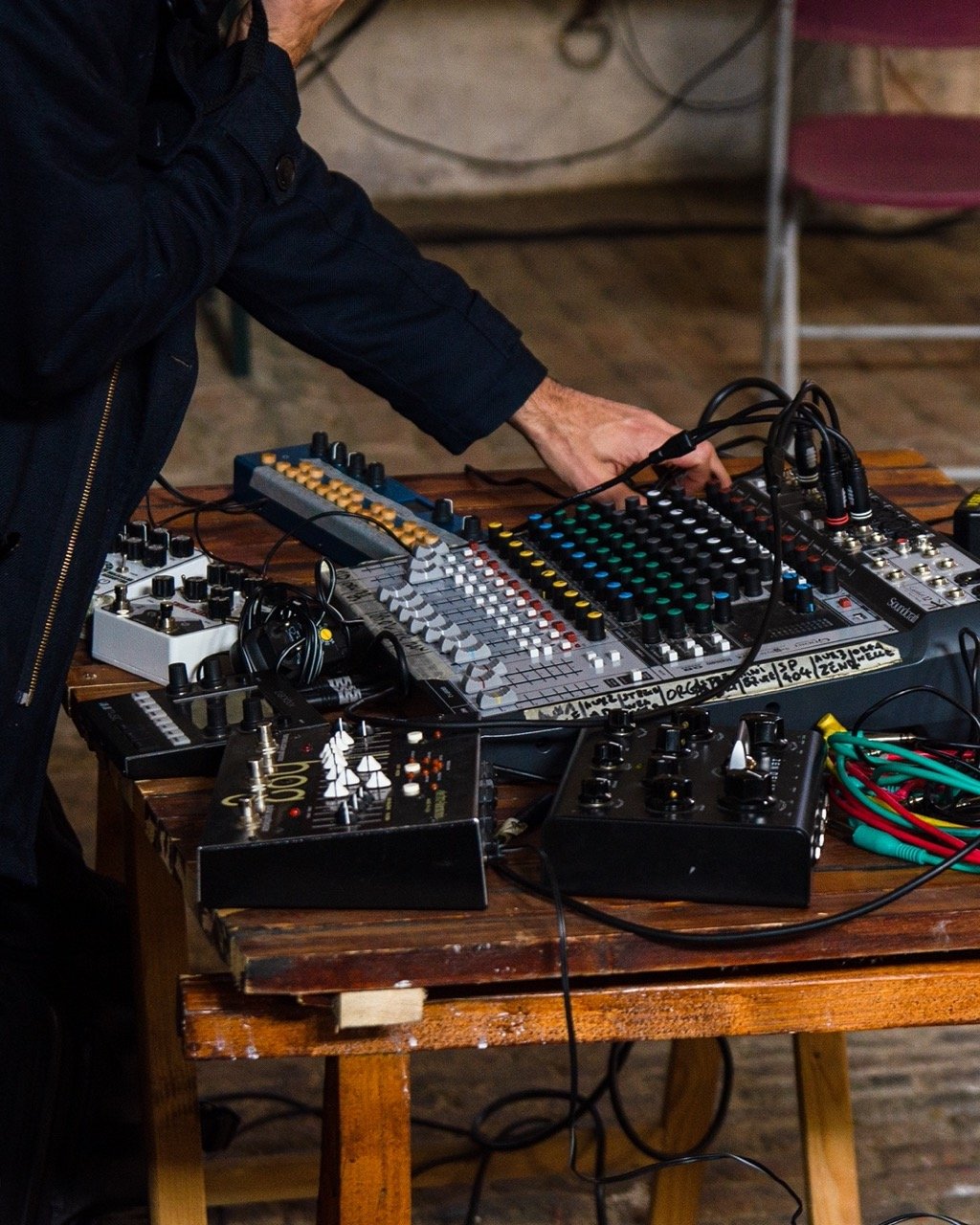
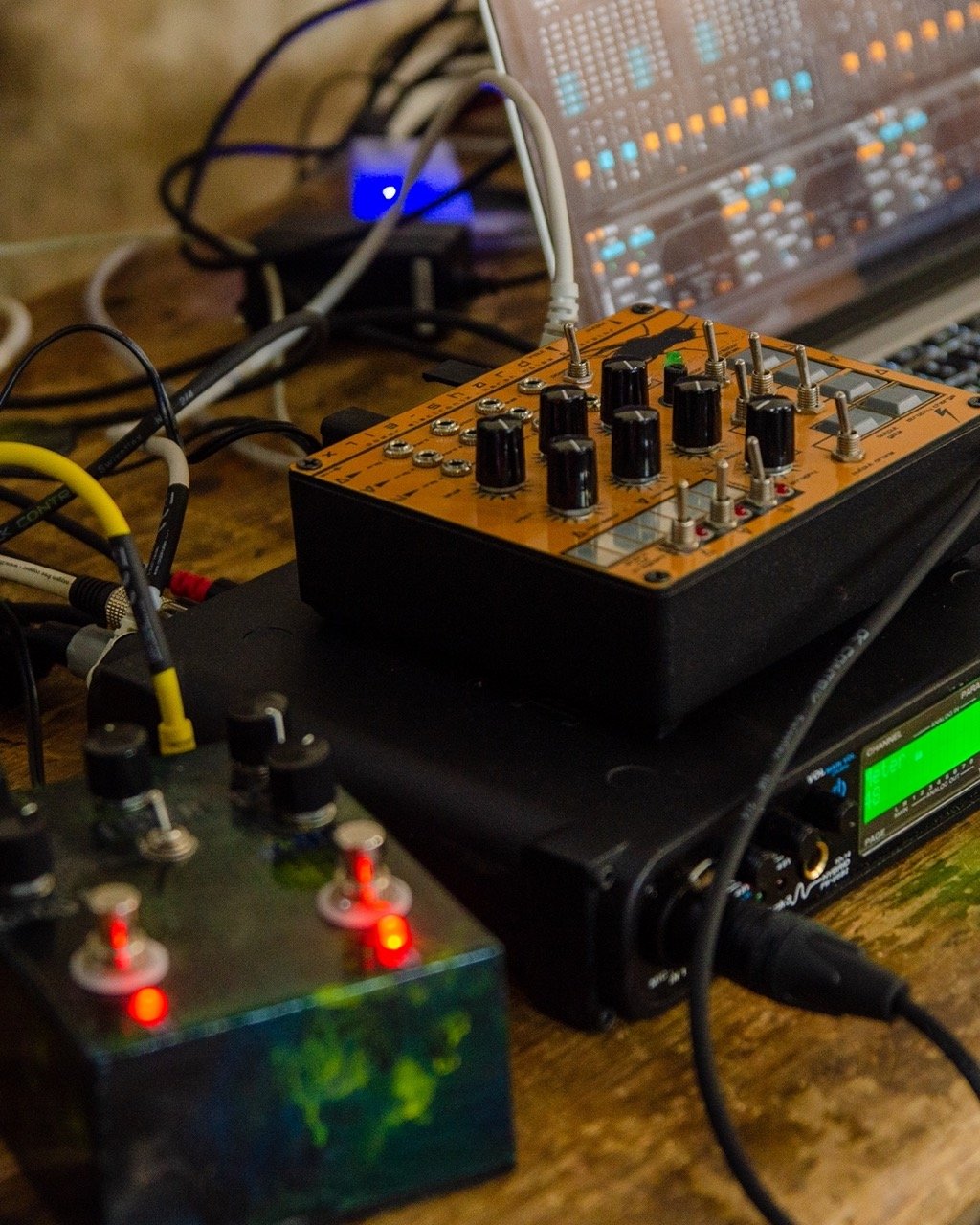
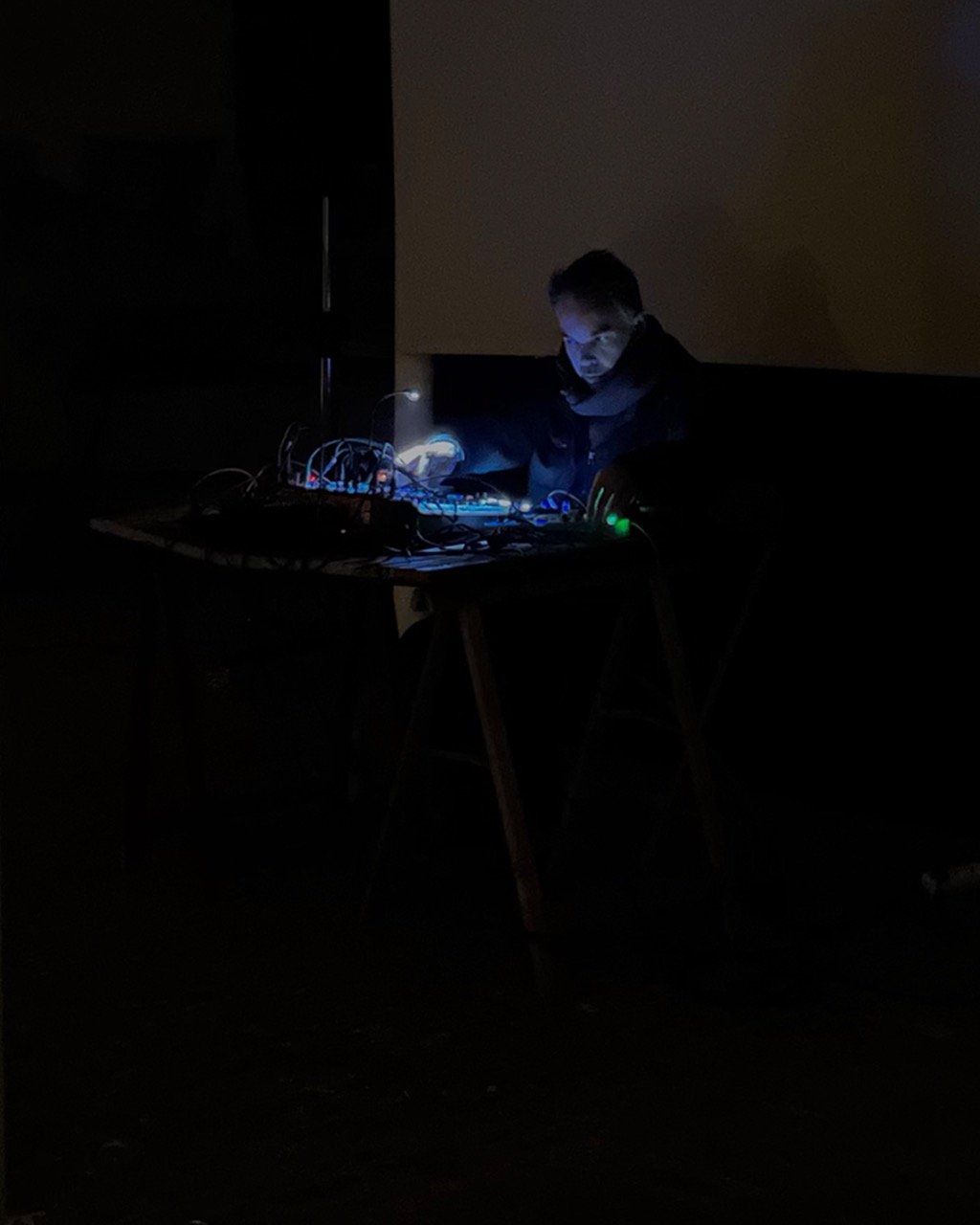









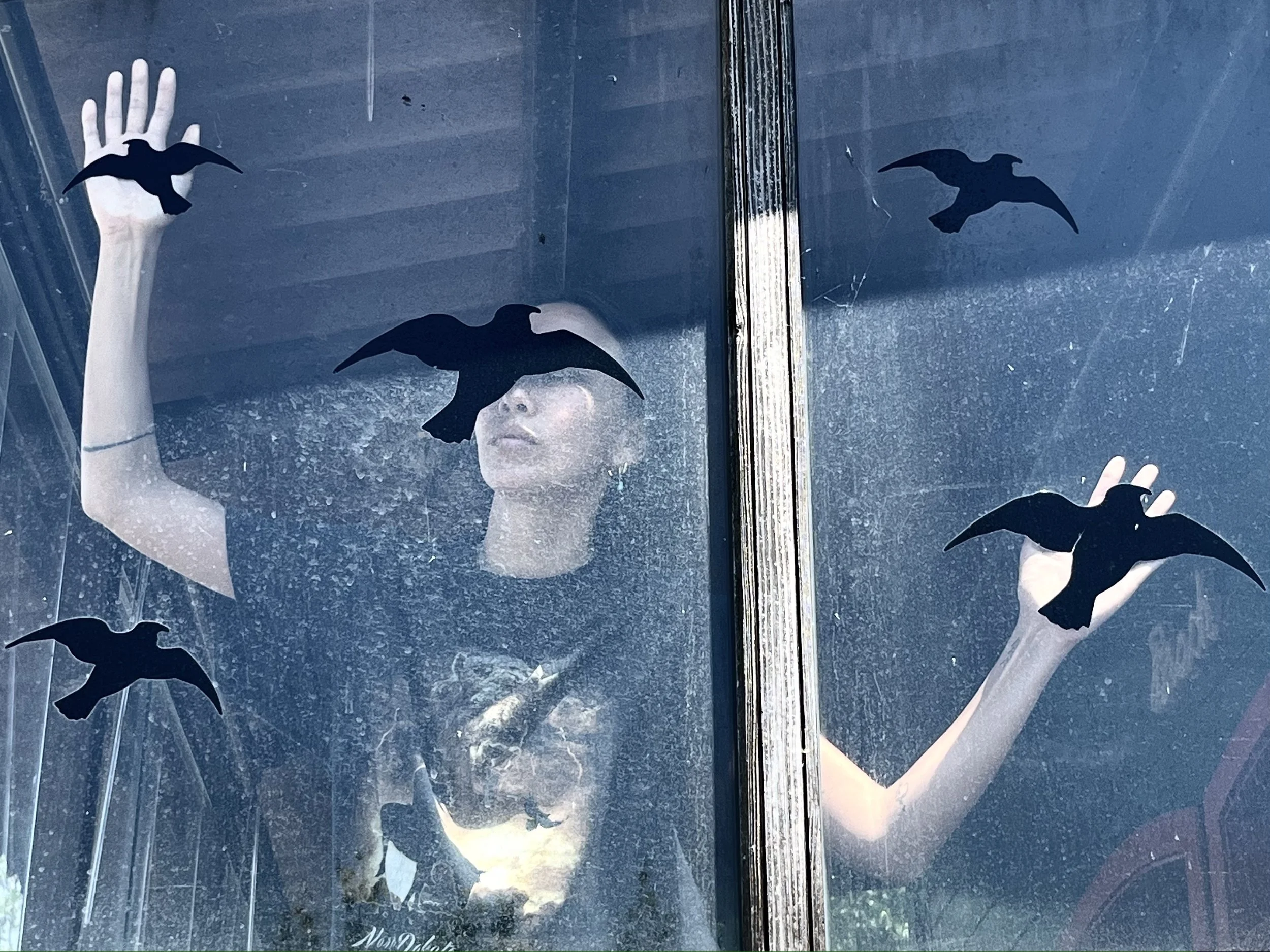















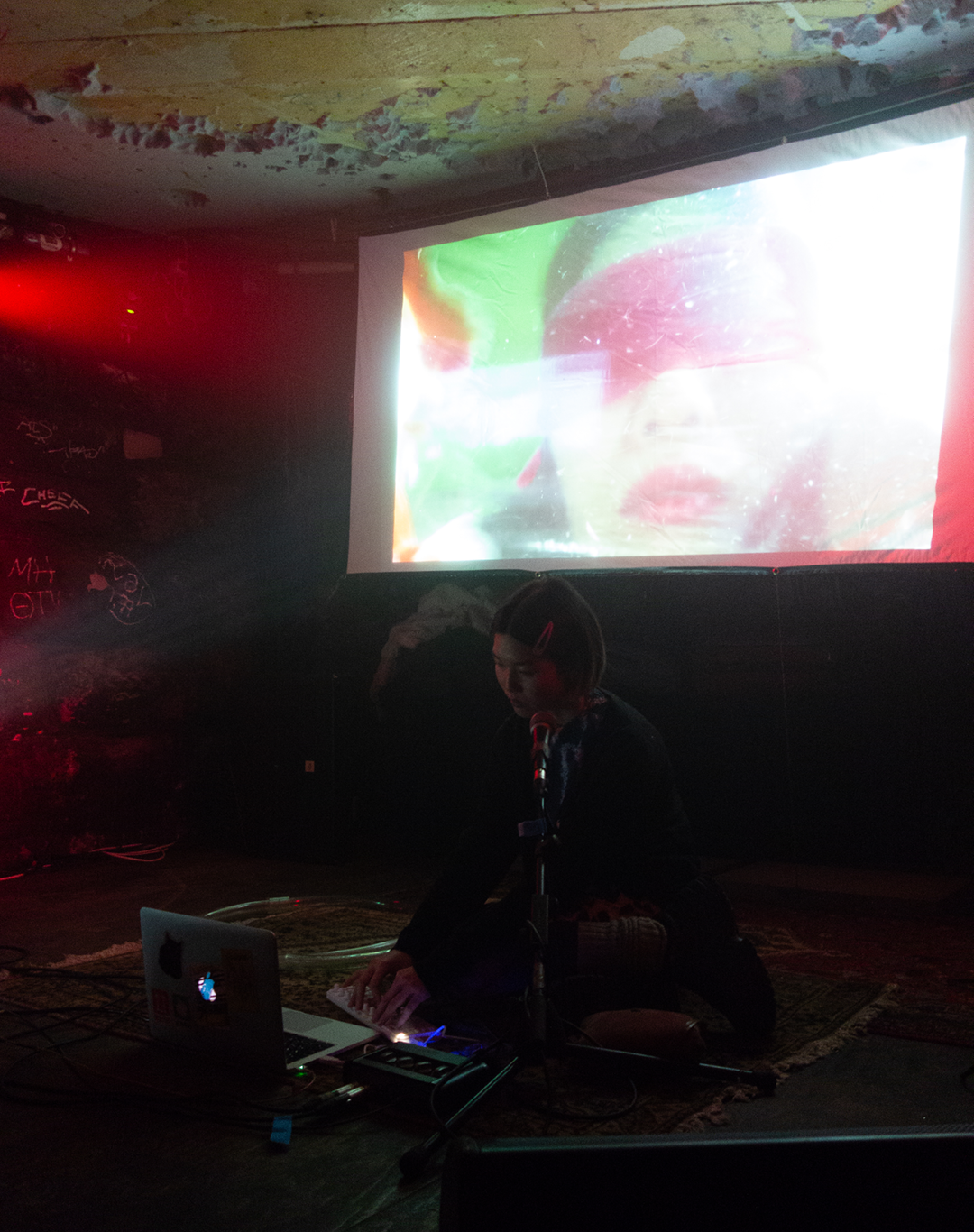




![[1] Jorge Luis Borges, El Aleph , trans. Normam Thomas Di Giovani in collaboration with the author. First published in Sur (1945). [2] Ibid [3] OOO stands for Objects Oriented Ontology, a Heideggerian school of thought that rejects the privileging…](https://images.squarespace-cdn.com/content/v1/5433ef4de4b0802bfd48201b/1611164424990-KJQ2EZDZBNCI8RLXBCX6/spacer.jpg)







